- Local Food Experiences
- Local Accommodation
- Travel Insurance
- Travel Books
- Travel Gear


What Is Immersion Travel? 11 Tips You Need To Know
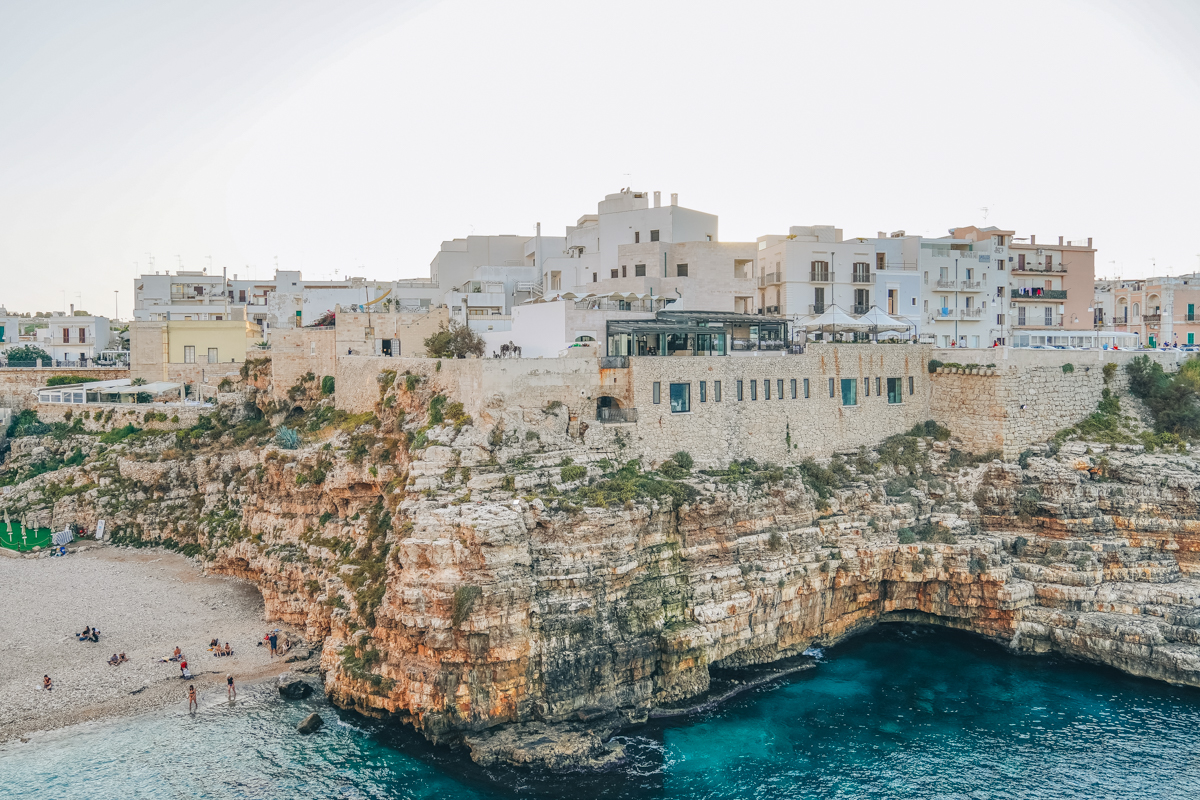
- Post category: Slow Travel / Travel Blog
Defining Immersion Travel
Immersion travel can be described as having intimate, local interactions and authentic cultural experiences. A traveler wishing to be immersed into a particular place or destination is likely to go deeper than the average tourist while also giving back to the local community.
“Go deeper & give back”
Those that set out with purpose and meaning to discover non-commercialised experiences are at the heart of what I consider culture immersion travel .
Instead of relying on a big tour operator or staying with an international hotel chain, their travel will more likely be DIY (do it yourself) style, meaning it could be a little bit unpredictable and adventurous.
Immersive travelers will focus on making connections. They will not only meet locals, but will probably find some like minded travelers along the way too. They want to participate and appreciate local culture while also respecting it.
Immersion travel experiences should be ethical and beneficial to the community. This means that locals should get to celebrate their culture while educating tourists and making a sustainable living.
Disclaimer: This site contains affiliate links that will cost you nothing extra but offers me a little commission for any purchases made. This helps me continue to offer helpful tips and information. Thank you so much for your support.
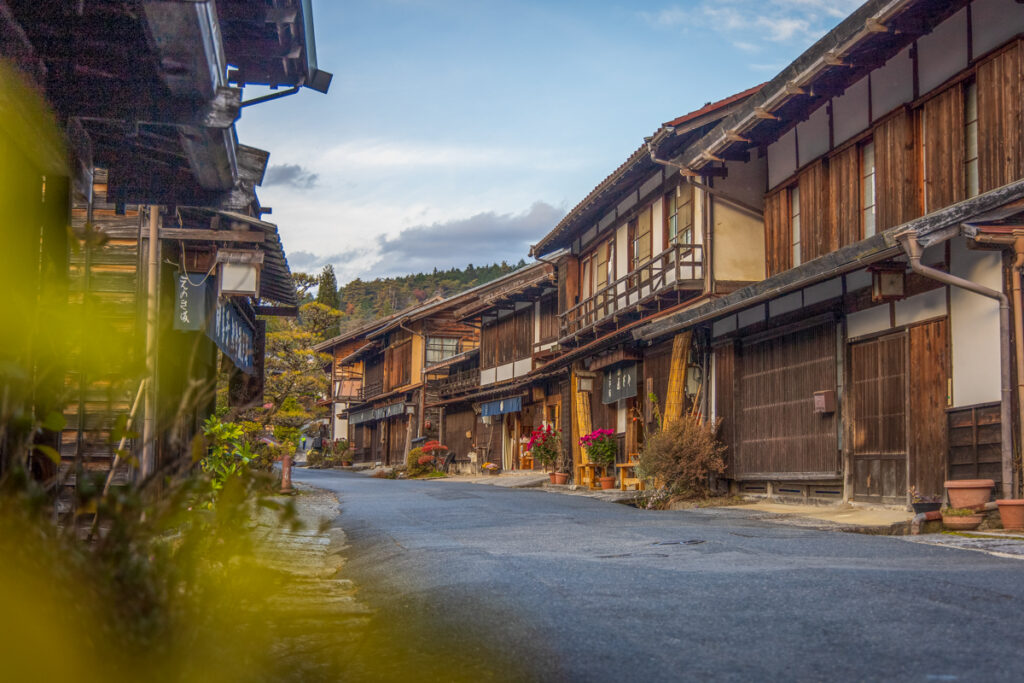
Why Immersion Travel?
From talking with others and my own opinion, I think people choose immersive travel because it interrupts monotony. It can pop someone’s safety bubble, broaden their comfort zone, and build confidence.
Being immersed can lead to expanding knowledge and stripping away stereotypes. It can help open opportunities and build connections. There is more of a chance to experience authentic culture and learn / practice a language.
Besides just personal development, it is also easy to implement, cost effective and will help local economies. By taking on immersion travel, a traveler helps aid in the protection and preservation of other cultures.
Is Immersion Travel For You?
Here are some questions to ask yourself:
- Are you open to being completely engulfed by new sights, sounds, smells, people, and challenges?
- Do you want to experience the world in hopes of understanding it better?
- Are you not afraid to talk to locals about real life topics like politics and the local economy?
- Do you want to get away from selfie culture, bucket list mentality, and big vacation resorts?
- Do you want to travel with purpose for meaningful experiences (the kind that are unique and can not be replicated by big group tour companies)

11 Ways To Adopt Immersion Travel
#1 share a meal with a local / learn to make local cuisine.
Besides the obvious fact that food is a huge part of every society, food can also teach us so much about history, and each other. Discovering local foodie gems is pretty much what I live for.
Usually, the easiest way is to visit a restaurant known for being run by locals and have local dishes.
These can be found a number of ways, but I check on Tripadvisor by searching ‘local food’.
Diving even deeper into the local scene could require a little more digging and effort. Thanks to new apps and websites, it is starting to get simpler though!
An amazing online platform to help you get into the local foodie scene is Eatwith!
Discover how you can connect with locals by visiting local markets together, attending a local taught cooking class, or sharing a meal in a local home.
Use my code, CD2C35BB on Eatwith to get €10 of free credit when you do your first experience!
If you are interested in finding the most authentic food experiences, read my guide here .
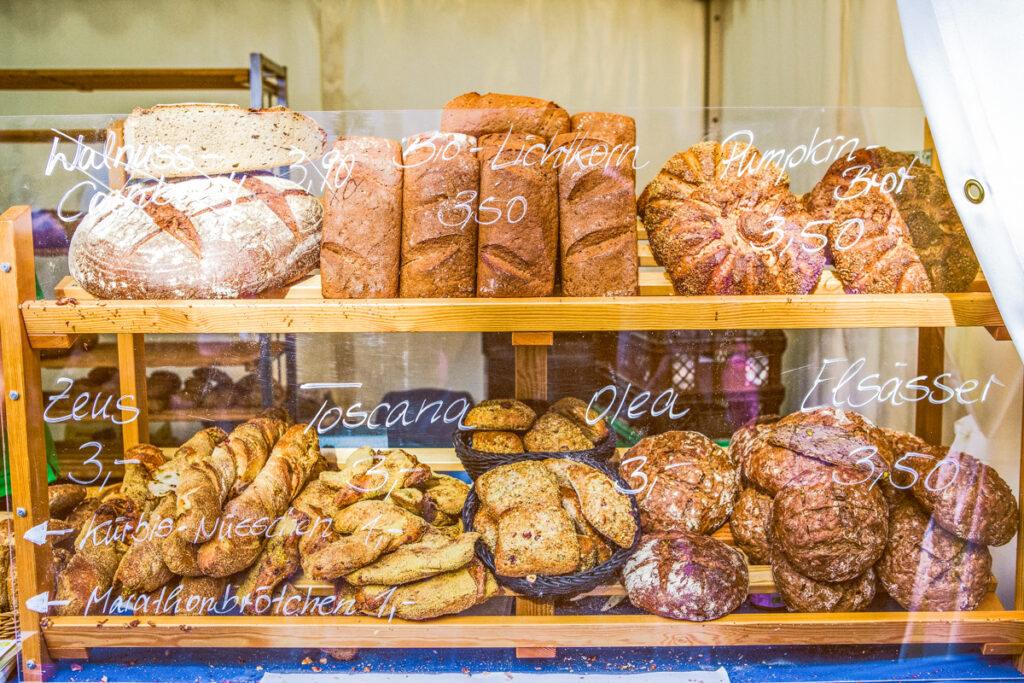
#2 Learn Some Of The Language
There is no better time to learn a new language than when you are surrounded by native speakers. If you find yourself in a place where your language is not spoken, it could be time to sink or swim. Going home hungry from a restaurant sounds terrible, so as to avoid this, try to learn some of the basics before traveling to a new place.
Once you are there, try to embrace being around a foreign language. There is a strange feeling of being surrounded by people but not understanding anything. It is certainly a new challenge to undertake, but totally worth it when you are able to successfully order food!
#3 Volunteer With A Local Charity
The easiest way to make sure your time and effort stays in the community is to go to a local charitable organisation. If you have a particular skill, make sure to let them know so you can contribute in the best possible way.
As an example, if you are a business owner in daily life, you could bring your expertise to a local organisation that teaches and empowers women through business classes.
I would not suggest supporting international organisations, even if they have a local branch/office where you are. I am sure there are some ethical multi-national charities, but many times their practices do not fully benefit local people.
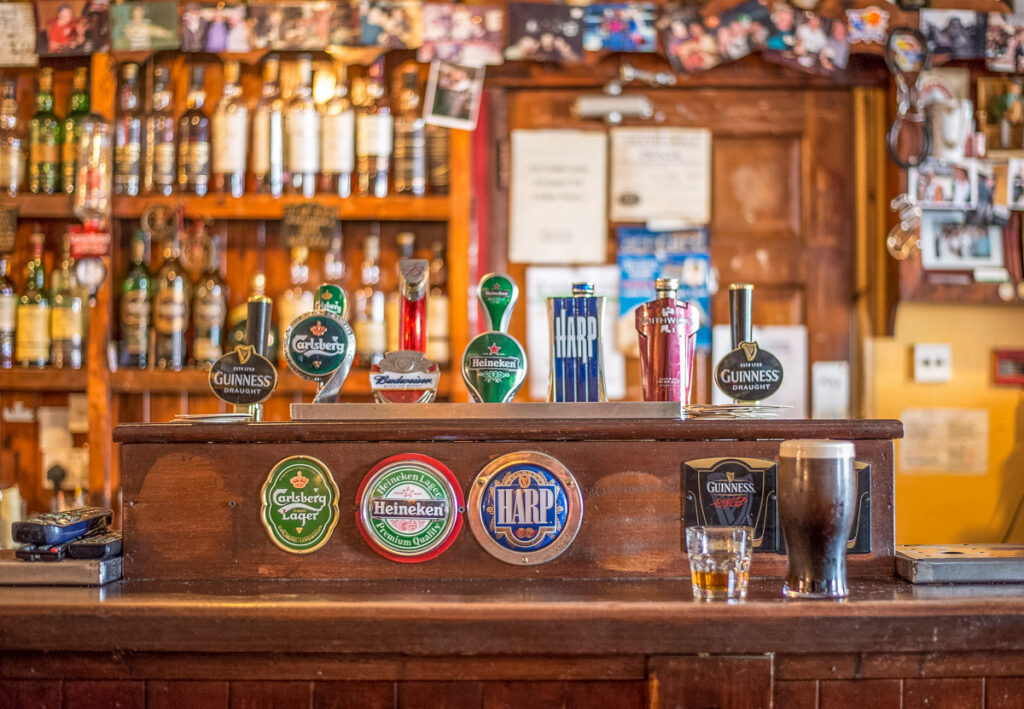
#4 Work Abroad
Depending on where you live and what country you are a citizen of, determines how easy it is to work abroad. In the US where I grew up, a person would have to have a well paying job in a particular sector in order to be sent overseas to work at a different office.
With this in mind, I know many people would not have a company or work field that does this. A solution to this can be ‘Working Holiday Visas’! Many countries have agreements with other countries to allow for citizens to go live somewhere else for anywhere from 6 months to a few years.
Depending on where you are from determines where you can go and how long you can stay. There are other factors and requirements to check for each different WHA like your age, how much money you have saved, whether you are or were just a student, etc.
Read More: 12 Tips To Find The Best Work Abroad Travel Insurance
As an American citizen, we have a few different countries we can choose from. I did a ‘Working Holiday Authorisation’ in the Republic of Ireland for a year. It is a really cool, eye opening experience that you should try if you are able to.

#5 Visit A Local Market
Local markets are the epitome of present day culture. They are so great to people watch, try local snacks and drinks, purchase fresh food for cooking at home, make new friends, practice the language, find handmade treasures, support the local economy, and so much more.
They can be calm and colourful or chaotic and smelly. You never know what you are going to get and that is the beauty of it. Embrace both the good and the bad for the full experience.
#6 Do Travel Volunteering / Homestay
The whole site of Maptrekking is all about doing travel volunteering and homestays. We are all for it!! They are an excellent way of having an automatic in with the locals because you are literally staying with them.
You are bound to get amazing recommendations and probably some delicious meals. Our favourite way to live with locals is through a volunteering platform called Workaway! We highly recommend signing up for it if you want to be immersed into a culture.
Read More: Volunteer With Workaway: The Ultimate Guide To Working Away
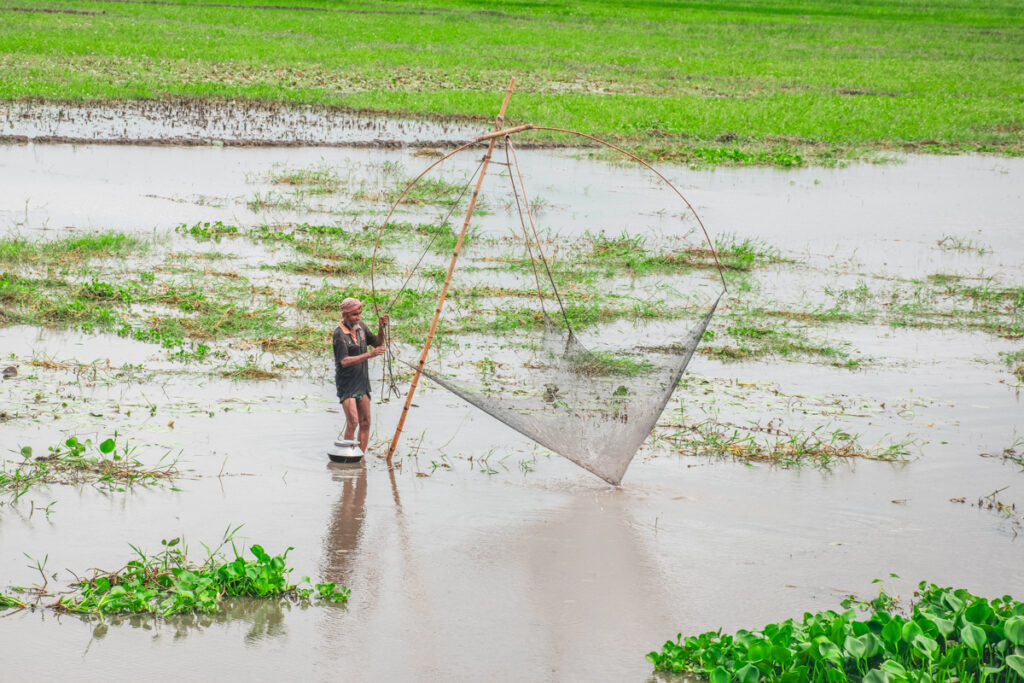
Homestay is great for finding local families to stay with at an affordable price. You get to feel right at home when you arrive and it’s perfect for short or long term stays. Get €20/$25 off your first Homestay trip!
TrustedHousesitters helps you stay in wonderful places for free by house sitting and caring for cute pets. You can find unique & amazing accommodation that would normally be hundreds per night!
Purchasing a 1 year membership is $119/€99, which gives you access to unlimited, worldwide house sitting opportunities. They have more than all other housesitting websites in the world combined!
#7 Participate In A Local Sport Team / Club
Let us be honest here, sport is not everyone’s cup of tea. The beauty of participating in community sport is that it is not really about the sport but about being with others and making connections.
Community sport should not be super competitive and if it is, usually there is more of a recreational team as well. Many people think they have to be good at the sport, but it is only for fun so try not to take it so seriously.
Besides meeting locals, sport is another way to learn about history. Many places have sports that are unique to that country or even a particular region!
Ireland is a great example for having unique, local sports like Camogie or Gaelic Football .
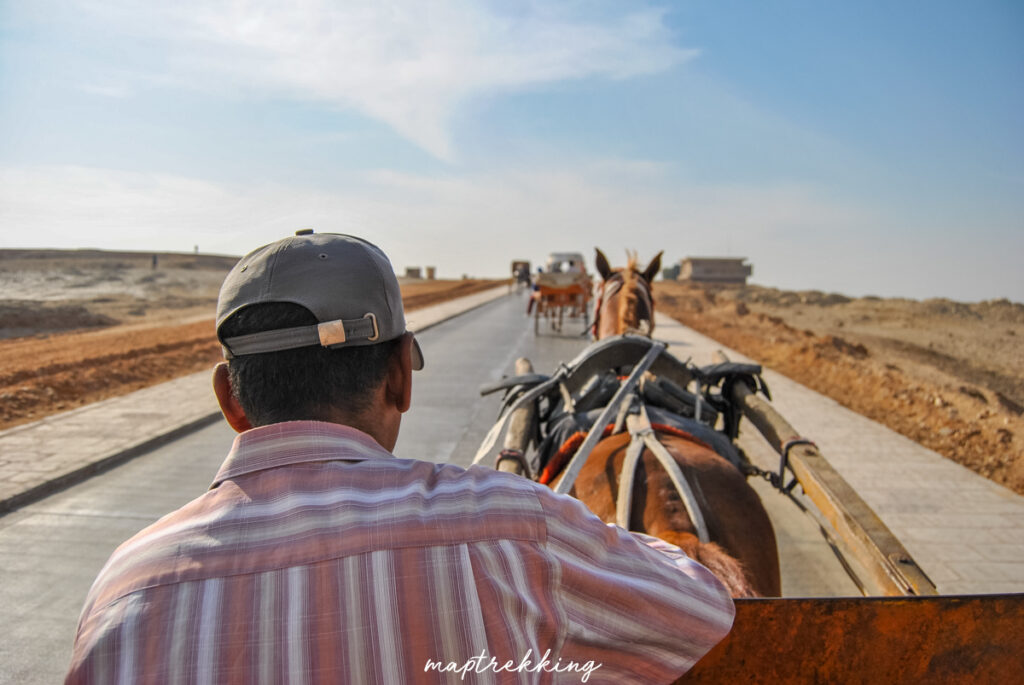
#8 Find Unique Transport To Go On
This is an extremely simple tip but pretty much almost guarantees an interesting time. Most of the funniest travel memories I have is because of public transport.
In our world, you can fly to most places and be there so much faster than any options we had 100 years ago. My suggestion is to look for alternative forms of transport to try even though it will most likely be much slower than flying.
Train travel is one of my favourite ways to go somewhere! Ferry rides are also quite fun. Did you know that on a clear day in many places in Northern Ireland , you can physically see Scotland and the Isle of Man. How cool is that?
There are options to take the ferry to both too, though my Northern Irish friend does warn me that the crossing to Scotland can be quite rough so make sure to take your motion sickness medication!

#9 Study Abroad
Similar to the #4 Work Abroad option, this option is not for everyone unfortunately. Study abroad programs can often be quite expensive, especially if you are from the US or living in the US.
In America, it can be challenging enough just to pay for a normal university degree! Most study abroad programs are not covered by government grants or loans, so they have to be paid out of the student’s pocket. So unless you are rolling in cash, and let us be real, most people are not, it is not a likely option.
There are ways around it though! There are scholarships specifically for studying abroad that can be applied for in your own country (these seem to be more obvious to people) and scholarships for international students at universities around the world (many people forget to check on those).
I was able to study abroad in Scotland and loved it! I would highly recommend it because for me it was life changing
#10 Go To Meetups To Make Friends
With so many ways to connect online, travelers have so many options at their fingertips to connect and find in-person meet ups. Many cities and towns have arranged language cafes / exchanges where travelers can mix with locals to help practice the language they are learning.
There are also online travel communities (like Couchsurfing ) that will arrange meet ups.
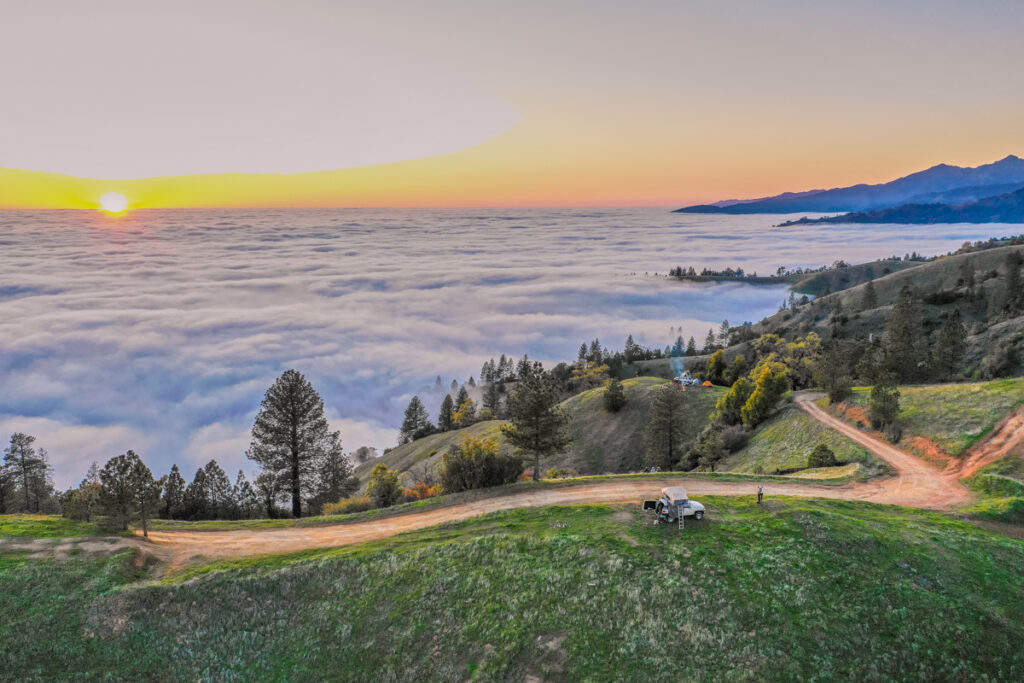
#11 Local Road Trip
When someone thinks of a road trip, they might automatically picture a week long road trip across a country or region. Instead, for culture immersion, try to take a day long road trip where you come back to your same accommodation at the end of the night. This will limit how far you can go which means you will be taking a localised road trip!
Local road trips can be amazing for an immersive travel experience because it usually means you can take your time and get lost even. Since you are not trying to get to your next accommodation that is still 5 hours away, you can relax and let your curiosity out.
So many times I have ended up in an area that did not look interesting on google maps but turned out to be stunning, a true hidden gem. They were all because we let go of planning and a strict itinerary!
These are the places that you will find amazing vistas, cute highway cafes, and friendly locals. Do not be afraid to take a road trip away from popular tourist sites to discover local life.
Read More: 23 Spectacular Gifts For Road Trips (& How To Pick The Best)
GET YOUR FREE SLOW TRAVEL BUCKET LIST
Join my exclusive email list to receive 23 unique experiences to inspire slow & meaningful travel!
By clicking to submit this form, you acknowledge that the information you provide will be processed in accordance with Maptrekking Privacy Policy.
I have successfully sent your slow travel bucket list.
Can't find it? Make sure to check your spam folder!
You Might Also Like

Workaway Ireland? Most Important Tips You Need To Know
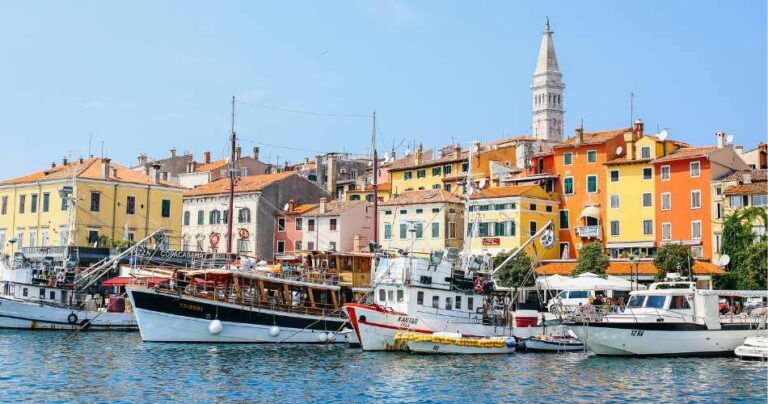
8 Epic Hostel Jobs In Italy – Work Exchange In Italy For A Free Stay
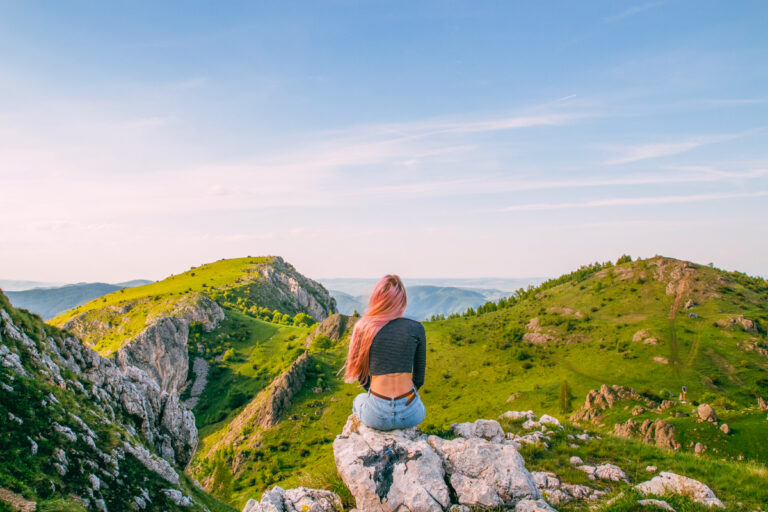
12 Tips To Find The Best Work Abroad Travel Insurance
- House Sitting
- Worldpackers
- Slow Travel
- Cultural Travel
- Living Abroad
- Travel Gifts
- Travel Stories
- Work With Me
- Privacy Policy
- Stuff I Love
- Start Blogging
National Geographic content straight to your inbox—sign up for our popular newsletters here

Is experiential travel the next big trend?
The nature of travel is changing, with a stronger focus on immersive experiences. What does this mean for travellers?
Broadly speaking, the concept of experiential travel refers to immersive experiences — the kind that aims to forge a deeper connection with a destination than can usually be had from traditional leisure holidays. These often involve an element of adventure, whether physical, cultural or spiritual. According to trend-spotting agency Mabrian, these kinds of trips are now almost as high on the average traveller’s wish list as more conventional holidays — defined as involving activities such as sunbathing, family gatherings or shopping.
Where are people going?
Experiential travel usually delves deeper into a given destination, ensuring visitors can experience it as authentically as possible. As such, tours tend to focus on less-touristy spots. Since the pandemic, for example, upmarket ski specialist Powder Byrne has found that destinations like Japan better represent a blow-out family ski trip than somewhere such as Switzerland. Add-on experiences such as temple tours and samurai sword-fighting displays add extra dimension.
What kind of trips are being taken?
Active adventures are growing in popularity, with more extreme options on offer than ever before. An example includes the Shackleton Challenges. Launched to complement Shackleton’s polar-proof outdoor clothing, they’re — for the most part — Arctic and Antarctic mini-expeditions. Even the entry-level Polar Skills Challenge in Norway involves hauling a pulk (an equipment-laden sled) as you ski tour across the snow.
What about closer to home?
The growth of experiential travel isn’t restricted to long-haul pursuits. Take, for example, the popularity of wild camping in the UK. Of course, lovers of Britain’s national parks have been doing it for generations. But when a YouTuber such as Claire Wildbeare attracts an audience of 220,000 subscribers and posts 113 wild-camping and bivouacking videos — closely followed by fellow YouTube star Paul Messner — it’s clear something extraordinary is going on. Every weekend, it seems, a small army of thrill-seekers is dispersing across Britain’s moors, fells and munros. Their mission: to experience Britain in its rawest, most unvarnished state. As a result, mountain sports outfitter Ellis Brigham has seen its robust, weatherproof tents fly off the shelves. “It seems that enthusiasm for the adventurous side of camping is stronger than ever,” observes Luke Scrine, the brand’s chief tent buyer.
What if it’s not for me?
Of course, not everyone wants this kind of experience. People still fly and flop in their millions. And while some well-heeled travellers are hoping to come back with tales of life-changing encounters in faraway places, others are flocking to the next must-stay luxury hotel. HBO’s TV series White Lotus was cynical about such behaviour in 2021 and 2022, but that didn’t stop demand for the property featured in its second series — the Four Seasons Hotel in Taormina, Sicily — skyrocketing in the show’s wake.
What are the benefits?
The deeper we get into a destination, the more widely our money spreads. Original Travel’s Tom Barber is well aware of the benefits. “We’re big promoters of community-based tourism,” he says. “We identify locally owned accommodation, restaurants and activities so our clients can make informed decisions as to where their money goes. It’s important not to be preachy, but more and more clients are opting for experiences and accommodation where they know their money can be used to make a genuine difference.”
The benefits remain for the traveller, too. Spending time chatting to locals and getting to know about their day-to-day lives — including tour guides, hosts and others who work in tourism — could provide meaningful insight into the lived reality of a given destination. These kind of colloquial exchanges also contribute to a more comprehensive understanding of a place, which could prove just as memorable as a guide’s treasure trove of facts and history.
What do I need to know?
Travellers should check the exclusions on their travel insurance policy closely before they go, particularly if there are likely to be physical activities. There will also likely be a level of fitness required for some activities too — check you’re fully prepared before booking.
Become a subscriber and support our award-winning editorial features, videos, photography, and more—for as little as $2/mo.
Related Topics
- EXPEDITIONS
- PEOPLE AND CULTURE
- EXPLORATION
You May Also Like

Get ready for your next iconic adventure like a pro with these tips

Maritime archaeologist Mensun Bound delves into 30 years of underwater adventures

Who were the original 49ers? The true story of the California Gold Rush

Everything to know about Katmai National Park

The race to save the ‘holy grail’ of amphibians from extinction
- Environment
- Paid Content
History & Culture
- History & Culture
- Destination Guide
- Terms of Use
- Privacy Policy
- Your US State Privacy Rights
- Children's Online Privacy Policy
- Interest-Based Ads
- About Nielsen Measurement
- Do Not Sell or Share My Personal Information
- Nat Geo Home
- Attend a Live Event
- Book a Trip
- Inspire Your Kids
- Shop Nat Geo
- Visit the D.C. Museum
- Learn About Our Impact
- Support Our Mission
- Advertise With Us
- Customer Service
- Renew Subscription
- Manage Your Subscription
- Work at Nat Geo
- Sign Up for Our Newsletters
- Contribute to Protect the Planet
Copyright © 1996-2015 National Geographic Society Copyright © 2015-2024 National Geographic Partners, LLC. All rights reserved
- Philippines
- South Korea
- National Parks
- Travel Stories
- How Much Does It Actually Cost to Travel the World?
- What’s In My Backpack: The Ultimate Long-Term Travel Packing List
- My Favorite Non-Fiction Travel Books
- All Budget Travel Resources
- Writing Portfolio
What is Cultural Travel? & How to Travel the World Immersively.
This post may contain affiliate links. This just means I may receive a small commission at no extra cost to you for helping them promote their product or service. I don’t endorse any services I don’t personally use or recommend.
Travel allows us to experience the world. But as we travel, we are also leaving our footprint on each and every place we visit. This is why culturally immersive travel is so important. Because the wrong kind of travel negatively impacts the world. & it can ruin travel for the rest of us.
One of the reasons we started this blog was to help others travel better . To feel comfortable getting off-the-beaten-path, interacting with locals, and learn to embrace experiences that at first feel foreign. To take you “ Beyond the traditional Bucketlist” if you will.
But often when I talk about “Immersive Travel” or “Cultural Travel” I’m confronted with confused faces. This blog post should clear that up.

What is Cultural Travel?
Or immersive travel. It’s one and the same.
Cultural travel is the right way to travel. & before you argue that there is no right way to travel …let me stop you right there. Because there is.
“Do we really want to travel in hermetically sealed popemobiles through the rural provinces of France, Mexico and the Far East, eating only in Hard Rock Cafes and McDonalds? Or do we want to eat without fear, tearing into the local stew, the humble taqueria’s mystery meat, the sincerely offered gift of a lightly grilled fish head? I know what I want. I want it all. I want to try everything once.” Anthony Bourdain
Side Note: I KNOW that people who only get 2-weeks off per year ( I’m looking at you America ) are often just looking for an easy destination with a beach to relax on. This isn’t travel . This is a vacation. & this post is in no way meant to make you feel like you’re vacationing “wrong”. It’s a different type of trip entirely.
Cultural travel is about experiencing and preserving the various traditions around the world. It’s about being open to new experiences and willing to step into another’s shoes. Cultural travel is jumping in with both feet and leaving your preconceived notions about what your trip should be behind you.
It’s eating local dishes. & sleeping in guesthouses. It’s meeting locals and building genuine connections. It’s learning about the complicated history of a country and leaving your trip with a greater understanding of the place you came to see and the people who live there.

Often times in today’s day and age ‘travelers’ will visit a country just to snap some photos of the famous sights to post on Instagram (ie. Bali swings, Thai beaches, leaning tower of Pisa… you know the drill) or to drink the night away, or even just to lounge on a tropical beach. But that kind of vacation can be detrimental to the very communities you’re traveling to.
If you’re interested in the negative effects the wrong kind of travel can have on the world check out this article I wrote for Lonely Planet in 2021.
Benefits of Immersive Travel
Beyond supporting the local communities and the preservation of local customs and traditions, you’ll also experience some personal benefits.
You’ll Blow Your Mind Wide Open
There’s simply no way to travel this way with a closed mind. You’ll get to know different cultures intimately and understand them a lot better. You’ll also become less judgmental of others the more you travel.
Build Your Confidence

Being able to navigate public transportation in any city in the world and find cheap local food is so rewarding. It’s why solo travel is such an amazing way to develop self-confidence and self-sufficiency. Getting outside your comfort zone & realizing that YOU CAN HANDLE IT, that no matter what the world throws at you, you know what to do is such a powerful feeling.
& you’ll only get that way through experience.
Unparalled Learning Experience
Forget about learning confidence…traveling this way is a great way to learn in general! It’s better than school. I got a ( very expensive ) 4-year degree from an American University & I learned 100x more from life on the road.

History, politics, environmental issues, and animal science…When you’re confronted with these subjects face-to-face you learn more. & it sticks with you. I can’t rattle off facts from any of my college courses but ask me about Cuban or Burmese politics or the environmental challenges of over-tourism & palm oil production in Bali & I can talk for hours.
Better Travel Stories
Immersive travel makes you a more interesting person.
This is my own personal opinion of course, but when you have stories to tell & have done things few others have…of course you become more interesting.
All my favorite travel moments have come because we put ourselves out there & tried to learn something about the countries we’re exploring.
A Few of My Favorite Cultural Experiences
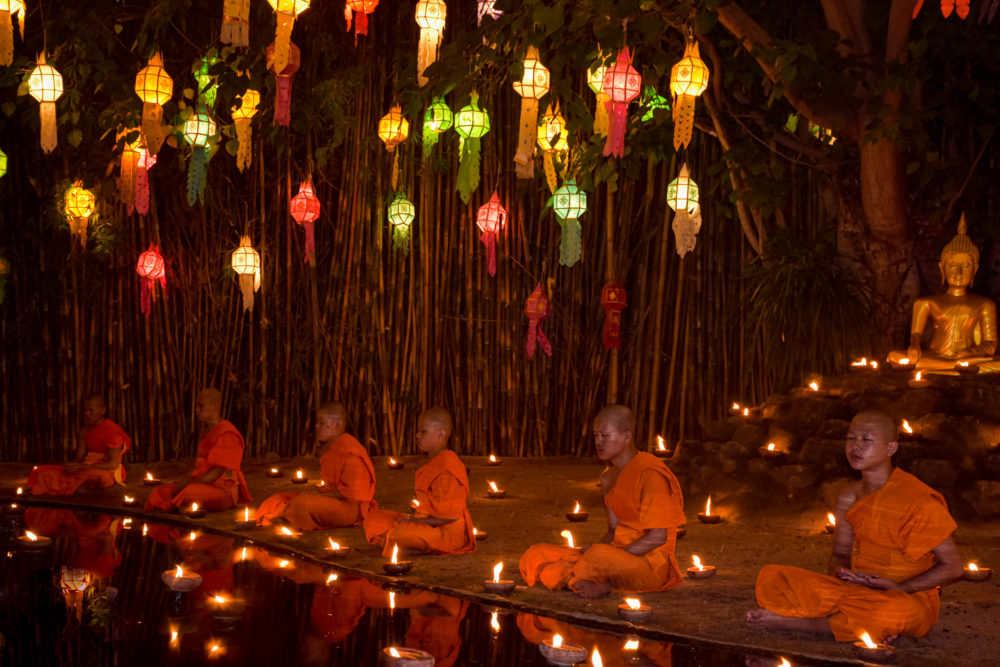
- Reading English medical books to Burmese children with a local teacher (and National League of Democracy party member).
- Couchsurfing in Medan, our host brought us to his favorite local spot for dinner with his entire family.
- Drinking beers & practicing our Spanish at a Colombian market in the hot sun with some sassy local men.
Package Tours vs. Independent Travel
If you’ve ever seen those charter buses packed full of tourists all adorned in the same T-shirt you know what package tours are. They dutifully follow the schedule they are provided (& paid big bucks for) making chit-chat with other tourists who were also lazy enough to book a trip all-inclusive.
Package tours are not my thing. Typically. Most of the time they are catered to seeing the bare minimum of a country. They are luxury experiences that often keep you in your protected bubble of comfort and you leave the country feeling very much the same as you were before you left.
Obviously, there are always exceptions to the rule. GAdventures runs budget-friendly overland tours through Africa geared at Adventurous travelers. OtherWayRoundTravel in Colombia runs small group tours for adventurous 20 to 35-year-old travelers and it’s run by locals.
On the opposite end of the spectrum is independent travel. I would classify us as independent travelers. But what exactly is independent travel?
Independent Travel Definition: Travel in which you organize everything yourself, without a travel agent or other company to organize activities and accommodation for you.
It’s that simple.
If you opt to plan your vacation yourself you fall into the category of independent travel. This is the style most backpackers and extreme budget travelers will be familiar with.
The Semi-Independent Traveler. The Sweet Spot.
The semi-independent traveler. The tourist who does a little of both. They have planned their own vacation but along the way they sign on to some group activities with local vendors.
For example…
If you head to Indonesia and start your trip in Bali. Then you spend a week exploring the island on your own, maybe hike some volcanos in Java before you head to Sumatra to see orangutans in the wild . Up until this point you have been an independent traveler. But then you sign on for a week-long all-inclusive agency to take you trekking in the jungles & sleeping in rustic cabins with a small group of like-minded travelers. You’ve become a semi-independent traveler.

It can be so relaxing to have a difficult portion of your trip planned for you and if you have done your due diligence & research you’ll still be contributing to the local communities.
This is the most popular way to travel.
Which Type of Travel is Right For You?
Now that you know how to distinguish between the types of travel you can decide where you fall. Here’s a quick set of questions you can ask yourself before you commit to independent travel.
Do you feel safe traveling to the country of your choice?
Are you interested in gaining a deeper understanding of the country and want to have an experience unique to others who visit the country?
Are you comfortable fending for yourself when things inevitably go wrong?
Are you traveling on a budget?
Do you have a lot of time for researching and traveling?
Are you interested in off-the-beaten-path destinations and supporting the local economy over your own personal comfort?
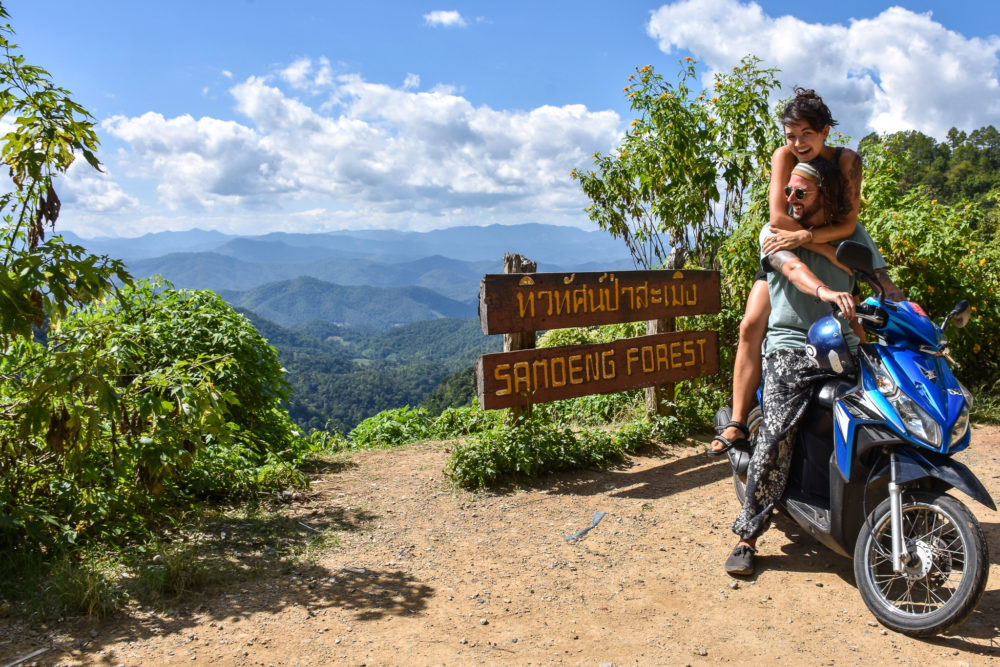
If you answered ‘Yes’ to most of these questions, Good News: Independent travel is right for you!! Even if you didn’t, I would encourage you to at one point in your life give independent travel a try and see how you do.
How to Choose a Good Cultural Tour Company
If you’re not ready to give it a go and explore the world on your own the least you can do is choose a good tour company.
What makes for a “good” tour company?
- The money goes back to the community.
- It’s run by locals.
- The focus is on gaining a better understanding of the country rather than pure luxurious comfort.
- Animals and humans are treated humanely and with respect.
Do your research before you sign up. Sometimes companies that masquerade as giving back to communities are large corporations owned by foreign investors.
& please for the love of all things diverse and quirky, don’t stay in all-inclusive resorts. They are the worst kind of tourism (alongside the eco-logical disaster that are cruises).
10 Tips For Immersive Travel
Immersing in a foreign country can be difficult. These are the 10 rules we stick to when we travel to make exploring more rewarding and to better understand the country quicker.
1. Take Public Transportation.
Or motorbikes. Or rent yourself a car. Just try to avoid hiring a personal driver for the day unless it’s someone you met, connected with, and feel could give you an insightful tour of their country. Too often we default to the easiest method of transport when the journey can be just as rewarding as the destination.
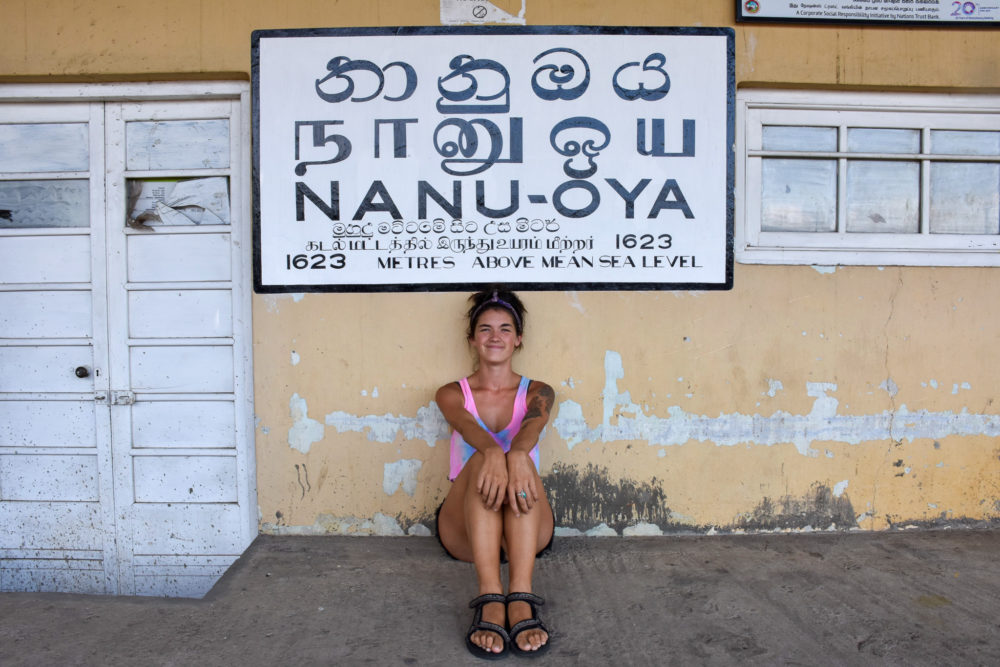
Although the bus is not often the most comfortable, it’s always the most interesting.
2. Savor the Street Food.
EAT LOCAL. I’ll scream it from the rooftops because there is simply nothing more aggravating than people who travel halfway across the world to eat the same food they would have eaten at home. Pizza in Thailand? Vegan Burger in Bali? Eggs Benedict in Colombia? WHY.

Maybe food isn’t as important to everyone as it is to us, but at least try to support local businesses as you would back home. You never know what’s going to be your new favorite meal.
Also, street food is sanitary and delicious and anyone who tells you otherwise isn’t living correctly.
3. Stay in Guesthouses.
I use Booking.com to find them. You can also couch-surf using Couchsurfing.com or find a homestay online. Staying with a local has loads of benefits. First, you’re supporting the community & not a foreign hotel chain. Secondly, you have the chance to eat home-cooked local meals & chat.

Guesthouses are also clean, comfortable, and private in comparison to other budget-friendly options like hostels.
4. Be Friendly.
To locals and other travelers. A smile and good attitude gets you a long way.
It’s these connections you make with like-minded travelers that blossom into life-long friendships. & the connections you make with locals that you’ll look back on fondly once your trip is over.
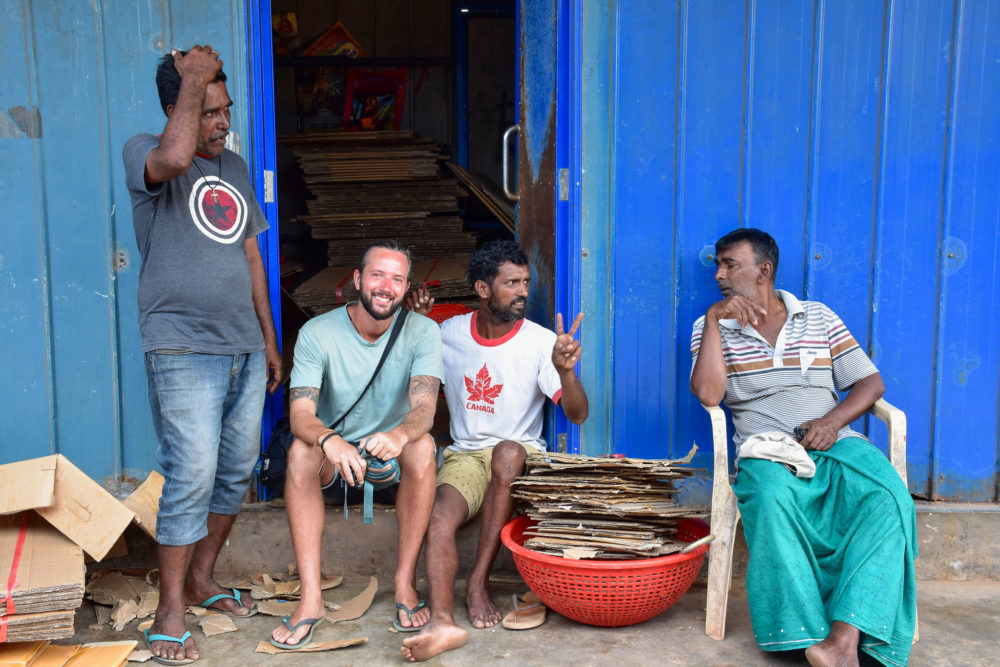
5. Stay Longer. Move Slower.
The longer you spend somewhere the easier it is to immerse yourself in the local life. Obviously, living in a foreign country or even studying abroad allows you to understand a place far better than a tourist simply passing through.
Just do less. If you only have a week to travel, instead of cramming in 6 cities, just pick 2. You’ll get to spend more time in each place and leave with more meaningful experiences. Unless you’re just traveling to check things off of a never-ending bucket list that is.
6. Take the Time to Learn Some Phrases.
You don’t have to be fluent, but the simple act of learning the language basics shows you are interested in their country and life.

It will make getting around easier, you’ll be more self-sufficient, & you’ll be able to make friends with locals. With Duolingo & other free language apps on the market, you have no excuse.
7. Avoid Impersonal Group Tours.
Use the tips I listed above to find the best tours if you are too nervous to independently travel.
8. Visit Local Markets.
Markets are the lifeblood of a destination. It’s where the locals shop, eat, and where many work. Seek out authentic local markets instead of tourist markets and you’ll gain insight into the country. & have countless opportunities to eat local food. & support local businesses.

9. Don’t have Set in Stone Plans.
When you’re traveling independently things go wrong. We write a whole blog post about our most embarrassing travel fails . But sometimes things also go right.
Example : You meet a group of travelers headed to a remote region in Laos you had never heard of. & you want to tag along. But if you’ve booked everything in advance your schedule won’t be flexible. You want to leave yourself open to the world’s opportunities.
10. Follow Local Customs.
This is the single most important item on this list. Don’t be an American Idiot (or whatever the equivalent is for the rest of the world). Be considerate and knowledgeable of the culture.

If you are visiting temples in Asia be sure to dress conservatively with your shoulders and knees covered. & don’t you dare uncover yourself for a stupid Instagram photo.
If you’re a woman in the Middle East & it’s recommended to wear a hijab. Do it.
Not only are you respecting their cultural norms and traditions you’re saying you’re willing to embrace the uncomfortable to experience the country responsibly.
10 Destinations for Immersive Travel
Obviously, you can (& should) immersively travel everywhere. But these destinations have such a wonderfully rich culture and traditions that they will change the way you travel forever.
Considering you make an effort to visit them the right way.
- Indonesia .
- Sri Lanka .
These 10 countries all have such a strong (& foreign) culture for travelers to experience.
& that’s immersive travel for ya. It’s something to strive for. Now that you have a better understanding of independent travel and what it means to truly experience different cultures you’re better equipped to get off-the-beaten-path and see what’s out there.
Save This Post For Later!

Further Reading...

My List of Non-Fiction Books to Inspire Adventure Travel
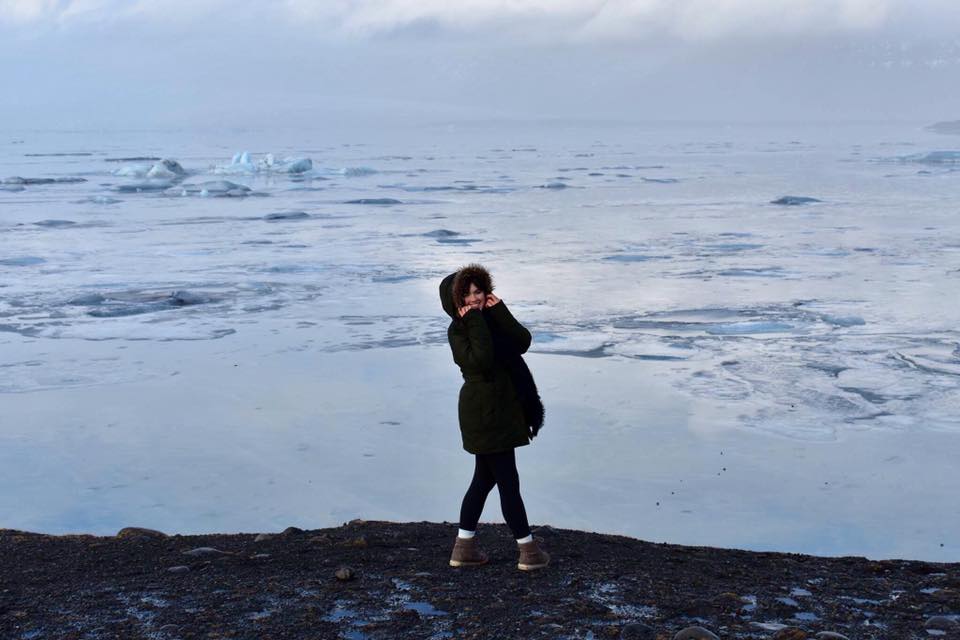
Our Icelandic Road Trip: Driving the Ring Road in Winter

50 Embarrassing Travel Fails & Mishaps You Can Learn From
Great ideas and thanks so much for sharing your knowledge and time!
Audrie Robinson
I loved this article thank you!
Leave a Reply Cancel Reply
Save my name, email, and website in this browser for the next time I comment.
Notify me of new posts by email.
Sign up to our newsletter!
This site uses Akismet to reduce spam. Learn how your comment data is processed .
Travel the U.S. for $30 A Day: The Ultimate Budget USA Road Trip
How i got the yellow fever vaccine in colombia for free ( + tips for cheap vaccines), beyond_the_bucketlist.

Your browser is not supported for this experience. We recommend using Chrome, Firefox, Edge, or Safari.
Big news! Simpleview is now a part of the Granicus family.
Together, Simpleview and Granicus will serve more than 7,000 organizations worldwide with a workforce of approximately 2,000 employees. Together, the companies now have the ability to reach and engage with more than 400 million current and future residents, visitors, and businesses to create connected communities that support places where individuals want to visit, meet, live, work, play and invest.
Immersive tourism: why and how your destination should jump right in
When a traveler books a trip, what exactly do they have in mind? They may expect to indulge in local flavors, take in the beautiful scenery, or rest up and rejuvenate. Whatever their motive is for picking a destination, there is one thing all potential visitors are craving, whether they know it or not, and that is experience .
Joe Veneto, chief experience officer at Veneto Collaboratory , has coined the phrase “experience junkies” to describe today’s travelers — people who seek new sensations that they will cherish forever and tell others about. Why?
- Humans are curious by nature : there's always been a need for deeper, richer experiences. Travel lends itself to exploring different destinations, people, cultures, and environments to open ourselves up to discovery.
- Humans have a desire to connect : we feel the need to be connected to people to keep them in the loop of where we are going and what we are doing. Since social media is so accessible to all, sharing our experiences has become easier than ever before. Destinations can amplify their attractions through the words of visitors who share their experiences with others.
To lure in these experience-craving visitors, destination marketing organizations (DMOs) must consider implementing a crucial concept to their attractions: immersive tourism. We sat down with Veneto to hear more about immersive tourism and learn how DMOs can draw in visitors with enhanced experiences in order to keep them coming back for more.
Go Beyond Show & Tell
You have probably heard that destinations should engage tourists, but what does it mean to immerse them? Immersive tourism, also known as experiential tourism, takes a visitor to a deeper level, below the surface of a destination. Anyone can go on a trip and “do” a lot, but most people don't just want to “do” — they want to feel. Immersive tourism includes sensory types of experiences that amaze, excite, and teach visitors the essence of the destination’s brand.
This type of tourism has to go beyond show and tell. Anyone can sip samples at a winery, but what if you sipped while you …
- Learned about the vineyard’s history
- Met the owner and the winemakers
- Tried your hand at picking grapes
- Tasted the perfect pairing of cheese that you learned how to place in a picture-worthy cheeseboard that you can now recreate at home
Now that’s immersive.
Learn from the Expert

Chief Experience Officer, Veneto Collaboratory
So what is your destination’s essence? What makes it special or distinct? What unique experience will draw people in? That’s where Veneto says it all starts.
“We first and foremost look at a destination and ask, what do they have? What is their brand essence all about, and can a visitor get into that experience?" Veneto said. “How do we come at this from a number of different ways and layers so that when they are put together, it's amazing? That's the secret sauce.”
When you look at a destination, you might know the history but have you felt it? The goal is to make it come alive. It’s all about design, storyboarding, and scripts that are interactive, engaging, and impactful.
One tip from Veneto is to seek out transformative travel experiences for visitors. Create ones that inspire life-changing impact and evoke deep emotional responses. Then, consider the following steps:
- Find the feelings : what emotions are you trying to evoke from visitors?
- Create the connection : how can you pull at the heartstrings of your visitors and connect the experience to something they are familiar with or will find touching (remember: ethos, logos, pathos!)
- Nurture the narrative : who should tell this story and how can they tell it in a way that is unforgettable?
A checklist for DMO must-haves before considering an immersive experience:
- Brand essence and unique attributes
- Strong partner relationships
- Staff to monitor bookings, sales, and meeting/events
- Time commitment to keep the experiences alive
Veneto explained the shift he has seen from destination marketing to destination management and development. The question is no longer, “How do we promote, market, and sell the destination,” but rather, “How do we stay competitive?”
DMOs have to put the work into creating new, fresh stories and experiences that add a deeper layer for first-time and returning visitors. The need for ongoing innovation to stay competitive is what drives many to consider immersive tourism.
Committing to taking on an immersive project in your destination might seem a bit too big to swallow. Sometimes it's the lack of resources, not knowing where or how to begin, or the idea that your organization doesn't have a designated role responsible for such projects. Over the past decade, destinations have put people in senior positions, such as vice president of destination development, as a way to spearhead these types of projects. If that's not a possibility yet for your destination, people like Veneto can help. If you want to see one of Veneto’s recent projects in action, click here to read our article, “How Louisville Tourism developed immersive attractions that honor Black History year-round.”
To learn more about becoming immersed, Veneto also conducts an annual experience lab , hosted in a destination that has implemented an immersive project. The 2022 lab will be held in Louisville, Kentucky, in October.

Kasey Pooley
With a knack for witty language and eye-catching copy, Kasey researches, writes, and edits engaging content about destination marketing organizations — creating compelling press releases, case studies, articles, and more. She is also Simpleview's social media guru, responsible for content creation, design, and posting on all social media platforms.

From Sightseeing to Cultural Immersion: How to Truly Experience a Destination with Immersive Travel
What is immersive travel and how can it enrich your trips? Packed with practical tips and info, this guide will help you delve into local cultures and traditions, discovering new experiences along the way.
Travelling to new locations is always exciting, but can you get more from your travel experiences? Sure, you want to hit the bucket list landmarks, but what about experiencing the location like the people that live there?
As someone who’s spent a lot of time on the road, getting my first travel writing gig at the tender age of 19 (which is a *cough* long time ago) I’ll say this. Being a tourist isn’t necessarily a bad thing, but let’s be honest, only focusing on seeing the most popular sights and snapping photos for the ‘Gram along the way won’t give you the full experience a place offers.
Approaching a new location as a traveller rather than a tourist means you’re there more to learn than you are to party and have a great time. That’s not to say you won’t make friends along the way and have memories for a lifetime — but your purpose for visiting is less rooted in all-inclusive resorts and more in engaging with the culture of the location you’re travelling to.
Immersive travel helps you learn more about a culture and grow as an individual by pushing yourself to try new things with new people and learn about yourself and others along the way.
Ready to learn more? Let’s go.
Understanding Cultural Immersion

Cultural immersion when travelling can mean many things. Making friends with locals, getting from one place to another via public transportation, renting an Airbnb so you can visit a market, and cooking local food with ingredients you won’t find elsewhere are all steps in the right direction.
It can also mean forgoing crowded tourist destinations for lesser-known locations further from the city centre.
Walking around and discovering things on your own or scouring local publications for free community events taking place during your vacation can open up new possibilities when travelling. Try it.
However you approach your travels, learning more about the location you’re visiting is full of potential rewards that can teach you more about a location and tap into learning more than you ever imagined.
Benefits of Culturally Immersive Experiences for the Traveller and Host
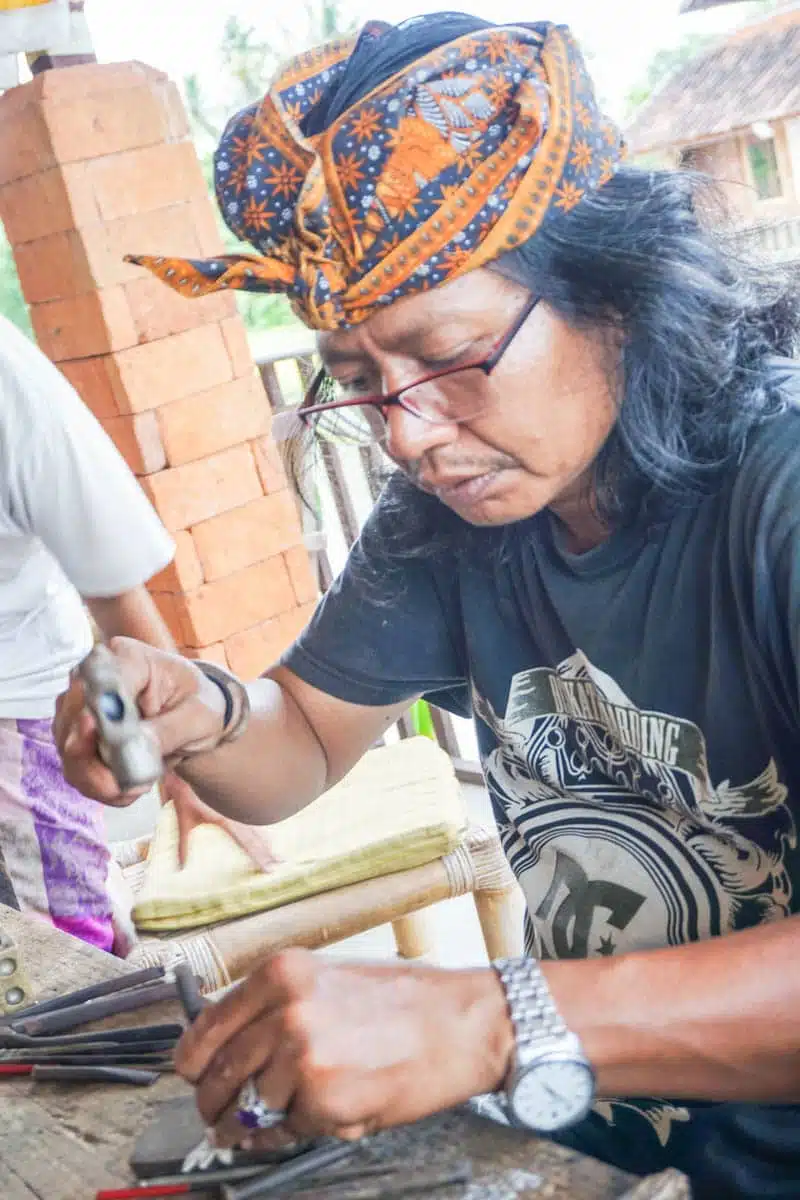
Cultural immersion benefits both the traveller and the host community when it’s done properly. Facts.
If you visit a location with the purpose of a culturally immersive experience, you open up the possibilities of making new friendships, learning more about a culture, and supporting the local community in the process.
When you meet locals and find out their local customs and daily routines, you learn about places and people you otherwise wouldn’t. You also are more likely to support local stores, restaurants, and businesses that benefit more from your money than a large corporation based outside of that community.
It might challenge you in ways you didn’t expect, and there may be some uncomfortable moments when you scramble for Google Translate and don’t have service, but the rewards far outweigh the downside. Trust me.
My Experiences With Cultural Immersion
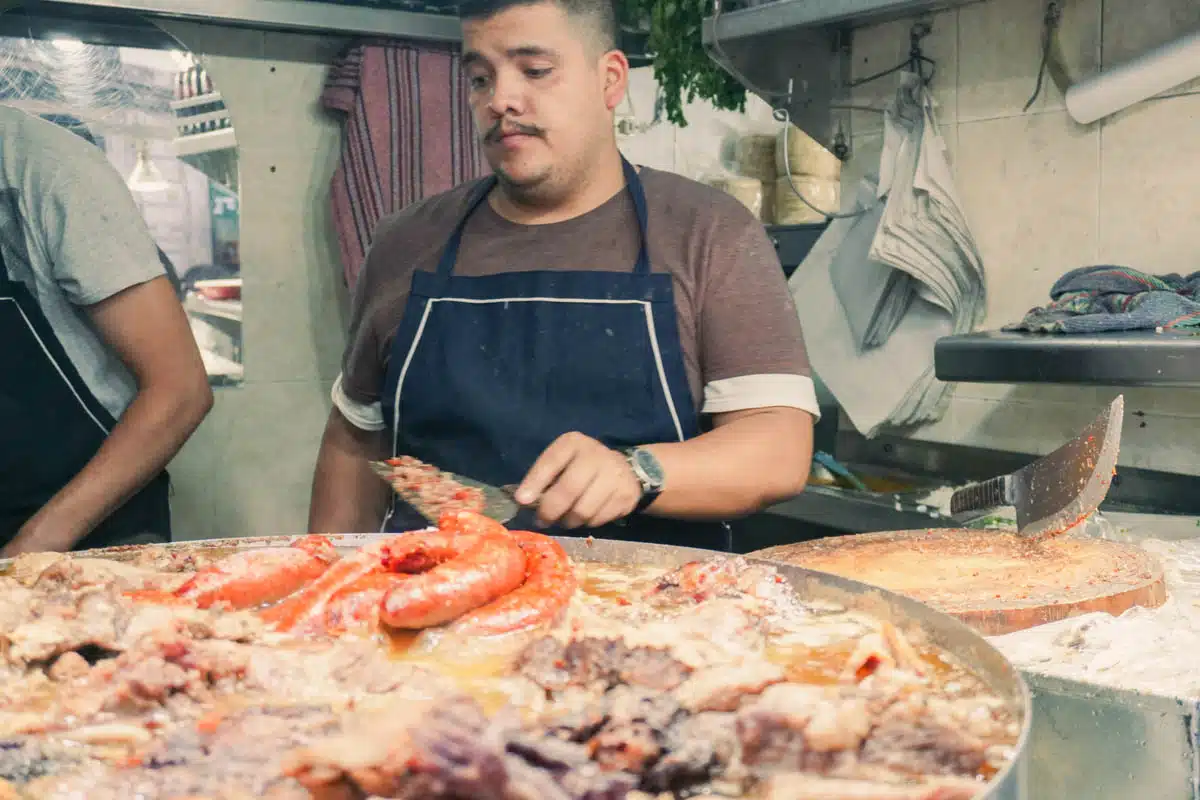
I’ve taken many rewarding trips, but the most memorable moments involve the people I meet and the cultures I learn more about when I’m away.
The first time I visited Mexico City , I spoke with a local for about 45 minutes to learn more about where I should go while visiting. At first, I felt clumsy with my rusty Spanish and was worried they wouldn’t give me the time of day. I shook it off.
The friendly local was patient and kind and ended up recommending a street market I would have never found in a guidebook. I also discovered two of the best meals I had on my entire trip (one of them, Los Cucuyos is pictured above).
I got to support smaller businesses and had wonderful memories to share for years. I’m sure you’ll have similar experiences with a little confidence.
Choosing Your Immersive Travel Destination
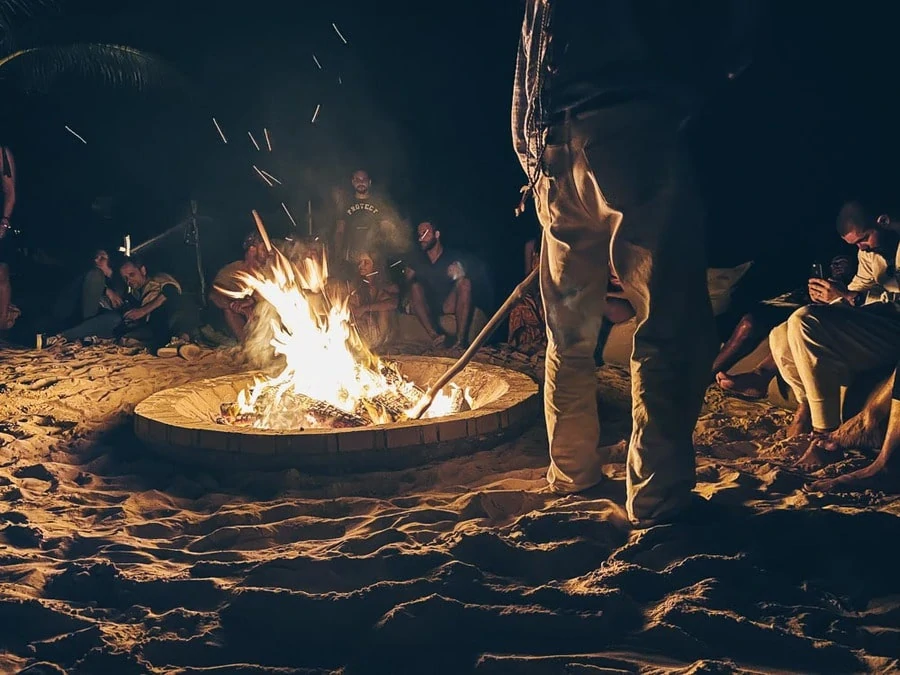
Choosing the location for cultural immersion travel comes down to what exactly you’re looking for. Bolivia , Mexico and Bali are all wonderful destinations for cultural immersion, but each offer entirely different experiences and vibes.
Maybe you’re looking to learn a language or discover ingredients for recipes you’ve always wanted to cook. Both are great reasons for immersive travel.
Or maybe you’re interested in learning more about a culture’s history and culture. Even better.
Whatever your reason for travel, you need to ask yourself why you’re visiting a location before getting the most from your trip.
Tips for Researching a Location and Culture Beforehand
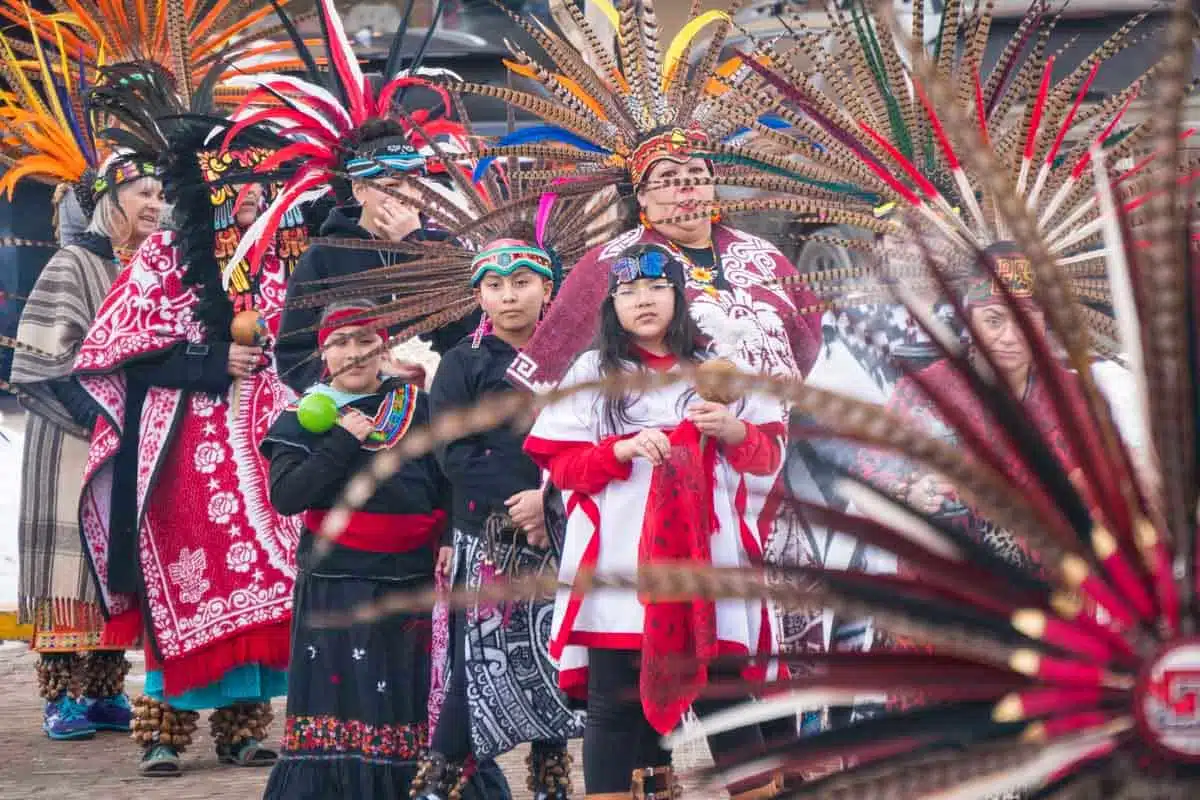
Every place in the world has unique histories, cultures, and traditions. Understanding these is essential for enjoying your holiday, learning the most about a location, and travelling safely.
Some things to keep in mind include:
- Research the cultural norms and current political climate before visiting places for the first time.
- Understand current events and how they may have affected a community.
- Choose a culture you either have some knowledge of or a pressing desire to learn more about.
- Chat with locals on social media or travel forums for advice prior to travelling.
Planning Your Immersive Travel Experience
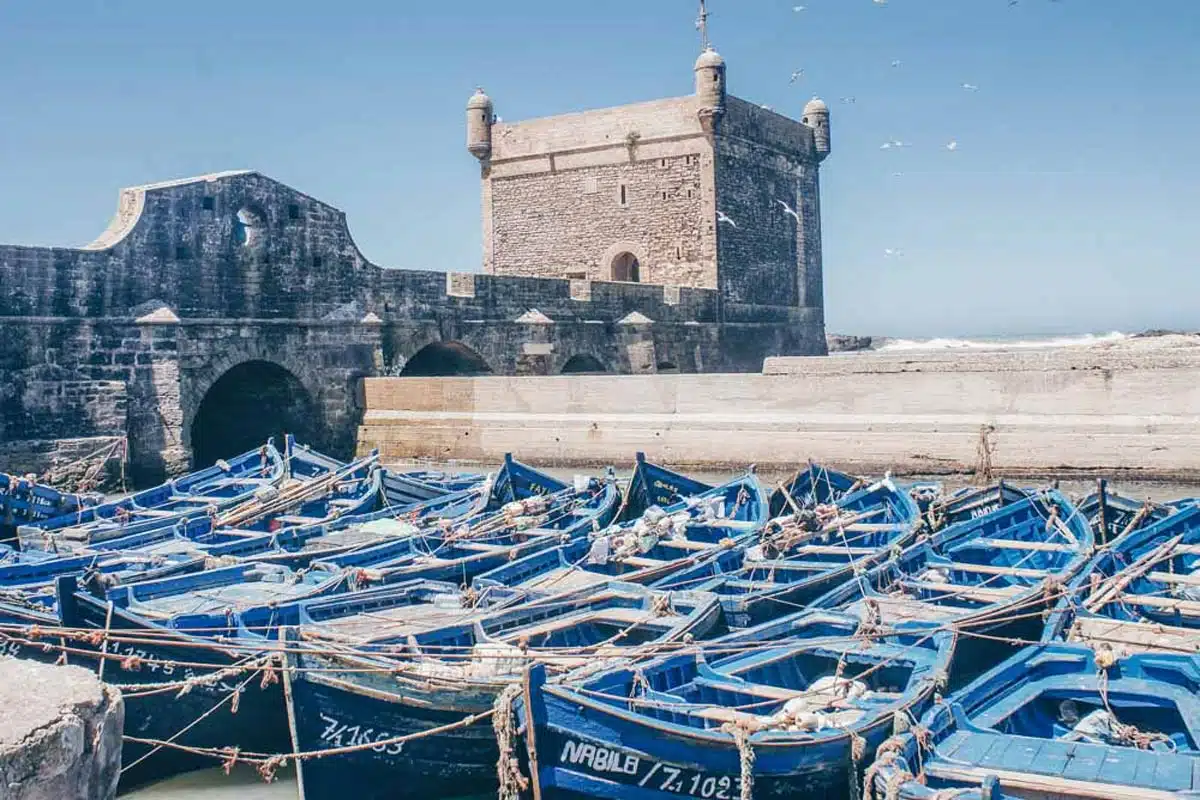
Planning cultural immersion experience ideas involves careful thought and using resources that are available. In order to get the most from your trip, you’ll want to prepare ahead for travel arrangements but let the small details work themselves out along the way.
Travel Arrangements for Cultural Immersion Trips
Part of the joy of immersive travel is spontaneity. You’ll often meet locals who can give you amazing tips on restaurants, activities, and accommodations. Listen intently.
When you first land, I recommend having somewhere to stay for the first couple of nights but then embracing slow travel after that.
To start, you can stay in local guest houses or B&Bs, or stay with other solo travellers and locals on a Facebook group like Host a Sister . In doing so, you can chat with people in the know and get an idea of where to stay in smaller towns, and learn aspects of the culture you otherwise never would.
You can also keep your itinerary open to stay in new places, which can give you the best opportunities for learning about cultures you’d otherwise never find.
Incorporate Local Events and Experiences in Your Itinerary
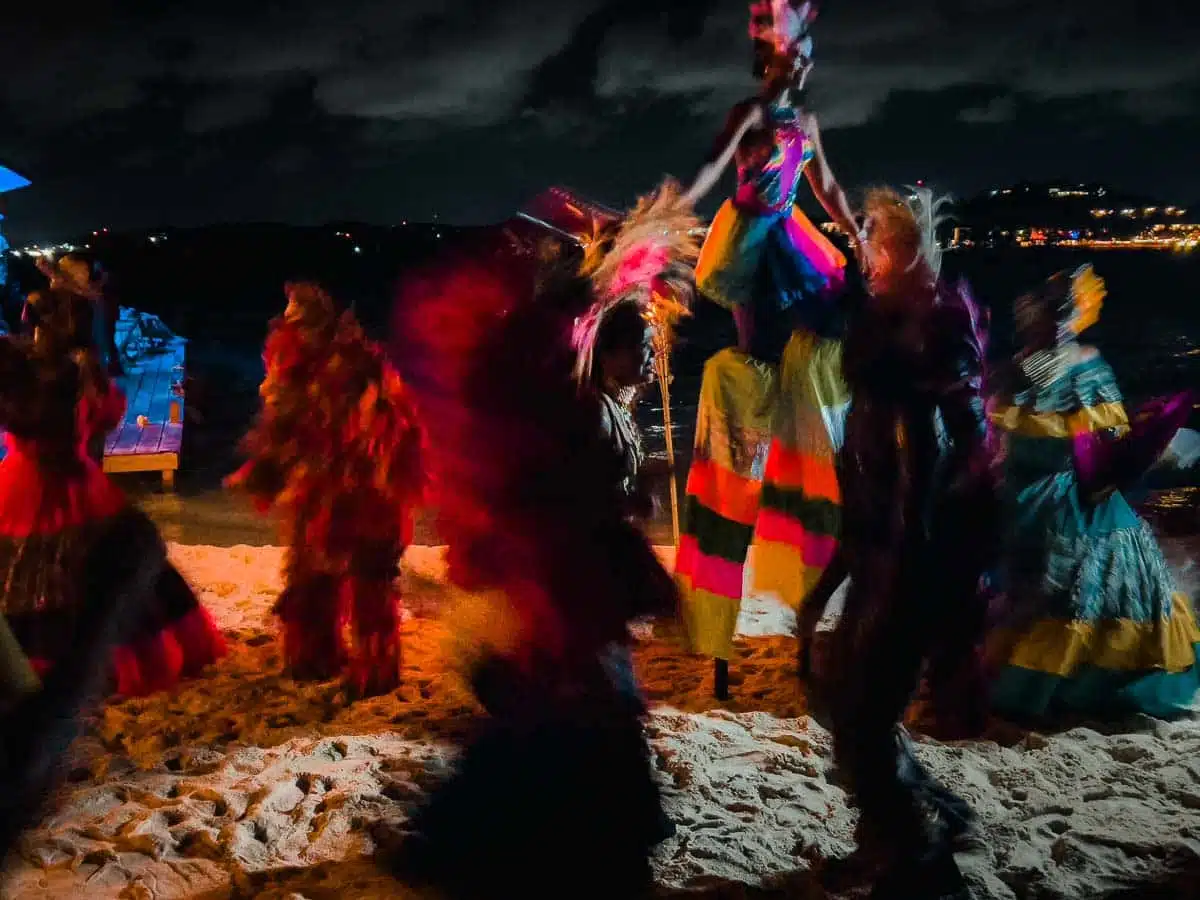
Chatting with locals and meeting people who live in a destination can help expose you to some of the most unexpected and delightful cultural immersion activities.
One of my favourite cultural immersion experience examples was when I left my Barcelona travel itinerary wide open over a weekend. By doing so, I talked to my Airbnb host and learned about a local market, where I discovered some of the most incredible street food on my trip.
I’m still dreaming about the local sausages and cheese.
You can do the same by talking to community members about festivals, street fairs, and local activities going on during your travels. Oftentimes these events leave a lasting impression and allow you to learn about important causes and how you can help.
Top Tips for a Successful Culturally Immersive Experience
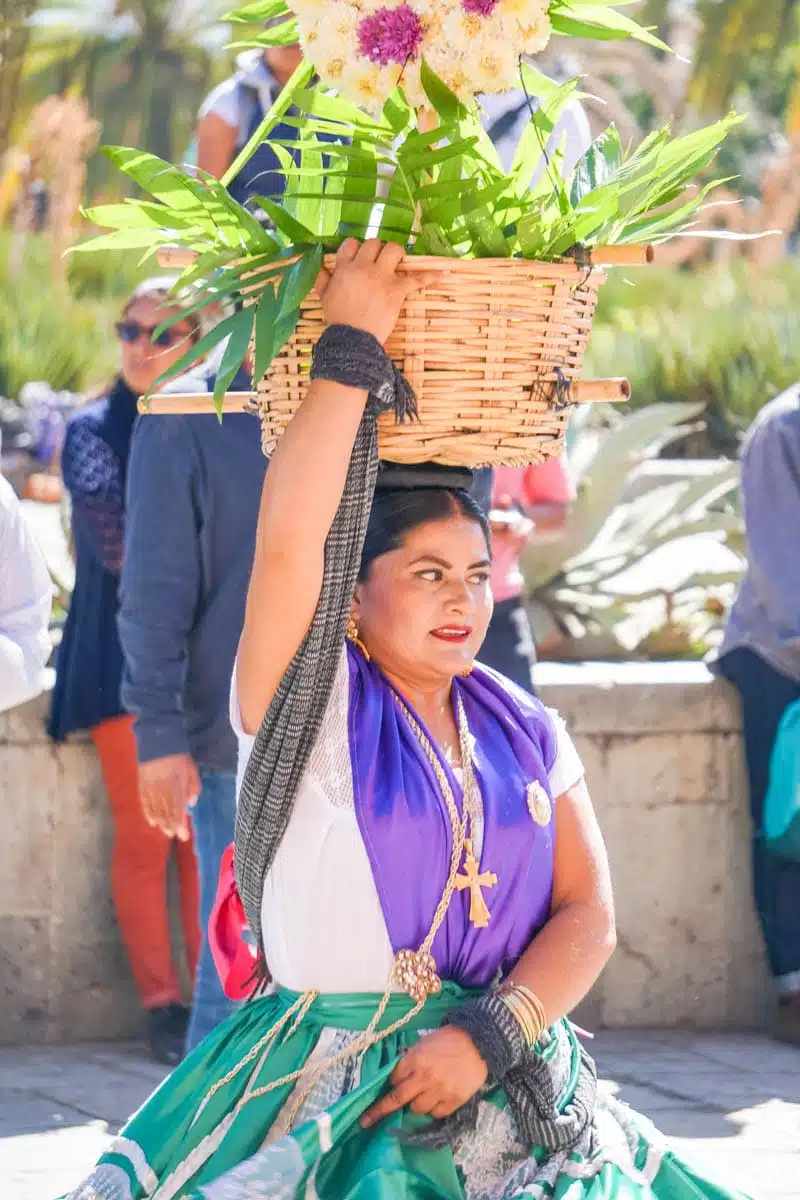
Learn the Local Language
Learning the local language is a key piece to the cultural immersion definition. By forcing yourself to learn the language and not try to find people speaking your language of choice, you are taking an important first step towards experiencing a destination like a local.
Even if you feel like you’re not confident, do your best to practise, listen, and learn from others. Many cultures will appreciate you trying and locals may take extra time to explain things when possible.
Practise Before and During Your Trip
Download language apps like Duolingo and practice with friends and family before your trip.
When visiting a country, take 20-30 minutes each night and reflect on what you learned. You can also write down any notes related to questions you have or phrases you pick up throughout each day to help you move forward.
Respect Local Traditions and Etiquette
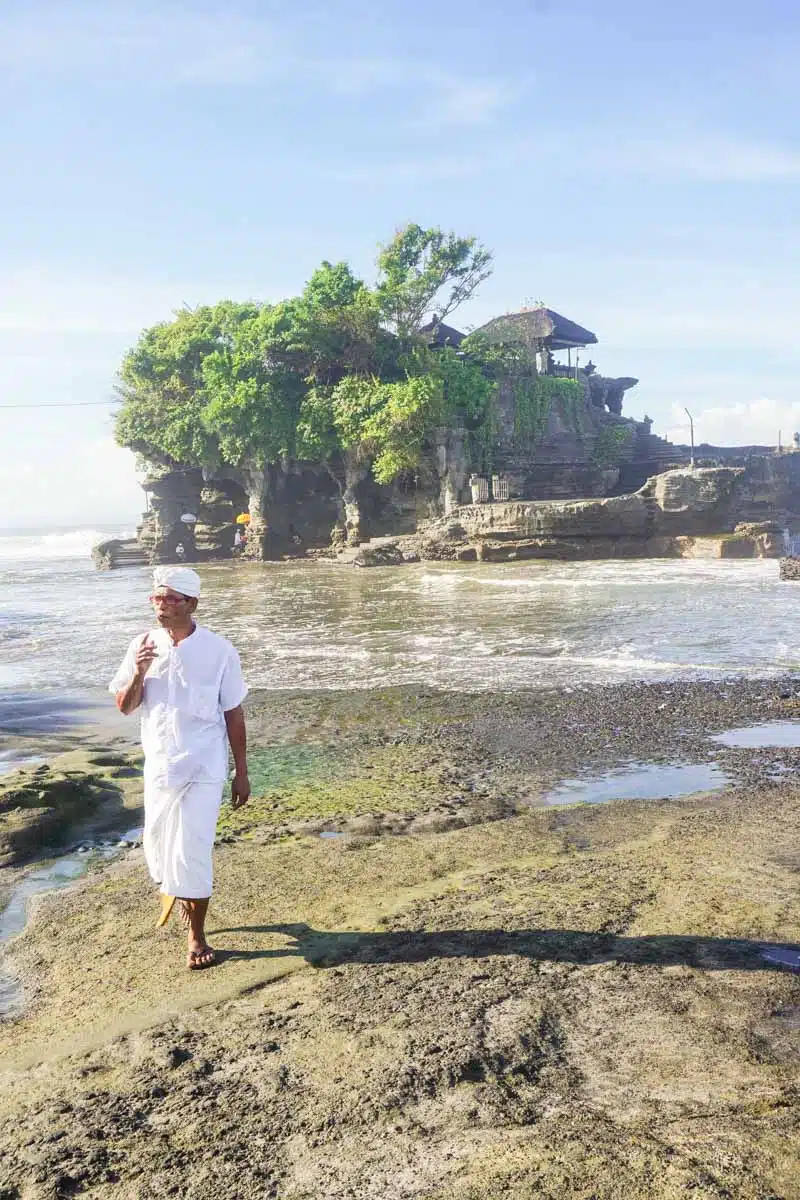
One of the most important aspects of cultural immersion is respecting local customs and etiquette. A large part of knowing the local traditions and norms comes down to studying a culture before visiting.
Read travel guides, ask questions to locals on community forums, and consult friends and family who have visited the location in the past.
Be sure to understand any important considerations regarding dress, language, body language, and eye contact before heading out on your next holiday in another country.
Cultural Sensitivity
In addition to knowing how to dress, speak, and what body language is appropriate, there are other cultural factors you’ll want to be sensitive to prior to heading out on holiday.
Be sure to know any regulations or traditions when purchasing artefacts or souvenirs, always ask first if you take a person’s photograph, and speak with locals if you have any doubt that you’re doing something correctly during immersive travel
Engage with Local Communities

Engaging with communities is essential when trying to form deep and meaningful relationships and experiences during cultural immersion. This means spending as much time as possible with the locals rather than other travellers who may speak your language. So how do you engage with local communities? Here are a couple of tips:
- Participate in community events like festivals or workshops.
- Volunteer to help families you’re staying with or local organisations.
- Chat with locals near your Airbnb or other living arrangements.
Cultural immersion programs for adults are a wonderful way to learn more in an organised setting and often have opportunities to do good things for the local community.
A friend of mine was able to volunteer in the Philippines by assisting local families by building new homes. He took so much from it that he went back the next year to do it again for the summer.
Eat Local Cuisine

Eating local cuisine is often one of the most rewarding pieces of cultural immersion while travelling. There are so many cultures with unique and delicious foods, and many of them love to share their recipes to open-minded travellers.
Try local dishes and delicacies, scour the local markets for ingredients you’ve never seen (or have been ISO for years), and chat with the restaurateurs and locals about what food they identify with the most.
One of my favourite travel memories was chatting with the server at Cervejaria Ramiro in Lisbon and letting them help me navigate through unique seafood dishes I’d never tried. I learned about the local shellfish, got an understanding of the locals’ deeply rooted connection with the Sea in Portugal , and ate some absolutely delicious dishes along the way.
Learn through Experiences
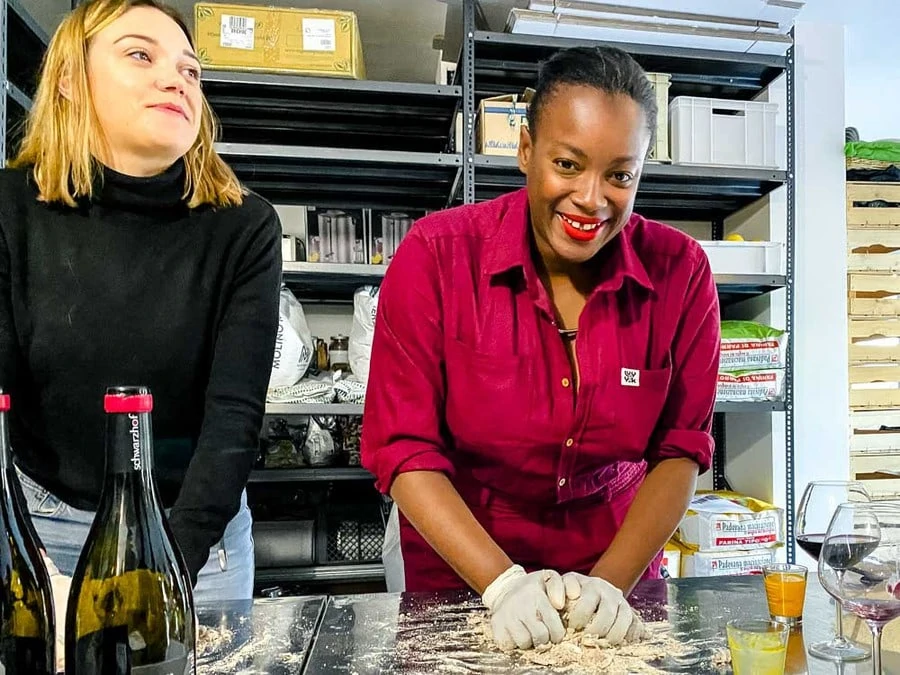
Experiences are a wonderful way to learn more about a culture. You can do this by scheduling group tours or participating in activities like arts, crafts, and traditional customs.
Sharing experiences and stories with locals by connecting through creativity and projects is a wonderful way to bond with the people around you and hopefully make new (and long-lasting) friends.
I still keep in touch with a friend I made through a hobby we participated in together on holiday. Though we live thousands of miles apart, the laughs and lessons we shared over a few hours formed a friendship that lasts today.
Reflect on Your Travel Experience
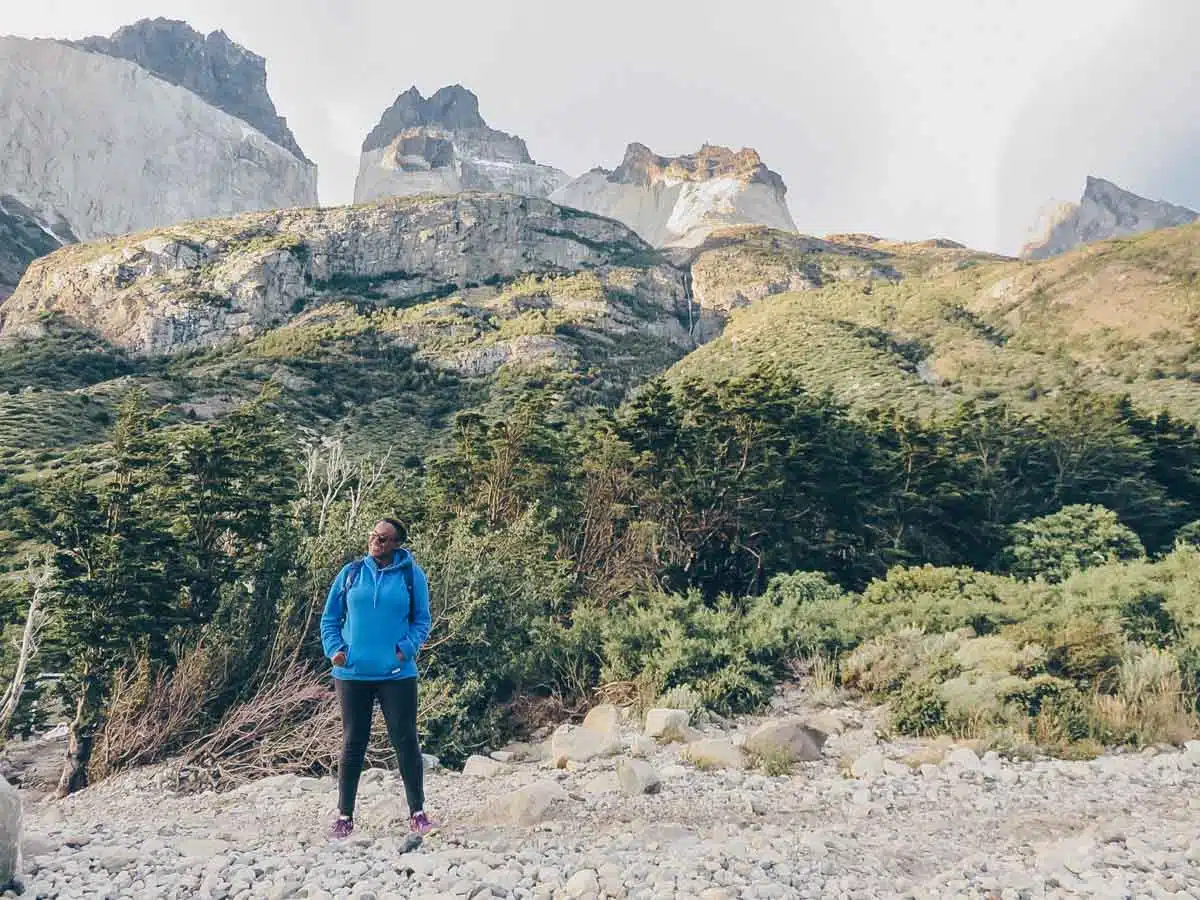
Throughout your travels and after your holiday, be sure to reflect and think about what you’re learning and how it impacts you.
One way I like to keep track of my experiences is by journaling them each day. This not only helps you remember people and places but can help you work through any doubts or insecurities you have and make your trip as productive as possible.
When you’ve arrived home from your cultural immersion experience, do your best to reflect on life lessons learned from your getaway and apply them to your future.
Cultural Immersion: Final Thoughts
Travelling with cultural immersion as a focal point of your trip is not only something I recommend, it is something you should strive to do every time you travel, even in the smallest way.
Understanding more about the location and people you’re visiting not only helps you learn more about the location and yourself, but it also allows you to contribute to that community positively.
Visiting a new place with an emphasis on sustainable, slow, and open-minded travel helps make your holiday a beneficial experience for you and everyone around you.
Love This? Save and Share on Pinterest
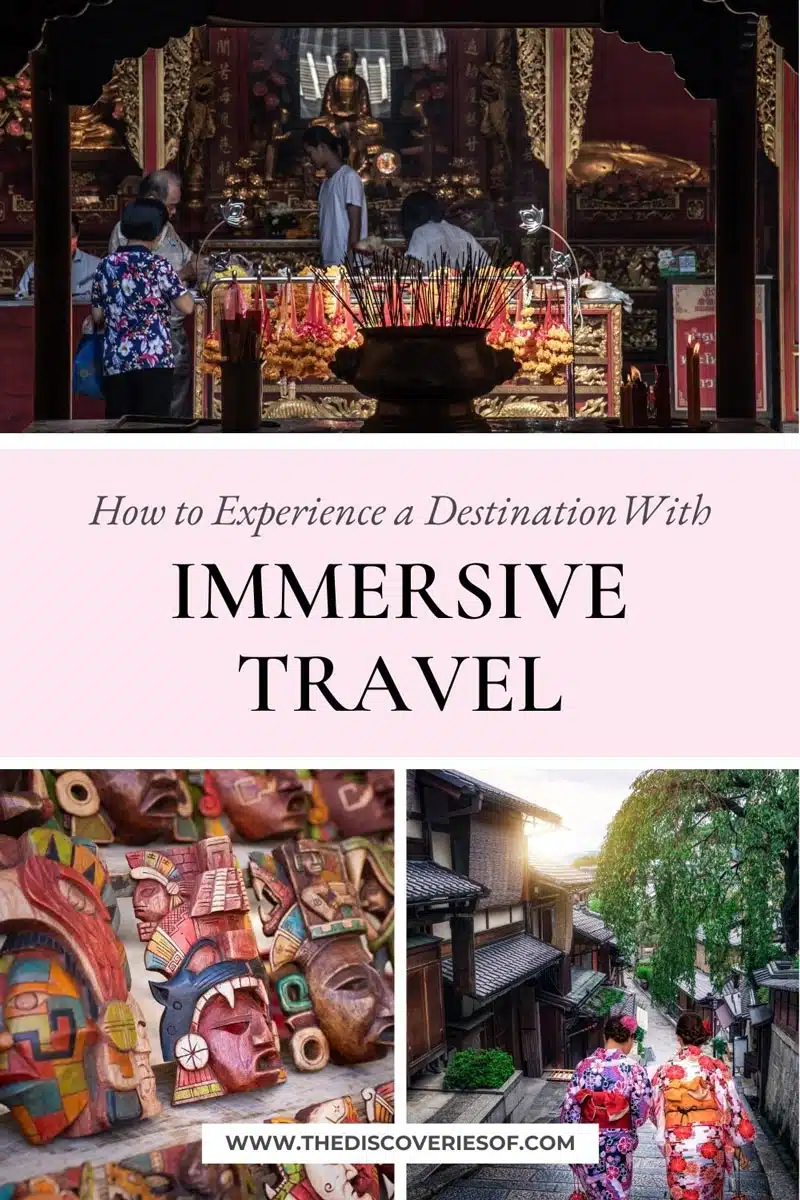
Try These Immersive Travel Experiences
- Exploring Balinese Food Culture
- A Visual Tour of Madrid’s Graffiti Scene
- How to Travel Solo and Love It
- Belgian Beer Culture in Bruges
I’m Julianna Barnaby - a professional travel writer and geek extraordinaire. I started The Discoveries Of to help you to discover the best of new destinations from around the world.
Discovering new places is a thrill - whether it’s close to home, a new country or continent, I write to help you explore more and explore differently.
Related Posts
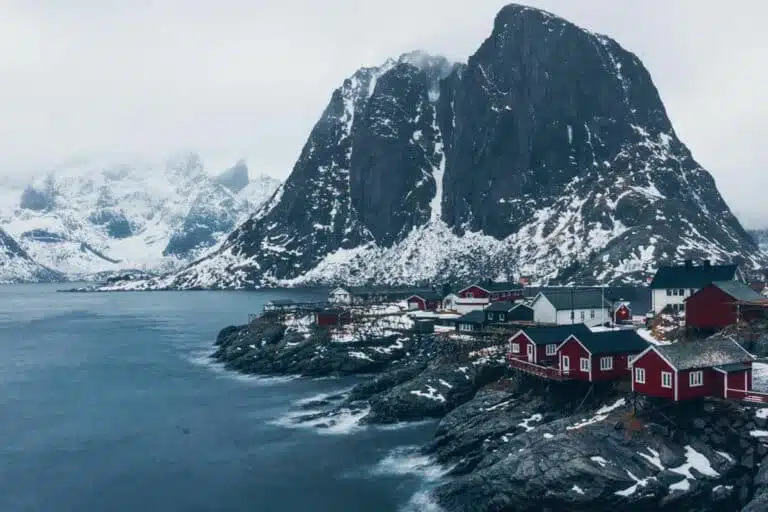
Best Places to Visit in Winter: 19 Wonderful Winter Destinations
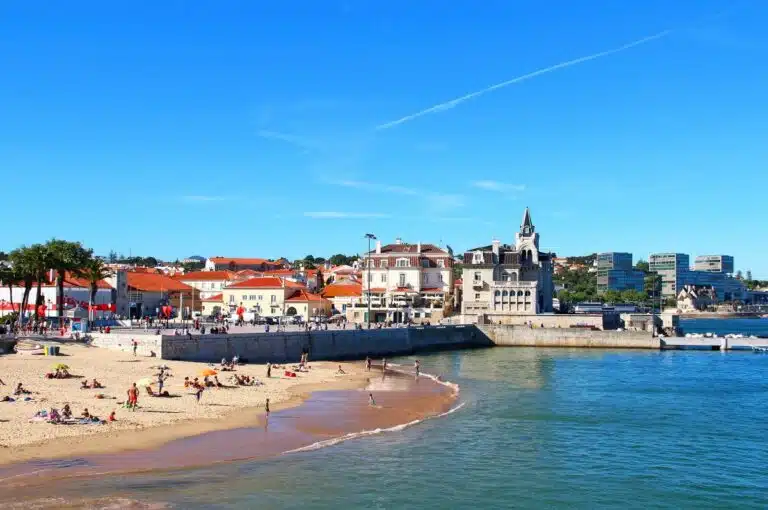
The Best Places to Visit in March

8 Brilliant Airbnb Alternatives For Your Next Trip
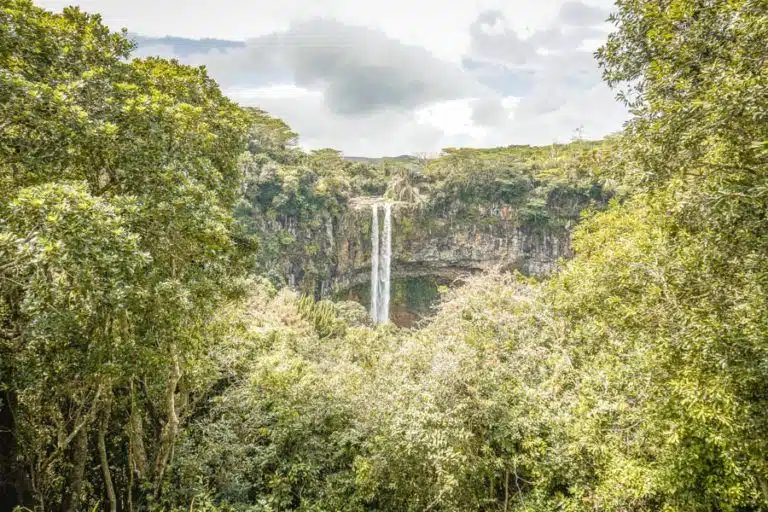
Winter Sun Destinations: 19 Warm Holiday Destinations You Should Know About

Follow me on Instagram for travel inspiration, tips, and guides.
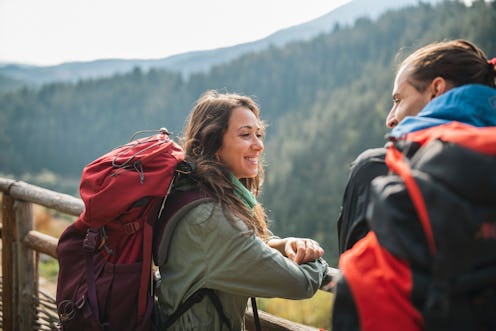
Immersive travel is having its moment. And if you favor vacations that incorporate plenty of local interactions and culturally authentic experiences, you're probably inadvertently helping to popularize it. There are plenty of reasons why immersive travel is the best way to see the world , though: you help boost micro-economies and you get to create the kind of travel encounters that extend far beyond Instagram in the process.
I spent a year working and traveling internationally and can attest that my most enjoyable travel experiences were the immersive ones. And most of them took place in Cuba, South Africa, Zimbabwe, the Dominican Republic and Nicaragua — all very different locations with one important thing in common: it was easy to find intimate, hyper-local travel experiences there, as these places were free of much of the commercialization that plagues the more popular traveling hotspots.
My favorite immersive travel experience was a truly epic participatory camping safari tour in South Africa and Zimbabwe, with Gecko's Adventures. Along with my newly-made camping buddies, I assisted my African tour guides with cooking, camp set-up and planning some of the activities at each stunningly beautiful safari we stayed in. This kind of trip definitely facilitated group bonding (nothing says "new friend" like sharing cleaning duties at dawn) and helped me uncover authentic Africa with other like-minded travellers.
So if you're after similar trips, try and find emerging destinations; places that aren't yet known for their range of chain hotels or package deals. Remember that your experience may be may be a little more rough around the edges (think less rigid itineraries and more DIY, carefully-curated travel that can be a little unpredictable), but it will all the more enjoyable for it. This is why you need to try immersive travel.
Immersive Travel Is Easy (And Cost Effective)
Instead of paying for the organization and expertise of a huge travel agent, plot a deliberate detour and leave things to chance on your next vacation by going immersive. Whether through volunteering or simply changing up a few of your normal vacation habits, going immersive is easy. Forgo traditional accommodation and opt for sites that will save you serious money and place you in the company of locals such as Couchsurfing or MindMyHouse . Keep it hyper-local when it comes to plotting your eating activities too; VizEat allows you to meet people and eat locally as it hooks up hungry tourists and adventurers with expert chefs and guides in an intimate homely setting. I used it in my home city (London, England) to uncover mind-blowingly delicious Brazilian food on my doorstep from a local resident and Brazillian national, Jane. I made tons of new friends, swapped travel and food tips and got recommendations I'd never heard of before for my local area.
You'll Make Travel Friends Easily
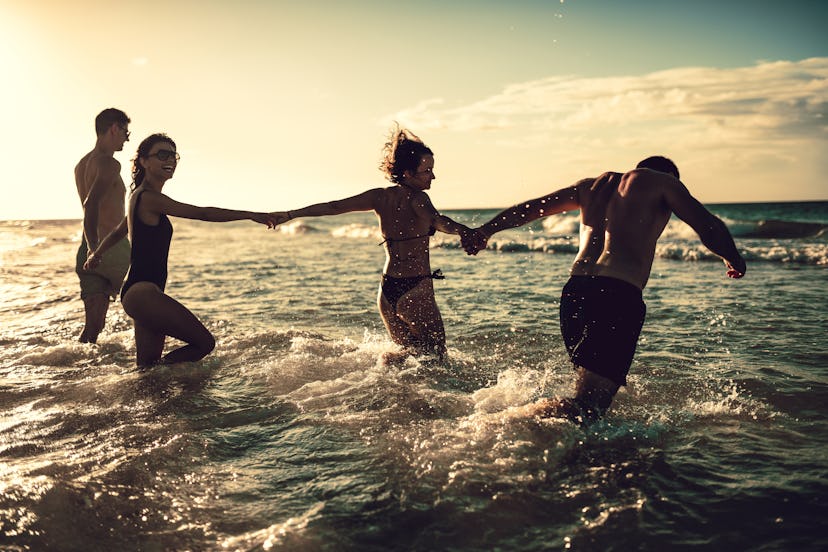
Not only did immersive travel help me meet locals, but my experiences often brought me closer to other like-minded travelers, which I loved because a year of solo backpacking sometimes got a little lonely. In Cuba, I used Intrepid Travel to arrange amazingly informative locally-led tours of Havana — and of course, it this was a great way to connect with backpackers in the process.
You're Helping Local Economies To Grow

If you're conscious of supporting local economies when you travel, immersive travel will help you see just how your money is impacting the area you're visiting. Most of the time, your money won't stay in the community your visiting, they'll end up in a foreign-owned company. But if you arrange your travel experiences with local tour guides, home-owners, renters and small business-owners, you'll aid community development and boost the local economy in the process.
You Help Preserve And Protect Cultures

There's a fine line between an immersive experience and an exploitative one and it's up to each traveler to employ a certain level of personal responsibility in sourcing tours and experiences that are both ethical and beneficial to the local community. There are ways in which local traditions can be preserved in the face of modern technology and globalization. Many immersive experiences give locals the chance to celebrate their culture while simultaneously educating tourists and making a sustainable living. Choosing to stay in a casa (homestay) over a big hotel in Cuba as I did, is a perfect example of this.
You Get To See How Locals Really Live
On my incredible experiential Gecko's Safari , I found that the best way to learn about Africa was by chatting to trip leaders and locals. I uncovered the hidden truth about the current economic situation in Zimbabwe, the besy way to cook a traditional (and delicious) South African meal of chicken and "pap" (polenta), about race relations in Johannesburg and so much more. Immersive travel facilitates shared experiences and ideas and can leave you with an expanded world view and alternative way of thinking - at least it did for me on my Safari trip.
Going Immersive Suits Time-Strapped Travelers
You don't need a huge stretch of time to benefit from an authentic vacay; in fact, having a few days or a long weekend actually gives you more scope for planning all the little details by yourself. If you want a quick break from the rat race and want to keep it real, try 48houradventure which is great for arranging short and immersive travel experiences around the world.
You Experience Travel With Purpose
Immersive travel is to travel with mission, purpose and reason. You'll be privy to a set of intimate, once-in-a-lifetime experiences that can't successfully be replicated by larger corporations and, you'll connect with people beyond the usual vacation staples of beach-parties and cocktails. Perhaps you'll want to volunteer your time building a school in Peru with other travelers, save tigers in Nepal with locals or simply source projects that you feel make a difference as you travel around. Whatever you choose, remember that travel isn't just about selfies and bucket lists; it's about giving back and going deeper.

Sign up to learn more about New York’s newest immersive sensation!
What Is An Immersive Experience?
Thinking about trying an immersive experience or an interactive experience in NYC, but don’t know what to expect? Here’s a breakdown of what an immersive experience can entail. We hope it’ll help you understand our interactive museum in NYC a bit more!
What does immersive experience mean?
When you buy a ticket to an “immersive” experience, it means that you’ll be in an environment that feels or looks real, but is totally different to your original surroundings.
For example, you might put on a virtual reality headset and appear to be alone at the top of a skyscraper - even if you’re standing in a room full of people on the first floor!
What is considered “immersive”?
Many experiences can be considered immersive. Usually, it involves your senses, such as touch, sight, taste and sound.
For example, if you went to a movie-themed dinner party, where the servers are dressed as the characters, the food is the same as the dishes in the movie, and you’re listening to music from the era the film was set in, this could be considered an immersive experience.
A renaissance faire or a virtual reality game could also be classified as an immersive experience. A cultural immersive experience might be a food event that’s centered around a specific cuisine. The definition is very broad but it essentially means feeling as if you’re really in a new setting. Immersive experiences are a great idea for a day out and are perfect for families, date nights and group activities with friends.
What happens at an immersive experience?
Usually, there is a specific experience being created, with a theme or a setting.
Generally speaking, you’ll have some guidance on the type of experience you’re about to have and some health warnings in case there are any elements that you should know about (like strobe lighting).
You might need to use technology to access the immersive experience, or you might need to commit to a costume - it can vary wildly!
%20(1).jpg)
Types of immersive experiences and what to expect
What is an immersive museum .
An immersive museum is a museum that invites you to take part in the galleries that it hosts. You might be able to touch artifacts or create your own pieces inspired by the works on display.
For example, in our interactive museum exhibit on the history of New York TV and radio, you can try your hand at being a radio announcer, or act out a scene on our Honeymooners set from the 1950s.
What is an immersive art experience?
Immersive art experiences use technology to bring aspects of the art to life. You might be able to “enter” famous works of art, seeing the piece from a totally new angle.
What is an immersive theater experience?
An immersive theater experience breaks apart the usual idea of a play being set on a stage in front of you, with actors playing all the characters. Instead, you might take on the role of the character, or the “stage” might be all around you. You might be able to walk around and explore the production, with events happening in a spontaneous way depending on the actions you take.
What is an immersive cinema experience?
An immersive cinema experience puts you in a setting that’s relevant to the movie you’re watching. You might see actors playing out parts from the movie from a replica of the set and be invited to join in.
In our immersive experience in NYC, you can enter a replica of New York’s City Hall subway to watch our film on the timeline of the city from the beginning of Times Square to the present day. With visual and special effects to help create the illusion that you’re in the now-defunct City Hall station, you’ll really feel like you’re in a subway car!
What is an immersive ride?
An immersive ride makes you feel as if you’re traveling in a whole new world! You might be exploring a haunted house with monsters you can shoot, or you might be going to outer space!
In our immersive experience in NYC, you soar above the skyscrapers of New York City! Suspended 30ft in the air, you’ll see a projection on our 40 foot, 180-degree dome that makes you feel like you’re really flying through the air. With wind, scents and more to really immerse you in the experience, you’ll forget you’re strapped in!
The technology behind immersive experiences
Often, technology is used to help amplify or enhance your experience. It can make the experience seem more realistic or more futuristic, depending on the theme!
What is a digital immersive experience?
A digital immersive experience uses technology to enhance the immersion. Rather than relying just on props or costumes, it often uses augmented reality, projections, virtual reality and other types of technology to really give you the feeling of being transported to another place or time.
What is an AR/VR immersive experience?
Augmented reality (AR) is where technology is used to create an immersive experience by superimposing computer-generated images over real images, footage or a real-time view of the world. If you’ve ever played Pokémon Go or used a beauty filter, these are good examples of an augmented reality experience.
Virtual reality (VR) is an immersive experience that can only be accessed using a headset, as it completely hides your view of the real world. What you’ll see will be entirely computer-generated!
What makes an immersive experience special?
There’s nothing quite like an experience that makes you feel like you’ve visited another world. Whether you’re visiting your favorite movie, your dream house, or a historical period in time, an immersive experience makes you feel like you’re really in a different time or place!
The best immersive experiences make you forget where you are in reality and carry you to an amazing new world.

RiseNY’s Immersive Learning Experiences
At RiseNY, our immersive learning experiences delight and entertain while providing an unrivaled look into the history of the Big Apple. Be transported into New York City’s past with immersive, interactive exhibits and rides!
Book tickets to our brand new NYC immersive experience today.


How To Have More Culturally Immersive Travel Experiences
Here’s a rundown of my top 11 tips on how to have more culturally immersive travel experiences that are sure take you far beyond the tourist trail, no matter where you go!
So you might be thinking… what even is culturally immersive travel?
Before I move along with any tips, let me first define exactly what I mean: Culturally immersive travel puts people over places. It shies away from overcrowded top sites, and instead favors experiences that allow you to truly connect with local customs through food, celebration, conversation, and everything in between.
Staying in hostels or guesthouses run and owned by locals, taking strangers up on chai invitations, and experiencing special annual festivals are but a few ideas of immersive travel that come to mind. But this is far from an exhaustive list.
Culturally immersive travel whisks you out of your comfort zone, it throws you into sensory overload and allows you to become one with daily life, wherever you may be.
And now for some real talk: If it was just mountains I was looking for, I can find those at home. But it’s the faces I meet and traditions I’m lucky enough to encounter that make travel as special as it is to me.

Such experiences can occur in a chai shop in India, at a bus station while backpacking South America , in an off-the-beaten-path village, or even on a random winding lane amidst a crowded city. Though some places are more prone to adventure, anywhere that people live has a culture, and thus, “immersive” potential. You just gotta’ know where to look.
So whether you’re exploring an infrequently visited place like Pakistan or coasting along a tried and true backpacker trail somewhere in Laos , here are my top 11 tips on how to have more culturally immersive travel experiences on the road- which will be sure to lead you to some very “ intentional detours.”
11 Ways to Have More Culturally Immersive Travel Experiences
1. stop planning.

This tip is number 1 for a reason, as it’s single-handedly led to almost all of our most memorable travel memories. Don’t get me wrong- of course I map out specific cities or landmarks I want to check out beforehand. But the magic lies in keeping such plans loose and therefore leaving room for full flexibility.

Spontaneity is one with authenticity, which is why not planning is always the best plan. From meeting a curious (and hilarious) bunch of folks on a rooftop in Peshawar, to having a serene afternoon on a picturesque farm in Thall , to finding a group of would-be travel friends in Grahan Village – random adventures with little planning have yet to do us wrong.
2. Travel to friendly countries

Huh? Friendly countries? Yup…Let me explain. By friendly countries, I mean places with outgoing, warm people who are open and happy to meet tourists. This is the absolute easiest way that you’ll be able to really get a taste of immersion culture .
If you’ve perused even a bit of this blog, you’ll know that South Asia is where it’s at. Both Pakistan and India are home to the friendliest people I’ve ever come across- whether it be in villages, cities, or even popular domestic tourism spots, we were always met with conversation, invitations and smiles.
Immersive travel is all about connections and experiences. I travel to feel, see and taste other cultures- to truly immerse myself in new cadences of life. And the best way to do this is through local friends.
Though it is of course possible to meet people anywhere you go, heading to countries where travelers are welcomed rather than shunned or ignored makes the quest for immersive travel experiences exceptionally easier.
Landscapes are always awe-inspiring, but the moments that stay with me have always included chance meetings, which of course are more likely when those who call your destination home are keen to have them as well!
3. Eat, ride and live local

Street food, cheap hotels, and rickety bus rides? You bet. The bottom line is, you’re never going to experience cultural tourism from a resort or 5-star hotel.
Allow yourself to delve into a bit of discomfort- not only will it allow you to travel longer, but it will undoubtedly bring you experiences that are worth traveling across an ocean for.
Throughout the first leg of our “intentional detour,” we met dozens of folks on public buses, whilst waiting for some fried oily goodness at a street stall , or in our budget-friendly accommodation.
Heck, even the simple act of riding a local too-stuffed train is an immersive travel experience.

As a rule of thumb, try to stick as close to the local standard of living as possible. If you’re traveling for a long time, a bit of Western comfort food or a hot shower might do a world of good every now and then, but strive to make such luxuries the exception rather than the rule.
4. Learn some of the language

As English speakers, we’re beyond privileged in the fact that most places we head, there will be someone with whom we can communicate.
But let’s take South Asia for example. Literally everywhere we went, whether it was a remote- AF valley or a random beach town, someone spoke English. But even so, it’s not the same as being able to communicate with people in their mother tongue.
Speaking a bit of the local language will garner you respect, and allow you to communicate with MORE people- because though someone will be speaking English, dozens of others will not be.
Personally, becoming fluent in Urdu is a major goal of mine. Learning the words of a country you’re traveling to not only shows a commitment but also allows you to peel back another layer of a place that would stay sealed otherwise.
5. Stay with locals
Does it get any more immersive than this? Some of our best travel experiences have been come from staying with locals in their homes or in homestays. Not to mention that it’s an awesome sustainable tourism tip to ONLY support small, locally run businesses.

Couchsurfing makes this super easy, though in many countries, you might even be offered a place to stay just by walking outside!
While traveling from Shimla (Protip: I highly do NOT recommend heading there) to Rampur in India’s Himachal Pradesh state, we met a pair of sisters on the bus ride, who then proceeded to invite us to their home once we arrived.
The night we had with them couldn’t have been more different than staying in a hotel and thus made Rampur so much more memorable.

In South Asia, invitations to stay the night were very common, even though staying with a stranger sounds crazy in the West. Trust me, it’s not so unusual in this part of the world!
If you’re a solo traveler, accept invites from families and most importantly, trust your intuition. As for Couchsurfing: check out ALL reviews and don’t stay with folks who don’t have them.
6. Get off the beaten track

This this this! Places that are free from mass tourism are much more likely to foster immersive travel experiences. Why?
Because when a place hasn’t been ruined by tourism, the tourists that do make it there will have an easier time meeting locals AND won’t have to worry about getting stuck in tourist traps or scams.
Getting off the beaten track doesn’t have to mean going somewhere totally unvisited, though. Virtually any city or country has offbeat potential if you know where to look!
Let yourself get lost in a city. Avoid the “touristy” areas. If you’re in a popular country like Thailand for example, base your itinerary off of where most don’t go .
One of the easiest ways to get off the beaten path no matter where you are is by having your own transport.
For example, this epic guide to renting a bike in Goa , India will help you get as far off the tourist trail as possible in one of India’s most popular states!

Here’s another example for ya’: Though Jaipur is a centerpiece of India’s most tourist-laden Golden Triangle route, we still managed to make many “Intentional Detours” during our time there, and in turn found ourselves neck-deep in numerous immersive travel experiences.
How did we do this? Well, we avoided the expensive and crowded top 10 sights and instead made our way to equally beautiful yet significantly more low-key spots around the city and beyond. A little bit of Googling can go a very long way!
7. Travel independently

No, I don’t necessarily mean solo. I just mean without a big, organized tour. While there are some grassroots tour companies that do provide immersive travel experiences, these are far and few between.
For the most part, having a tour guide 24/7 or a driver will undoubtedly put up a wall between you and most locals. Sometimes, even being with a city dweller in a remote village some places lessened our interactions with folks, despite both city dweller and locals being citizens of the same country.
Traveling independently allows for the spontaneity that is so essential for real, immersive travel experiences.
It allows you to go at your own pace, change your mind if you so choose, and most importantly, allows you to see a place for what it really is rather than what a company shapes it to be.
It might seem daunting to plan your own travels, but the end result is beyond worth it for us- and it can be for you too! One caveat to independent travel is the hiring of day-guides for treks or other local experiences. These folks can actually catalyze immersive travel experiences!
Case in point: On our first day in Kalam in Pakistan’s Swat Valley , we were looking for a taxi to explore more of the area. Our driver-who had lived in the valley his whole life-ended up bringing us to a totally off-the-beaten-path village that was virtually never visited.
If you’re looking for a guide, always go local and find someone after you arrive. You might even make a new friend!

Slow travel is my jam, especially when wandering through big-AF countries like India and Pakistan . Not only does traveling slowly allow you to really get to know a place, but it in turn allows you to meet more people.
It’s hard to find immersive travel experiences when you’re rushing around. When I went to Ecuador in 2017 on my first ever international trip, though I definitely became immersed in nature, it was difficult to meet many people in only seven days.
Moving around from place to place every day might sound like a good way to maximize quantity, but digging deeper into one place will undoubtedly give you more chances to have meaningful, offbeat adventures.

Our time in Chitral is a shining example of how slow travel can do you a world of good. Chitral is a small city in Northern Pakistan, and most visitors just spend a night or two before transiting towards Gilgit-Baltistan or to the Kalash Valleys.
Nevertheless, we somehow ended up spending over a week there which led us to real friendships, low-key viewpoints, and even a local polo game.
All things we wouldn’t have known if we didn’t go slow. One of the best (and slowest) ways to travel is by making the decision to teach English abroad. This will not only give you a true expat experience but also allow ample opportunities for intention exploration!
9. Keep phone time to a minimum

Want to know how NOT to have immersive travel experiences? By staying on your phone! Technology certainly has a time and place in every day, but if you’re more caught up in the technological world than the one around you, you’re deff going to miss out on a lot.
I get it- this might be challenging as an introvert. Sometimes I too feel too shy to talk to people, instead preferring the mindless scroll.
Breakaway from this mindset. Even if you’re in a scenario where you’re not the one being spoken to, observe the conversation at hand.
Lose yourself in the chaos, not some app that works just as well back home.
On the other hand, certain phone features can be incredibly useful. Take Google translate, maps.me and Google Maps for example.
Unless you’re plugged into one of those, ditch the digital while you’re out exploring.
10. Attend a local festival or event

I’ve been lucky enough to attend numerous festivals in Pakistan AND a low-key village wedding while traveling through Parvati Valley in Himachal Pradesh, India.
The verdict? Almost nothing else can immerse you in local culture as well a celebration can.
Festivals and weddings are where traditions are on full display. You might get to experience aspects of a religion you wouldn’t have elsewhere, sample homemade foods, join in on customary dances, and so much more depending on where and what you’re commemorating.

Festivals, fairs, holidays AND weddings are an absolute fast track to immersive travel experiences, and I highly recommend inquiring about them while researching or visiting a destination.
While I DID say above not to plan, it IS a good idea to plan (or at least try) to be traveling during a big event.
We intentionally stayed in Lahore much longer than we planned to check out a myriad of different holidays, and each one was absolutely exhilarating.
11. Stay curious

Ask questions about the culture you’re surrounded by and remain open to the answers. Travel is meant to delve into global differences, not to change a culture that’s not yours.
Even if you don’t agree with every aspect of the culture you’re traveling through, be open to it.
Open to the new foods you didn’t even know existed, open to traditions that seem totally foreign, open to wearing the local dress.
Open= the best thing you can be whilst wandering through a far-flung land.
Though respecting local culture is a must no matter where you go, being genuinely and notably curious about that culture is what leads to truly immersive travel experiences.
…and that’s a wrap! I hope some of these tips might be useful for those looking to get a bit more off-the-beaten-path and into some immersive cultural experiences. Got any comments, questions, or caveats? Drop ’em below!
Samantha is the founder of Intentional Detours. Originally from the USA, she’s been backpacking the world since 2017, and is passionate about slow, adventure travel that puts local communities first. She has visited 19 countries and has been living in the Karakoram Mountains of Asia’s Hunza Valley since 2021. She’s super passionate about helping people get off the beaten path anywhere (on a budget of course), and her travel writing has been published in the likes of BBC Travel, CNBC, Business Insider, and more.
Similar Posts

22 Of The Cheapest Countries In Asia to Visit in 2024!

Thall Tales: A Hazy Afternoon in Thall, Pakistan

7 Months in South Asia: Lessons From the Road

22 ICONIC Landmarks in Asia to Visit in 2024!

How much does it cost to backpack South Asia for 3 months?

Life After a Broken Neck: How I Traveled the World With a Fractured C2 Vertebrae
This is such a beautiful blog! I live, work & travel throughout Mexico for my business, and I am *always* encouraging others to explore Mexico the exact way you laid everything out in this blog. I’m saving it for later to show others what I mean by ‘coming to Mexico to truly experience the country.’
These are all excellent tips on how to connect and experience a culture on a deeper level. I agree, connecting with locals and sharing in their ways of life is incredible. On short trips I find this hard to do but on longer ones I try to do many of these things. Thank you!
Your tips are very helpful. Last year, I had visited Bhutan and to know more about their culture, we had stayed in a local’s house for a night. They offered us their local cuisine and told us stories about the Royal family. It was a great experience.
Great guide! I love to travel off the beaten track. Locals are always curious as to why you are here and love telling you about their town. Love the idea of attending a local festival!
Hi Samatha,
This is one of the best blogs I have ever read. I love your style of traveling! Everything you write is so true! And this is exactly the way I love traveling.
I normally love to spend weeks in a country to immerse myself in the culture and learn as much as possible. Certainly, it’s not possible to learn about a country when we quickly run around the touristic spots.
Keep up traveling and sharing your unique travel experiences!
These tips are so great and I definitely need to practise them more when I travel!
These are all such great ideas! I’m usually pretty nervous when talking to new people, but these tips and suggestions are all so helpful to having an immersive and meaningful experience.
Leave a Reply Cancel reply
Your email address will not be published. Required fields are marked *

Zen Travellers
Two round the world travellers and our guide for adding a little zen to your adventures. Travel advice, stories, and inspiration!

What is Immersive Travel?
Living abroad is living real life.
One of the biggest misconceptions about immersive travel is that it is an extended vacation. This couldn’t be farther from the truth. Immersive travel, whether it’s a study abroad or work abroad experience becomes real life.
If you move to France for work or school, your days are not an endless Carrie-goes-to-Paris-in-Sex-and-the-City movie reel. Rather, they include such glamorous activities as figuring out how to recycle without hearing from 5 different neighbours that you did it wrong, or trying to decipher the grade you received on your paper in the Lycée ‘s strange marking system where everything is out of 20, and 10 out of 20 is an average grade, 12 is good, 14 is great, and almost no one ever gets a higher than a 16 out of 20 grade.
In Mali it means doing everything that you would normally do in a day, but without a sink. Worse, it can entail figuring out how to get rid of your monthly waste in the absence of well-functioning garbage removal like we get in the global North. Seriously, my neighbours would rifle through my garbage there so I was hesitant to broadcast my time of the month to the whole street.
Since my first immersive travel experience more than a decade ago, I’ve maintained that one of the easiest ways to get a feel for the local culture is to do something mundane while you’re there, like renewing a license or paying a bill. In France for example, their bureaucracy rivals Canada’s in its seemingly endless and not always sensible layers. Whereas in Mali, if you need anything, you just have to know a guy. You’ll have a go-to taxi driver, a security guard, a doctor, and even a bureaucrat who is more than happy to expedite things for you for a fee of course.
Indeed, moving abroad for work or school is simply living real life in a strange place and that can present daily challenges for even the most mundane things. Despite these challenges, I still believe that it is one of the most eye-opening, character-building, educational, and rewarding experiences that you can have.
Travel Doesn’t Automatically Take all Your Worries Away
This in depth article in Medium explains how a change of scenery can increase happiness and a sense of wonder for a spell in the same way the same way buying a new car might. But soon enough, your new car just becomes your car. You stop caring about whether or not it’s clean all the time, the compliments stop rolling in, and you drive your car to and from work without thinking about it just like you did with your old car. They call this the “Box of Daily Experience”.
Similarly, when living abroad your new home simply becomes your home. You can just as easily slip into auto-pilot while on a work-away as you can while going through the daily drudgery in your home country. This tendency to normalize is so hard-wired into our brains that even a dramatic change of scenery will eventually become mundane. The pull to complacency is so strong that Alistair Humphreys has made a name for himself by encouraging people to break up their daily monotony with “ micro-adventures ” as a way to re-inject wonder in and amusement into their lives, wherever they may call home.
It’s Not all Good Times
Building on the point that living abroad is not one big highlight reel, it’s important to remember that when you put down roots somewhere you will start to see what is bad about a place too. In France for example, I loved my time there and was shown the epitome of hospitality, but was shocked by how a place with such refinement in terms of food and the arts, could also be so casually racist.
In those situations, it’s rather tricky to talk to a local about what you don’t like about their culture, and the people back home can’t relate to what you’re going through either, so you’re often left to deal with those complicated feelings alone. The French even have a specific term for this phenomenon, it’s called being dépaysé, or that lonely feeling you get when you’re outside of your home country.
Even worse, if something tragic happens when you’re living abroad, it can feel extra awful. You may not have your nearest and dearest by you to offer you support, and the locals may cope in a way that seems incomprehensible to you, which can only worsen your dépaysement . To illustrate this point, during my time in Mali, I witnessed a horrific vehicle accident that where there was a fatality. That is never something anyone should have to see but I struggled with how many of my local friends and host family responded to them.
Many of them just shrugged their shoulders casually and said “it must have been God’s will.” I was a wreck after seeing it and wondered if I was overreacting by being so upset considering how cavalier my Malian mates were being. I couldn’t help but feel like in if this accident had happened in North America, people would be demanding answers as to why this life was lost. Someone would be held accountable. Someone would have to pay. But there are just so many challenges in Mali that people view death as commonplace and something that can’t be prevented at any stage in life. Their seemingly callous attitude wasn’t a reflection on their character; rather, it was a reaction to the daily difficulties that someone living in one of the poorest countries in the world must face.
So far from being an extended highlight reel, living abroad can be both challenging and rewarding. I’ve always felt that it’s more like a roller coaster, where your highs are really high, as in awe-inspiring, take your breath away, stay with you forever high, but your lows can be really, really low. Talking about the lows with family and friends back home is never easy.
So How Much did You See?
If you’ve ever done an immersive travel experience, you will have undoubtedly been asked a question like “since you were there for XX months/years, how much of Country YY did you see?”. It’s a fair question, but I think it also stems from that misguided notion that when you live abroad, you’re spending all your time there with a backpack on hitting all the notable tourist sights in a country. If you are working or studying, you are bound by the same limitations of real life the same way that you would at home.
Most importantly, living abroad is about making good relationships with the people who live there, whether developing a rapport with the person who sells you fresh fruit on weekdays with such regularity that she quizzes you about where you were when you miss seeing her for a few days travelling for work, or going to dinner at your colleague’s house. It’s forming relationships that will last with you for a lifetime. It’s seeing the kind man whose shop I visited for months say goodbye to me with tears in his eyes when I told him that I was making my last purchase there. When I realised how much our seemingly trivial interactions had meant to him, I too felt tears swell in my eyes. Perhaps unsurprisingly, it’s the relationships that we have with the people in our lives that matter the most, whether at home or abroad.
So what is Extended Travel then?
Try a local market.
I’m not talking about a super market or a corner store, I mean the local food market where farmer’s bring their produce and ladies try to sell you all kinds of wares. Not only will you see which agricultural products are in season and what is the typical local lunch, you will also get to see how the locals interact with each other and organize themselves. If bargaining is a game, you can learn from the experts. If you don’t begin a transaction without asking how the person’s family is doing, take note. There is so much more to markets than food!
Do as the locals do on a Sunday
Sundays are great day to simply walk around a place, enjoying a quieter pace, and observe how the locals spend their downtime. In La Paz, Bolivia for example, people head to the Plaza Murillo to feed the birds and enjoy some family time outside. It’s a simple and low-cost way to spend some time with the people that you care about and reminds me of how we used to go feed the ducks at the park near us on weekends.
Take Local Public Transit
Whether it’s the sotramas of Mali, métro of Paris, or the collectivos of Peru, taking local transit can be a very eye-opening experience. It tells you how a place runs as well as how people relate to each other while going about their daily business. Do people wait and chat pleasantly with each other while waiting for the bus to fill up, or do they shove in on the train platform to make sure they get a spot? Do people offer to put someone else’s bag or even a kid on their lap to help make room for others, or do they sit quietly facing ahead not saying a thing while clutching their bag? These collective behaviours can tell you a lot about a culture, so take a ride and see what you can learn!
In the end, travelling abroad is no replacement for living abroad, and living abroad does not guarantee a life of non-stop excitement. Instead, immersive travel experiences allow travellers to gain a deeper understanding of themselves and a broader appreciation of the new places they call home by learning to love the little things.
Leave a Reply Cancel reply
This site uses Akismet to reduce spam. Learn how your comment data is processed .

- GENERAL TRAVEL
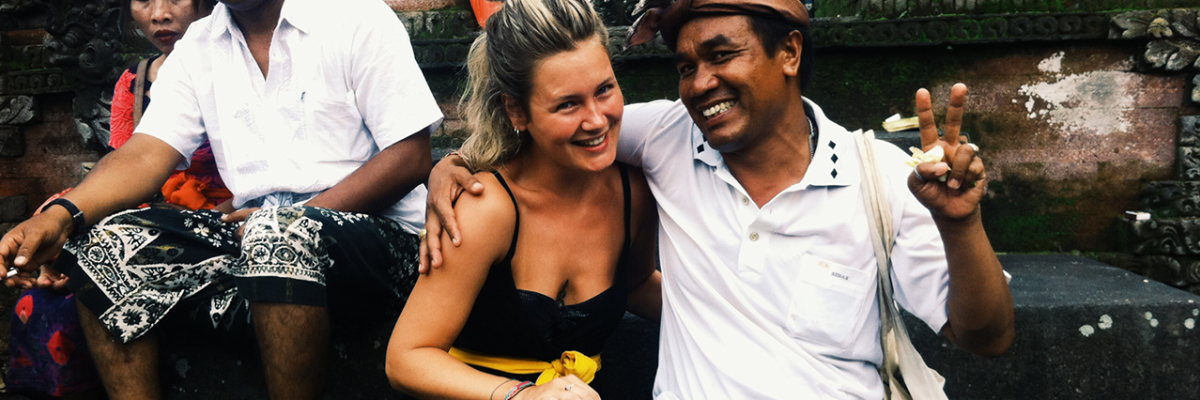
What is "Cultural Immersion" and Why Should I Care?

Raised in a multicultural family in the colorful Chicago suburbs, Raquel’s greatest joy is ...
- button]:border-none [&>button]:bg-white [&>button]:hover:cursor-pointer [&>button]:hover:text-cyan-400"> button]:hover:text-cyan-400 [&>button]:bg-white hover:cursor-pointer" height="1em" width="1em" xmlns="http://www.w3.org/2000/svg">
Cultural immersion, language immersion, immersion programs—no matter in what combination you find the word, it inarguably adorns any vague concept with a certain air of je nais se quoi . Translated to English, immersion is crazy attractive. Why strive to just get a glimpse into a new culture when you could instead marinate and be immersed in its glory day and night? Powerful stuff!
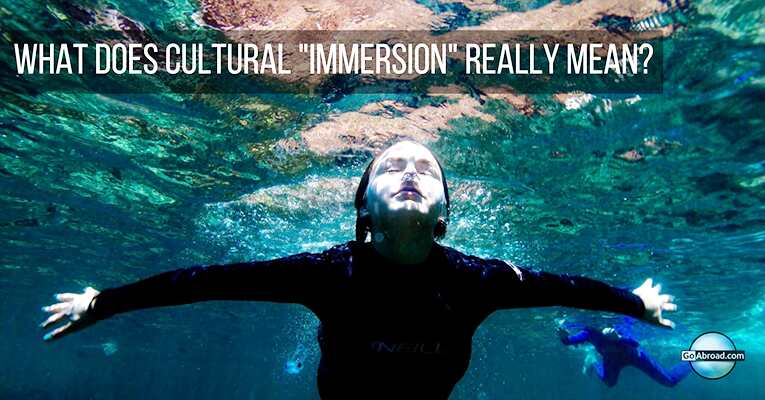
In the travel industry, immersion has transformed into a go-to buzzword to market various types of travel that are more than just your average whirlwind tour bus excursion through Europe. One of the well-known benefits of international travel is becoming a more worldly person by learning about dissimilar ways of life and people around the world.
Since travel is done within a limited timeframe, it makes sense that people want to get the biggest bang for their buck by experiencing as much of the destination as possible. To help capture this higher sense of purpose when traveling, alternative forms of travel like volunteering , teaching , studying , and language programs abroad have sprouted up for travelers of all ages—answering the demand for more immersion programs and learning opportunities that double as adventure.
The literal meaning of immersion is: to submerge in a liquid or being deeply mentally engaged , but in terms of traveling, what does immersion really mean? Can you have American roommates during a study abroad program in Barcelona and still be immersed in the culture? Is participating in a hands-on calligraphy workshop geared toward tourists in China actually an immersive experience?
Being such an incredibly vague concept, immersion doesn’t have a concrete one-size fits all definition . While we unfortunately don’t have all the answers on how to become convincingly Peruvian in a year, we do have a few solid ideas to consider before setting off on your next cultural or language immersion program. Here’s what immersion really means...
The tenets of "cultural immersion"
Mimicking reality rather than buying into cultural stereotypes..
It’s easy to get carried away with the idea of what you think a culture is all about, rather than tuning in to the realities going on around you. Foods, festivals, clothing, and holidays are all obvious aspects that differentiate cultures and transmit an representational image around the world. In highly touristy areas, these aspects can even be severely distorted to meet tourists’ expectations, rather than reflect reality. As the old saying says, "The traveler sees what he sees, the tourist sees what he has come to see." It’s the subtle cultural nuances, such as formality of speech and how to accept compliments, that create the foundational differences in mentalities across countries.
Immersive programs and experiences should provide the opportunity to get into the heads of locals, observe their day-to-day lives, and try to understand the differences between you and them, which can change between cities or even neighborhoods. Explore the same hangout spots, TV shows, grocery stores, and community events.
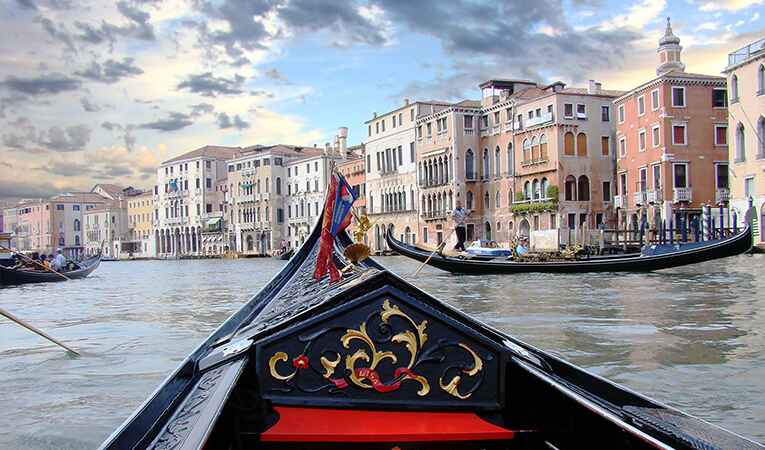
What can possibly be more Venetian than a gondola ride?
The biggest (and perhaps most difficult) pitfall to avoid is buying into stereotypes and your own unfounded perception of a culture. While eating dumplings and walking the Great Wall of China may be the quintessential picture of China, that’s only dipping a toe into the vast ocean of culture. It’s through frequent interactions with locals, that you’ll be able to understand how the Chinese socialize and what modern society is actually like.
What does immersion mean if your goal is cultural immersion? It means you accept your surroundings for the good, the bad, and the weird. It means not projecting expectations or stereotypes onto your observations. Enter with an open mind and you’ll be good as gold.
Actively participating in the language immersion process.
It’s a romantic notion to think that just living with a host family , watching local shows, listening to music in your target language, and eliminating all traces of English is a guaranteed ticket to fluency. That’s just the beginning, because it takes more than that! Unless you’re an infant or young child, advanced proficiency or even fluency will take more than having foreign words yelled at you.
Language immersion programs strive to provide intensive language classes in addition to the environment needed to reinforce what you learn in the classroom. Without a foundation in grammar, basic conversational skills, and an active effort to learn new words and practice, the impact of an immersive environment is limited. Try watching a movie in a completely new language without subtitles, and by the end you’ll find it’s all just still gibberish. Yet if you put in the extra effort to look up some of the commonly repeated words throughout the film, you’ll start to make some progress.
What does immersion mean if your goal is fluency in a foreign language? It means actively participating in the language learning process, rather than sitting idly by, being surrounded by a language.
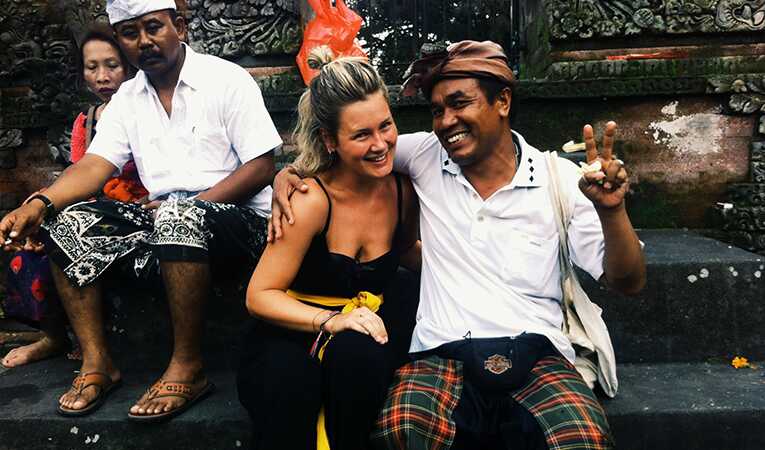
You won’t be picking up any complex grammar structures through osmosis.
Embracing a new culture, while acknowledging your own.
Heaven forbid that even after dedicating your heart and soul into perfecting your Swiss-German accent and mastering Swiss fashion , someone *gasp* catches on to your expatriate roots! Immersing yourself in a new culture doesn’t necessarily mean you have to hide every trace of your own foreign origin. The goal of immersion isn’t to replace your own customs and perspective —all that extra knowledge should supplement what you already know. After all, upbringing and environmental influences from back home condition your brain to perceive your surroundings a certain way.
By embracing your own culture, you can also teach those around you the side of your home country you want them to see, rather than leaving them to pick out stereotypes and prejudices from the media. Cultural exchange is a two-way street! Unless you’re training to be an undercover spy and need to completely assume a new cultural identity, you don’t have to worry about ignoring your own while learning about another.
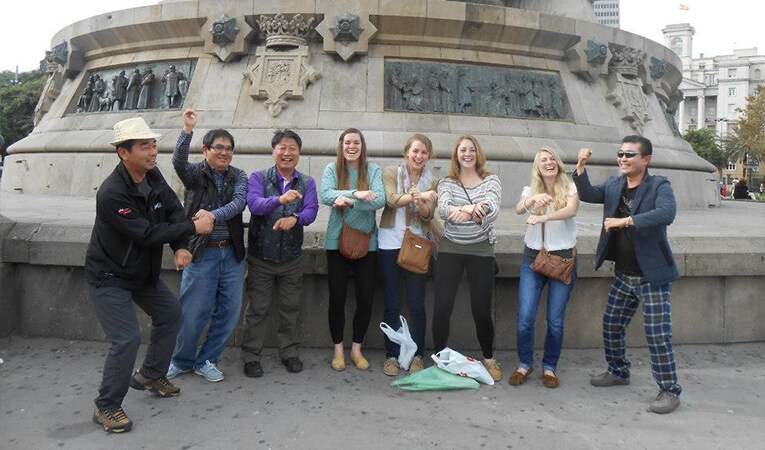
Cultural exchange is about teaching others too, and not being the only one to benefit
Recognizing there are limits.
Unless you plan on never coming back home and living abroad for the next 10 years (most students claim this by the end of their study abroad program, but few succeed), there are limitations to how involved in your host community you can get. Language barriers and time constraints are uncontrollable factors that dictate just how far into the culture you can wade. However, just because you face those challenges, doesn’t mean you can’t find ways to maximize your cultural immersion during short term study abroad programs ! Some pre-departure preparation and putting yourself out there past your comfort zone can do wonders.
Cultural immersion should be sought after
The dynamic nature of cultures and people means that there’s no cookie-cutter mold for what immersion looks like . The people you meet abroad on an immersion program and the connections you have with your surroundings are unpredictable factors that determine how deeply you can immerse yourself. Living with a host family doesn’t guarantee they’ll include you in their everyday routine, just as having American roommates doesn’t mean you’ll be left out of the locals’ loop. What you do have power over is taking advantage of every opportunity to get involved that comes your way to ensure you’re immersed head-deep!
KEEP READING: How to Integrate into Your Community Abroad
Look for the Perfect Program Abroad Now
Related Articles

By Jhasmine Wade | August 30, 2024
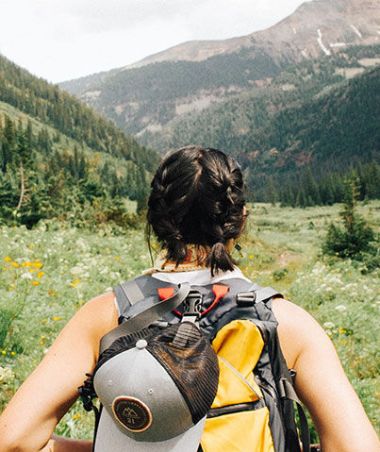
By Gabrielle Sales | August 27, 2024

By Hailey Jurd | August 27, 2024

By GoAbroad Writing Team | August 27, 2024
Popular Searches
Study abroad programs in italy, study abroad programs in spain, marine biology study abroad programs, study psychology abroad, fall study abroad 2024, spring study abroad programs, recommended programs.

2583 reviews
International TEFL Academy

1707 reviews
International Volunteer HQ [IVHQ]

2107 reviews
MAXIMO NIVEL

713 reviews
Intern Abroad HQ
Subscribe to our newsletter
Travel resources, for partners, connect with us.

© Copyright 1998 - 2024 GoAbroad.com ®
- Study Abroad
- Volunteer Abroad
- Intern Abroad
- Teach Abroad
- TEFL Courses
- Degrees Abroad
- High School Abroad
- Language Schools
- Adventure Travel
- Jobs Abroad
- Online Study Abroad
- Online Volunteer Programs
- Online Internships
- Online Language Courses
- Online Teaching Jobs
- Online Jobs
- Online TEFL Courses
- Online Degree Programs
Experiential Travel: Creating Memories, Not Checklists
Trends in the tourism industry are constantly evolving, and experiential travel is one of the latest trends that has only increased in popularity over the years. The key point of experiential travel is to create memories that will last you a lifetime, and if that sounds like exactly your type of travel, this guide will be helpful.
What exactly is experiential travel, why should you engage in it more often, and the top tour operators for experiential trips are just some of the key things covered in this detailed guide. Keep reading to learn more about experiential travel and see why so many people have become engrossed with it!
What Is Experiential Travel?
Experiential travel is a travel method that has been talked about for decades but has become increasingly popular over the last few years. It’s essentially a way of traveling that allows you to really dig deep into the local culture and fully experience every new place you visit.
Experiential tourism is mostly focused on experiences as opposed to destinations. It also entails spending more time with locals and exploring off-the-beaten paths, instead of just visiting tourist attractions with the highest ratings on Trip Advisor and Google Maps.
This type of tourism is also known as immersion travel because it entails travelers being fully immersed in a local culture. I like to think that immersion travel is just one aspect of experiential travel, and that adventure travel is just as an important part of it.
You can immerse yourself in a local culture all you want but if you don’t actually have authentic local experiences, I don’t think you can still call it experiential travel.
The complete opposite of experiential travel would be something like traveling to a foreign destination and staying at a resort the entire time you’re there. Sure, it’s nice to relax for a few days and spend your time sipping cocktails on the beach, but can you really say you’ve visited Mexico if you’ve never left the hotel? Experiential travelers would disagree.
Benefits of Experiential Travel
The main advantage of experiential travel is that you will end your trips feeling enriched by local cultures, and you will create memories that will last forever. You will actually get to learn and understand the history and traditions of a place, and if you do it right, you can make friends everywhere in the world.
Another benefit of experiential travel is that it should be more affordable. You wouldn’t stay in a fancy hotel, but rather in an apartment rented out by a local. You can even look into house-sitting and pet-sitting options, or just stick to couchsurfing for the most authentic experiences.
Choosing local accommodation instead of mass hotel chains allows you to get in touch with the hosts, which can provide valuable tips about the local communities and the destination’s culture.
Examples of Experiential Travel
When I plan a trip to a new country, I usually start off by creating a map on Google Maps with all the most famous landmarks, tourist attractions, and museums. I prefer to do things by myself and I avoid hiring guides and travel agents, so I do aim to achieve some level of immersion into local culture.
I also make it a point to eat at as many local restaurants as possible and try all the most famous foods in that city. The opposite would be sticking to Burger King or McDonald’s because they’re “safe” options.
While all of that is part of immersion travel, a true experiential traveler wouldn’t aim to visit just the most famous attractions in a new city. Instead, they would look for knowledgeable locals who would help them find all the best-hidden gems and places that locals enjoy the most. It could include visiting a quaint restaurant with the best local cuisine or partaking in an activity that is specific to that city.
It means joining a pasta-making class when you’re in Italy, partaking in a Flamenco dance class while you’re exploring Spain, or attending a local football game when you’re staying in England.
Planning an Experiential Travel Trip
When you’re planning an experiential travel trip, try to focus on encountering authentic local experiences. I would suggest starting off with a quick walking tour of the city. But try to look for local guides that do these tours in smaller groups – it will be a much more immersive experience and you’ll get to actually learn something, especially if you’re spending time with like-minded travelers.
Then, I suggest you do some research about the cuisine of the place you are visiting and learn about the different local dishes. Try to find restaurants that are frequented by locals – if you’re not having too much success, ask your host or a local guide for recommendations.
I’ve found that asking people on Reddit can also yield some great results because there are often locals who are willing to help tourists get to know their cultures.
Next, consider what the country or city you’re visiting is most famous for and try to find attractions or experiences that incorporate that to really get a sense of how the locals are living. An example of this would be going on at least one hike if you’re traveling in the more rural areas of Switzerland, or swimming in the Rhine River if you’re staying in Basel because it’s what the locals actually do.
Top Experiential Travel Companies
Velocity black.
Velocity Black is one of the best examples of a modern concierge service that goes above and beyond for its clients. Services offered by the company include organizing trips and holidays that are tailored to your wants and needs. Velocity Black can offer its members deals on flights with the world’s best airlines, free upgrades, and access to some of the best hotels in the world.
The company is also able to organize special experiences for its clients, which range from hanging out with celebrities to swimming with orcas. The annual membership fee is £2,000 and there’s currently a waiting list to join.
Vivid Travel
Vivid Travel is an experiential travel company that focuses on creating personalized travel itineraries for their customers. The agents will ask you questions about preferences for accommodation, ideas for experiences, and attractions, but also about your budget and preferred vacation length.
Then, they can create you a unique itinerary that explores all the things that interest you the most, while staying within your budget. They’ll do all the booking for you, and it’s a great company to use if you don’t like doing the research and bookings yourself.
Niquesa Travel
Niquesa Travel is another tour operator that specializes in custom travel itineraries. It’s more of a luxury travel company, so not the best operator to use if you’re trying to travel on a tighter budget. The company can plan and organize every aspect of your trip, from flights to immersive experiences.
You can contact Niquesa Travel to arrange any type of trip you want, and they also have a few pre-made itineraries that sound amazing. Travel to Morocco on a limited budget and follow a series of clues as you explore the local culture, or go on a road trip through England in a supercar.
Black Tomato
Black Tomato is a favored luxury travel company for experiential travel. This company has pre-made itineraries for virtually every corner of the world, but its agents can also create entirely new customized itineraries for customers.
Trekking in Nepal, safaris in Uganda, and sailing in the Galapagos Islands are just some examples of trips this company can arrange for you. Allowing Black Tomato to plan your trip means you’ll need to tell them everything about your preferences and budget, and they’ll do absolutely everything for you from booking the plane tickets to reserving you a spot in the pasta-making class in Tuscany.
Abercrombie & Kent
Abercrombie & Kent is one of the oldest luxury travel companies with a history of more than six decades. The company is known for incredibly detailed personalized itineraries, as well as excellent service.
Booking a trip with Abercrombie & Kent means that you could attend a private tour of a museum, get customized meals, and stay at places that are off-limits for regular people. This is one of the priciest tour agencies for experiential travel, but also one that can offer you a unique and personalized experience in every corner of the world.
Current Trends in Experiential Travel
Trends in the travel industry are constantly changing, but the core of experiential travel will always be immersive experiences. Adventure tourism is becoming an increasingly important part of experiential travel, and more and more travelers are spending their time hiking, backpacking, rafting, skydiving, and engaging in all sorts of other adventures that are typical for the places they are visiting.
Meaningful engagement with the local communities is also a growing trend in experiential travel. Forming an emotional connection with people in a foreign place is essential for creating lifelong memories, and an increasing number of people will spend their time visiting schools, museums, theaters, and similar places that the locals frequent in their daily lives.
But the way I see it, you should focus on experiences you’re genuinely interested in, and skip any experiences you might not enjoy, regardless of how local they are. An example of this would be if you were in London – maybe it would be a truly authentic local experience to spend an afternoon at a pub and go to a football match, but if that’s not something you would genuinely enjoy, you absolutely shouldn’t do it.
Instead, do something that’s fun for you – see a play at the Globe Theater, or spend an afternoon in the Natural History Museum, if that’s more up your alley.
The Future of Experiential Travel
Even with the rise of experiential travel among young adults, there is still absolutely a market for those who prefer to spend their vacation days lounging and relaxing. However, experiential travel has become extremely popular over the past few years, and it was in part a result of the global pandemic of 2020.
Most of the world was stuck for nearly a year, unable to leave their house properly, let alone travel to a new destination. When the countless restrictions were finely dropped and we were allowed to start traveling again, people wanted to get out of the house and do something.
The future of experiential travel lies in more personalized experiences and sustainability. More and more tour operators are shifting to offering immersive travel experiences to satisfy the growing demand for experiential trips. Also, the importance of AI is growing at the same time as the demand for experiential tours, and it’s hard to imagine a world in which the two don’t become integrated.
It’s expected that travel companies will turn to AI to help create unique and personalized itineraries and that VR will become a bit component of experiential travel. It’s only a matter of time until VR allows us to become fully immersed in destinations that we cannot physically visit, whether it’s a trip to Macchu Picchu from the comfort of your couch or a tour of ancient Rome.
About the Author Anna Timbrook
Anna is the co-owner of expert world travel and can't wait to share her travel experience with the world. With over 54 countries under her belt she has a lot to write about! Including those insane encounters with black bears in Canada.
Leave a Comment:
Save my name, email, and website in this browser for the next time I comment.
- Overview Guide
- 1 Week Itinerary
- Train Journeys
- Epic Drives
- Stunning Lakes
- Historic Castles
- Lauterbrunnen
- Grindelwald
- Chocolate Tours
- Swiss National Park
- Majestic Mountains
- Spectacular Waterfalls
- Famous Things
- Tasty Fondue
- 10 Day Itinerary
- Cherry Blossoms
- Tokyo Shrines
- Dos and Don’ts
- Osaka Guide
- Osaka Itinerary
- Osaka or Kyoto
- Kyoto Day Trips
- Matsumoto Castle
- Tokyo Luxury Hotels
- Island Hopping
- Best Campsites
- Driving Tips
- Beaune, France
- Barcelona Itinerary
- Spain Itinerary
- Greece Itinerary
- Italy Road Trips
- Berlin Day Trips
- Norway Northern Lights
- Netherlands National Parks
- Mostar, Bosnia
- Best Airlines
- Midwest Ski Resorts
- Florida RV Parks
- Washington RV Parks
- Oregon RV Parks
- Utah Camping
- Texas Camping
- Chicago National Parks
- East Coast National Parks
- Colorado National Parks
- Joshua Tree
- Yellowstone
- Alberta Hikes
- Flashlights
- Water Filters
- Sleeping Pads
- Solar Lanterns
- Tent Brands
- 4-Person Tents
- 4 Seasons Tents
- Backpacking Tents
- Beach Tents
- Cabin Tents
- Multi-room Tents
- Pop-up Tents
- Truck Bed Tents
- Underwear (Men)
- Backpacks Under $100
- Microspikes
- Boonie Hats
- In The World
- New Zealand
- Hardisde Luggage
- Lightweight Luggage
- Luggage Sets
- Spinner Luggage
- Durable Suitcases
- Duffel Bags
- Kids Luggage
- Teen Luggage
- Space Saving Luggage
- Business Carry-Ons
- Garment Carry-Ons
- Suitcases Under $50
- Travel Briefcase
- Zipperless Suitcases
- Rolling Briefcase
- Luggage Straps
- Luxury Brands
- American Tourister
- AmazonBasics
- Delsey Chatelet
- Anti-Theft Backpacks
- Backpacks Under $50
- Baby Carrier Backpacks
- Cooler Backpacks
- Backpacking Backpacks
- Climbing Backpacks
- Backpacks for Back Pain
- Beach Backpacks
- Hiking Backpacks
- Business Travel Backpacks
- Laptop Backpacks
- Backpacks for Tablets
- Commuter Backpacks
- Travel Backpacks (Men)
- Travel Backpacks (Women)
- Waterproof Backpacks
- Wheeled Backpacks
- Down Jackets
- Down Parkas
- Fleece Jackets
- Hardshell Jackets
- Rain Jackets
- Softshell Jackets
- Eco Friendly Jackets
- Gore Tex Alternatives
- Heated Jackets
- Lightweight Jackets
- 3-in-1 Waterproof Jackets
- Parajumper Jackets
- Rain Poncho
- Ski Jackets
- Travel Hoodies
- Travel Jackets
- Winter Coats
- Helly Hansen
- Mammut Jackets
- Patagonia Nanopuff
- Survival Jackets
- Flower Captions
- Waterfall Captions
- Tree Captions
- Sunset Captions
- Sunflower Captions
- Rainbow Captions
- Paddle Boarding Captions
- Hot Air Balloon Captions
- Kayaking Captions
- Airplane Captions For Instagram
- Forest Captions

What Is Immersive?
How do you sum-up what makes an immersive experience live ? Well, to shift the idiom, you have to be there – literally – physically present and engaged.
For those that haven’t, been there, it might help to remember (or imagine) being a child and entering a room despite, no, because it was without permission. Perhaps it belonged to the adults of the house, better still upstairs along a corridor, best of all, an attic. The door alone tantalised, sparked curiosity, the first push of the door thrilled. The trepidatious step over the threshold activated anticipation, marked the change in temperature, light, acoustics. Solidity or softness in every surface touched, the thickness of scents, tempted to touch every artefact, the attendance to time, to every moment mattering, so aware of your own awareness. Then the secret knowledge that you did it, the sensory memory of everything in it and all you did there when you make your exhilarating exit without having been caught. Well, that activity, those sensations, resonate with a live immersive experience.
I’m pushing through the door too soon though. In summarising what defines immersive performance we must return to the threshold of this century, where the term surfaced as a catch-all for a dynamic movement in theatre. In fact, we should retrace millennia, as its origins lie in prehistoric stories around fires; in the crackle of the fire as much as the stories that were told. Through age-old, worldwide rituals and pageants, into early-mid-20th Century Modernist experimentations, ‘Happenings’ and solo, durational performance art. The 1970s onwards hailed the ‘immersive’ predecessors – Welfare State , Brith Gof , and Geraldine Pilgrim ’s site-responsive work – and Catalan La Fura Dels Baus ’ first international tour, landing at London’s Royal Victoria Docks in 1983, was key .
On the cusp of the millennium Deborah Warner’s St. Pancras Project (1995) and Artangel productions, such as Hans Peter Kuhn/Robert Wilson’s, H.G. (1995) and Janet Cardiff’s audio-walk (1998-99), proved inspirational. Wrights&Sights research-led practice (1997-) straddling the academic and artistic, nourished graduate practitioners. BAC ’s Playing in the Dark Season (1998) was important, hosting Sound and Fury ’s early work, while De La Guarda’s Villa! Villa! (1999), marks the South American influence; a gig-dancetheatre-mashup staged at Camden’s Roundhouse, incorporating aerial acrobatics and film-projection. The turn of the 21 st Century saw a style of performance emerge from this rich legacy, alongside the physical theatres that reinvigorated British performance from 1980-99, and equally from underground club nights, burlesque and circus, cinema and music festivals. UK-based artists, prominent throughout the noughties for creating work that required a term to describe the feeling as much as the form they were producing, including, Carnesky , dreamthinkspeak , Punchdrunk , Shunt , wilson+wilson , ZU-UK , ensured that by 2010, ‘Immersive’ was fixed to this expansive performance genre.
Live immersive work can be encountered in a variety of ways; unexpectedly in public locations , privately in transit , in shipping containers , underground bunkers and labyrinthine vaults, walking across moors , or as game-play . It might be experienced in the comfort of your own home, where you’re cast as protagonist in, or voyeur of , your own imagination. The pandemic saw to the rise of immersive interactions on phones , via WhatsApp and Zoom . A wealth of performance theory now exists examining live immersion, spanning the what it is and the how to make its , to its reframing , decolonising and beyond , into arguments for the ‘ post-immersive ’. Critical contexts also survey the blurred lines between the liveness of live immersive experiences and its associated forms .
Swiftly embraced by the mainstream and exploited commercially around the globe, it’s now commonplace for publicity and programming materials to capitalise on the term. Immersive experiences are as much part of the West End experience as the experimental scene. Think, Mamma Mia: The Party or the London revival of (note the lengthened title), Cabaret at The Kit Kat Club , offering a drink-dining experience to those who sit at stage-side tables, while the ‘cheaper’ seats in the auditorium look on at the world of the event. Bridge Theatre’s Guys and Dolls ’ ‘immersive [rather than seated] tickets transport you to the streets of Manhattan and the bars of Havana’, meaning, standing tickets close to the action on the moveable stage and a bit of performer interaction as the musical plays out. It’s certainly entertaining to experience it this way, but fully immersive it’s not. These shows use immersive techniques effectively within the standard conventions of theatre spectatorship; and this spectatorial set-up helps demonstrate a scale of immersivity, determining what is and isn’t immersive.
So how can you tell what it is when you’re in it? Well, that’s exactly it – you will be in it , rather than looking on at it, separated from the stage by an auditorium. This isn’t a value judgment on which is better, simply an acknowledgment of what happens in live immersive experiences that differentiate them from other performance events and comparable disciplines. Whether grand or minimalist in scale, live immersive events always establish an in-its-own-world-ness, that exists on its own terms. Wholly immersive live experiences come close to dreamworlds – merging the actual and the imagined, playing with perception. Hermann Hesse’s Steppenwolf or Lewis Carroll’s Alice are often called upon to help describe these live, theatrical experiences; led by curiosity, tantalised by signs through flickeringly lit doors, falling into topsy-turvy , back-to-front dream realms, where tunnels and mirrors, become portals and metaphors. (Unsurprisingly, Alice is repeatedly adapted into immersive experiences, notably in Labyrinth’s London Waterloo Vaults and Third Rail Project’s NYC, Then She Fell .)
Live immersive experiences engender a feeling of being submerged in another medium that operates outside of the timeframe, rules and relationships of the everyday. These are places that have their own rhythm and choreography. Large-scale works occupy vast, multifaceted sites where audiences roam freely, piecing together narratives, their rhythm and flow making the space buzz with vitality. Concentrated one-to-one encounters may still time, despite lasting minutes rather than spanning hours (see, Curious , Adrian Howells , or Tania El Khoury ). If inside, experiential qualities of dimension and design are exposed through scenography, which may include letting architectural details do their own, already evocative, thing. If outside, the natural power of landscape or intricate details of townscapes are harnessed ( WildWorks works work here).
Whole-body engagement intensifies affective involvement in ways that, conceptually and physically, move beyond the usual exercising of this capacity in an auditorium seat. Duration becomes an experiential element within the world. Tactility is prioritised; sensual details that are touch-real, break down the boundary between the ‘real world’ and this imaginary one. Olfaction can be as significant as vision or hearing in interpreting the work. Performers are expert at interacting with audiences, often silently, subtly scored. Digital technologies, if employed, are crafted to take the audience further into the sensory experience, rather than distancing them from it ( ZU-UK’s Within Touching Distance is exemplary ).
Audiences inhabit these worlds, interact intimately with the stories they tell. In facilitating this, some kind of ‘contract’ always exists to set up the mechanisms by which participants enter the world, engage with it, are enabled to exit, return to reality. Guidance may be explicit – written or spoken prior to entering the space – or implicit within the world’s composition, becoming clear in a tacit fashion as individuals move through; follow this candlelit path to that light-source, head to where the music plays. Binaural soundscapes in headphones contour imagination, with instructions that direct and regulate action.
Expertise in the handling of processual caretaking is vital, demanding sensitivity to the principles behind invitations to participate. Consequently, live immersive practice has been held accountable for issues of consent and is at the forefront of theorising the ethics of this practice , mirroring equivalent research occurring in XR while embedding safeguarding within dramaturgy for artists and audience members alike. Given that audiences shape these experiences, in form, narrative, theme and interpretation, alternative collective nouns are often used by makers, from the collaborative, co-authors, co-creators, co-designers, to those descriptive of activity; adventurers, comrades, passengers, players. The interactive nature of this work, has led some companies ( Access All Areas , Coney’s playful collaborations , or Slung Low ) to deploy the form to model both inventive approaches to theatre and alternative ways that societies might operate effectively. A unique charm of this work is that it can remind individuals of what it is to be present ; alive and engaged in community and conviviality, reinvigorating social connection and exchange.
The Immersive Experience Network is testament to how live immersive experiences have proliferated globally. The openness of the form to digital innovations as much as established performance traditions, the progressive thinking of its makers, the massive audiences drawn to it, all indicate that the live immersive realm will remain inventively nimble, expanding scope and reach. The diverse experimentations that (must) continue to thrive in the arts in higher education, the pupils testing the form as part of their secondary studies , the children and infants who have access to bespoke immersive experiences, signal not only a future for live immersive practice but also its intrinsic value, beyond the commercial; to imagine and create new worlds.
Josephine Machon is a practitioner-researcher working in the field of experiential performance. She is author of The Punchdrunk Encyclopaedia — 1 st Edition (Routledge, 2019; 2 nd edition forthcoming), Immersive Theatres: Intimacy and Immediacy in Contemporary Performance (Bloomsbury, 2013) and (Syn)aesthetics: Redefining Visceral Performance (Palgrave Macmillan 2009, 2011). She has published widely on immersive and interactive performance. Josephine is Joint Editor for The Palgrave Macmillan Series in Performance & Technology, which includes her own co-edited collections in this area in its catalogue of titles. Her broad research interests focus on audience experience and the creative intersections of theory and practice in performance making.
- Knowledge Bank
Related news & articles
Making immersive: seeking funding.
Subscribe to the podcast We’re joined by Polly Barker, Marie Klimis and Natasha Stanton to…

Spotlight On: Experiential Art
THE DEFINITION Five years ago, everything was curated: playlists, menus, holiday packages. Today, everything is…

Live Action Role Play (LARP)
What is LARPing? Live Action Role-Playing (LARPing) is an in-person interactive role-playing game where participants…

Spotlight On: Scare Entertainment
Have you ever felt so terrified, yet exhilarated? This is the primary aim of scare…

Experiences
Customer Engagement Services
Customer support.
Dedicated Human Support Specialists.
Trust and Safety
Expert Content Moderation Specialists.
Community Management
Dedicated Community Engagement Specialists.
VIP Engagement and Growth
Personalized VIP Support Experts.
Professional and Managed Services
Professional services.
Tailored Project Implementation Specialists.
Managed Services
Continuous Improvement and Support Specialists.
Featured Case Study

SYBO’s Subway Surfers Achieves 4.3 CSAT and 77% Automation Rate with Helpshift in Under 3 Months
- Case Studies
Featured News
Three cx trends coming to your industry in 2024, ai cooling off period projected by helpshift in 2024, participate, get support, featured resource.

How Multilingual Support Improves Global Customer Experiences
- BACK TO BLOG
What Is Immersive Experience and How to Create It
Stay updated with helpshift's newsletter.
By subscribing, you agree to our Terms and Conditions .
Follow us on
Table of Contents

Immersiveness is a way of perception that determines the factor of changing consciousness. We can see various examples of immersive experiences in movies, theatrical performances, computer games, and apps. There are many examples of immersiveness in culture. For example, the “Secret Cinema” and “Sleep No More” immersive theatres in London and New York offer to plunge into virtual reality and promise to completely blur the boundaries between the real and the virtual worlds. But in this article, we are going to talk about immersive experiences in terms of technology and brand marketing.
What is Immersive Experience?
An immersive experience fully engages an individual’s senses and attention, often through VR, AR, or 360-degree videos. It makes users feel as if they are part of a different reality, enhancing their interaction with the environment through technology, creating a deep sense of presence and engagement.
Types of Immersive Technologies
Immersive experience is usually defined as the immersion in certain, artificially formed conditions. It includes virtual reality (VR), augmented reality (AR), and mixed reality (MR) technologies.
Virtual reality
Virtual reality (VR) is a non-existing artificial world, into which a person can completely “immerse themselves” not only as an observer but also as a participant. VR systems are technical devices and software that create the illusion of being in this artificial world and, in some cases, allow manipulating objects.
Most VR systems have the following key characteristics:
- Real-time simulation. The virtual reality system should provide the user with a picture, sound, and a complex of tactile and other sensations (if any) in response to the actions performed, instantly, without noticeable delays.
- Realistic imitation of the user’s environment. To fully immerse the user in the world of virtual reality, the system must display virtual objects with such a level of realism that they look like they are in the real world.
- Multi-user mode. Virtual reality systems are distinguished by the number of simultaneously working users and are divided into individual and collective. Typically, individual systems are based on display devices only one person can operate (helmets, goggles, etc.). Collaborative systems are created based on display facilities that are available to several users at once.
- Interactivity. In the “virtual universe,” the user must be an extremely active observer. They must be able to interact with the virtual immersive environment, and it, in its turn, will rely on the user’s actions. This will allow the user to look around and move in any direction within the environment.
Virtual reality experience is now also available for mobile devices. Google Cardboard, invented in 2014, is an analog of modern virtual reality devices. It is made of cardboard and allows an immersive experience through a smartphone screen.
Most people associate virtual reality with games. Meanwhile, many leading companies have already figured out what to do with VR technologies and are successfully using them to promote their business.
- In 2014, The Marriott hotel chain introduced The Teleporter 4D virtual reality booths that take the user on an introductory tour of one of the cities. The booth even simulates the climatic conditions of the selected city, up to odors and humidity levels.
- Lexus invites you to a virtual test drive of one of its latest models. You will need only a smartphone and Google Cardboard.
- In 2016, Samsung decided to help people overcome their fears by using virtual reality and launched the “ Be Fearless ” program. Participants took a course using Samsung Gear VR to test whether simulating stressful situations in virtual reality helps them learn how to deal with them in real life and get rid of phobias.
- The fast-food chain McDonald’s did not invest in the creation of VR content and expensive products. It simply came up with new packaging for Happy Meal , which can be transformed into virtual reality glasses.

Augmented reality
Augmented reality programmatically combines two initially independent spaces: the world of real objects around us and the virtual world recreated on a computer. A new virtual environment is created by superimposing programmed virtual objects on top of the video signal from the camera and becomes interactive through the use of special markers.
The basis of augmented reality technology is an optical tracking system. It means that the camera becomes the “eyes” of the system, and the markers become the “hands”. The camera recognizes the markers in the real world, “transfers” them to a virtual immersive environment, superimposes one layer of reality on top of another, and thus creates a world of augmented reality.
AR has been used for many years in the healthcare, advertising industry, military technology, games, object monitoring, and mobile devices. The most known example is the Pokemon GO mobile game.
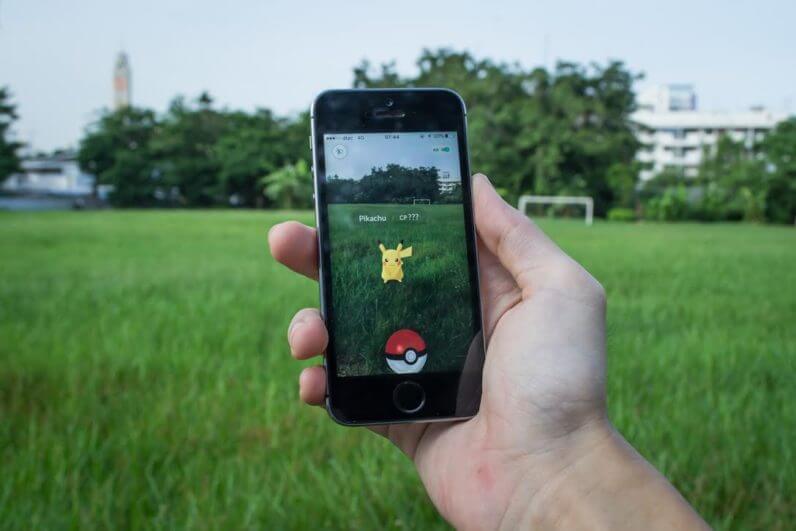
Another interesting example is the Concerto Timer for the Häagen-Dazs ice cream, which was launched in 2013. The premium ice cream retailer Häagen-Dazs decided to combine information technology and classical music. The company recommends waiting for 2 minutes after removing the ice cream from the freezer. During this time, it takes the optimal temperature so that you can enjoy its taste to the maximum. To help ice cream lovers, Häagen-Dazs has come up with the Concerto Timer app. It was the first iOS mobile app to combine video and Kinect 3D scanning technology, providing augmented reality for ice cream lovers. Concerto Timer offered the viewer a two-minute concert, which shortened the waiting time for the Häagen-Dazs ice cream to acquire the richest taste.
Mixed reality
Mixed reality is also called hybrid and is a model of world perception in which the real and virtual worlds are combined.
The original mixed reality technologies were developed back in the 1970s and 1980s, although then their modern understanding had not yet been achieved. As is usually the case, MR was primarily developed for military and educational purposes, and only then similar technologies were transferred to the commercial and entertainment industry.
Often, terms and abbreviations such as MR, VR, and AR are confused with each other and used as synonyms. Although certain features can help distinguish between the different types of reality:
- The real world is an objective reality, not augmented by artificial technologies.
- Virtual reality is a subjective, fake world created with screens, holograms, and other artificial means.
- Augmented reality is a digitized real world with hints, holograms, and other objects superimposed on top of it. It is a virtual world that is built on the basis of the real one and obeys it in everything.
- Mixed reality differs from AR in that virtual objects in it can affect the real world, and not only obey it.
With the help of MR, it is possible to conduct simulation-based training, such as military training, without increased risks. Additionally, MR is aimed at creating an interactive environment with the full inclusion of virtual objects in reality. As a result, it uses such objects for commercial, developmental, and entertainment purposes.
Based on the diversity of technology, examples of MR applications are also quite diverse – in terms of capabilities, potential use, and requirements that are imposed on the user. Here are some of them:
- 8i, the MR startup, developed a Holo app that was used to create a lifelike hologram of John Hamm for the Sundance Film Festival and a Buzz Aldrin hologram for SXSW. It is possible to download the Holo app to a smartphone to create custom 3D animations.
- NASA collaborated with Microsoft to create the OnSight software helping scientists and engineers be virtually present on Mars while they are still on Earth.
- BAE Systems used a mixed reality system to improve its battery-building process by 40%. The system projects a holographic template that helps factory workers visualize all the steps in the process.

How to Create an Immersive Experience for Your Brand
Below are some interesting examples of immersive experience usage by various brands.
Experience that a brand can use over and over again
To bring its latest product, Silymarin CF Vitamin C Serum, to the media, SkinCeuticals created an immersive experience that provides the same level of interaction as a live event. The popular skincare brand attracted a total of 120 users attending three separate small events of 40 people each in November and January 2020. The Silymarin CF advertising campaign website was available for media viewing for a week after the event.
The centerpiece of the experience was an immersive landing page that mimics a face-to-face visit to a SkinCeuticals lab. Throughout the event, interactive icons and push notifications encouraged guests to watch or read educational materials about the Silymarin CF product, and a skincare quiz supported the effect of the individual approach.
In addition to educational content, the attendees could tune in to an interactive live broadcast that included a Q&A section where everyone could ask a question. After the live broadcast of the presentation, which took place outside the door of the “treatment room”, the participants took part in a quiz to consolidate their knowledge.
Imitation of a store, only better
In March 2021, skincare brand bareMinerals hosted a Virtual Villa event featuring Hailey Bieber, the bareMinerals Clean Beauty Ambassador. She told the consumers about her experiences and favorite products that visitors could purchase in real-time. Haley was filmed full length against the background of a chroma key, so it seemed that she was really in the house.
The immersive experience also included a discussion with dermatologist Dr. Joyce Park on the ingredients in some of the latest products and a makeup masterclass from makeup artist Denika Bedrossian. Despite the realism of the picture, the organizers complied with all COVID security rules – Dr. Park and Bieber were actually in two different locations – San Francisco and Los Angeles. Consumers were able to experience the resort-style bareMinerals ‘Virtual Villa’ space. Inside the virtual boutique, the visitors could view 3D images of bareMinerals products and learn more about each of them.
Ability to “touch” the product
The main interest of augmented reality marketing is the ability to “touch” a product. Many well-known brands have already tried this technology.
- BMW has given the user a chance to try out 3D models of their cars.
- The Coca-Cola company cooperated with the Avatar movie based on augmented reality.
- Burger King used the motto “Burn That Ad” in its advertising campaign in Brazil. The idea is simple – the user scans any competitor’s ad and “burns” it by using augmented reality. The most active users are rewarded with a free branded whopper.
Immersive storytelling and virtual try-on
Augmented Reality lets you put your users in the center of your story, capture their attention, or showcase products right on their faces. Cosmetic brands like L’Oreal, Maybelline, Mary Kay engage consumers with virtual makeup try-on that successfully boosts purchases among Gen Z. Turkish Airlines has created a branded filter on Instagram called ‘Turkish Airlines My Dream Destination Project’ that immerses people into virtual travels during the pandemic. The campaign attracted 1.2M impressions, 993K opens, 171K captures, and 21.8K shares. Such immersive experiences can be built with Banuba Augmented Reality SDK that lets you add Snapchat-like filters, AR makeup, and animated backgrounds to your app or website.
Virtual reality mobile games
Here are some examples of VR-based mobile games that you can immerse into by using Google Cardboard.
- Cosmos VR is an audio-guided journey through the Universe. There is an opportunity to visit many of its corners and galaxies.
- Minos Starfighter VR (End Space VR in the App Store) is an arcade space shooter with a nice design and tempting blasters. The developers have added support for a Bluetooth joystick for those who find it inconvenient to turn their heads in a spaceship.
- Bad Dream VR is a horror game, where you have to wake up in an unfamiliar place and try to escape from those who are following you.
Augmented reality mobile games
The examples of AR mobile games are as follows:
- Pokémon GO . The founder of the AR genre. In the game, you can walk in real terrain and use your smartphone’s camera to catch Pokémon that appear on the screen when you reach the desired point. The game was released in 2016 and made a splash – millions of gamers around the world got up from sofas and went out into the streets to catch cute pocket monsters. Since then, there have been many changes in Pokémon GO: tournaments, Pokémon trading, raids, and even social media.
- Jurassic World Alive . The game features educational content, a dinosaur raising simulator, and mini-games. You have to explore the real world by using geolocation and search for the DNA of prehistoric monsters. Having collected enough elements, the player will be able to create a pet in their laboratory, and then train it to fight other creatures in PvP battles. The graphics and animation are great, and the users can admire the grown dinosaurs in the real world by using AR.
- Harry Potter: Wizards Unite . The game is built on the same engine as Pokemon Go, but with its own unique magic features. Its main difference is in the presence of the plot. Each new player will have to become an employee of a special unit of the Ministry of Magic and fight the disasters that have befallen the world of wizards. By the way, in the game, you can find familiar characters from books and films. There is even Harry himself, who is voiced by actor Daniel Radcliffe.
- Ghosthunters: Slimer AR . This is another AR game based on the popular Ghostbusters franchise, being an excellent choice for those who have long dreamt of hunting ghosts and clearing their city of evil creatures. Turn on the app on your smartphone and find spirits and ghosts lurking in reality. Great visual effects and vivid graphics, dynamic gameplay, a wide selection of equipment and weapons – everything is in this game.
Over to You
Modern technology allows brands to improve the experience of their customers, allowing them to immerse into an app or game with the help of virtual, augmented, and mixed reality. We hope that our examples have inspired you to create such an experience for your brand, app or game. Good luck!
Share this:
Previous Next
Related Articles

Best 6 Multilingual Software Solutions That Deliver Results

AI Localization Decoded: Powering Multilingual Support Strategy

How to Build a Chatbot That Communicates Every Language

- Help Center
- AI and Automation
- Agent Workspace
- Console and PC
- Integrations
- Customer Engagement
- Professional and Managed
- Knowledge base
- Developer guides
- Resource Library
- Product Announcements
- Cookie Settings

These Immersive Tours Make for More Mindful Vacations
Even when we travel, stepping outside of our daily lives and being more present is easier said than done. but with these guided adventures designed to connect you with the here and now in italy, morocco, and peru, savoring the moment is more accessible than ever..
- Copy Link copied

Courtesy of Trafalgar
Imagine sitting down for a Moroccan feast under the stars with new friends, taking a sensory stroll through a bustling market with a Peruvian chef, or going on a scenic bike ride through Italian wine country. These are the types of restorative experiences that make trips more enriching—especially when shared with others. As more and more pursue mindful exploration, guided tours help travelers forge deeper connections with people, nature, and our surroundings. And with a variety of options—from small group tours to escorted expeditions—that cater to every travel style, they can captivate both first-timers and seasoned globetrotters.
Fortunately, the United States Tour Operators Association (USTOA) makes finding your dream vacation with a tour operator even easier. Offering a curated network of specialized and trusted tour providers in epic locations, all you need to do is decide where you want to go. For a journey with awareness and intention, dreamy destinations like Italy, Peru, and Morocco paired with exclusive experiences can help you feel even more culturally immersed (think an after-hours museum visit or a private cooking class inside a local’s home), resulting in incredibly rewarding travel. These five itineraries allow you to go beneath the surface and feel the heartbeat of these awe-inspiring places.
Bike through Tuscany by the sea

A sunny summer landscape near Porto Ercole, in Monte Argentario, in the Tuscany region of Italy.
Photo ©iStock
The breathtaking southern coast of Tuscany is a cycling paradise brimming with sweeping seascapes, sprawling vineyards, and hidden medieval villages. All of this and more awaits on the Italy: Southern Tuscany & Giglio Island tour with VBT Bicycling Vacations, where a small group of active adventurers (no more than 20) will spend a glorious week cycling the Maremma coast, one of Italy’s last best-kept secrets.
Pause to visit crystalline sea beaches, stroll through quaint fishing villages, and hop off your bike to visit Giglio Island, famed for its fortressed village and panoramic hiking trails. Guided tours and tastings will bring you to family-run olive oil producers, vineyards, and Tuscan baking classes. With fattorie (farm-stay) accommodations and farm-to-table dinners along the way, all you have to do is bring your appetite and enjoy the ride.
Explore the Amazon Rainforest and Machu Picchu

Amazon River; Canoeing through Mirrored Forest
Photo ©Aqua Expeditions
The protected Pacaya Samiria National Reserve, one of the most biodiverse regions of the Amazon basin, boasts more than 1,000 animal species including elusive pink river dolphins, sloths, and caimans. Now, one of the richest ways to experience it is on Abercrombie & Kent’s new Peru: Machu Picchu & the Amazon tour.
This once-in-a-lifetime voyage starts on a delicious note with a biking foodie tour of Lima. Then, experience arriving at Peru’s crown jewel, Machu Picchu, the same way the Incas did, as you hike the last portion of the Inca Trail. While in the region, you’ll immerse yourself in the artisanal traditions of the Sacred Valley by visiting a village where Quechua highlanders still live.
Then, shift into relaxation mode with a three-night cruise aboard the Aria Amazon, where you’ll disembark for daily excursions that will root you in one of the world’s most impressive ecosystems. Along with spotting diverse wildlife, you’ll step into a traditional village to experience authentic expressions of Amazonian culture, such as shamanic ceremonies, as you cap off your tour in the world’s largest rainforest.
Journey through Italy’s countryside and kitchens
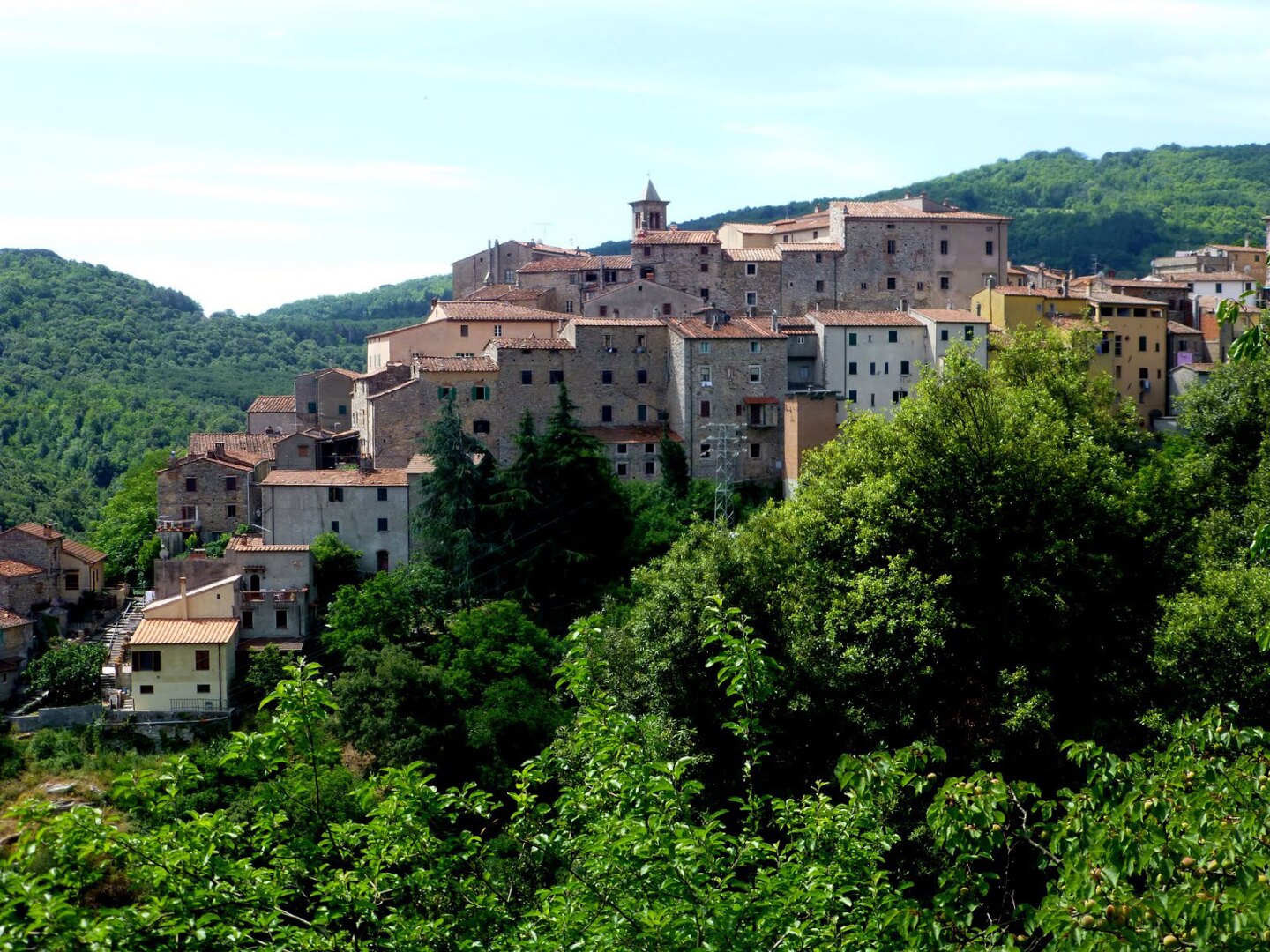
Curated for culinary and culture enthusiasts who want to tour Italy with more flexibility, Globus’ Veni, Vidi, Vici: Umbria & Tuscany By Design tour offers the best of la dolce vita. The sweetest part is the option to personalize your trip with the tour operator’s complimentary YourChoice Excursions. Soak away your cares in ancient thermal springs or embrace your inner Michelangelo while painting. Follow your nose while truffle hunting or practice your golf swings in Tuscany. Any way you slice it, this eight-day tour weaves through hilltop towns while stopping in the UNESCO World Heritage sites of Florence, Siena, and the historic Centre of Rome including the Vatican City—allowing you to say “ciao” to the heart of Italy, your way.
Uncover the essence of Morocco

Photo by Club Adventures
Destinations by DES - Desislava /Getty Images
Morocco’s diverse cultures, labyrinth-like medinas, and mysterious deserts are best explored with a knowledgeable guide. To tell these rich stories, the Morocco Uncovered tour by Club Adventures offers a two-week journey through ancient cities, bustling bazaars, and high mountain villages. Marvel at Roman ruins, awaken the senses in the souks of Marrakech and Fes, ride camels into the sunset in the Sahara Desert, and go behind the scenes of a filmmakers heaven in Ait Benhaddou.
A range of accommodations—from a traditional Berber homestay to an overnight camp amid the orange-colored Erg Chebbi sand dunes—make this tour even more memorable. As you spend your evening stargazing, sampling local cuisine, and listening to live music around an open fire, you’ll feel the warmth of Morocco deep within your soul.
Experience the best of Italy

Photo by Robert Streeter/Courtesy of Trafalgar
Planning an epic trip to Italy can be a stressful endeavor. Fortunately, Trafalgar’s Best of Italy itinerary allows you to take in the iconic sights (and some unique experiences like staying overnight in a renovated Franciscan monastery in Assisi) without a worry. The 13-day tour covers everything from the ancient treasures of Rome and the chic shores of Capri to the artisanal glass-blowing studios of Venice.
Savor fascinating stories as you enjoy a private guided visit to Pompeii, explore secret corners of the Vatican that aren’t open to the public, and join a local Cinque family for a “Be My Guest” dinner. As you tap into the freedom of a guided tour, you can simply focus on reveling in Italy’s big treasures—and all the unforgettable little moments in between.
For these tours and many others that mean expertly planned trips, access to VIP and off-the-beaten-path experiences, local and knowledgeable guides, around-the-clock service, and more, head to USTOA .

- To save this word, you'll need to log in. Log In
Definition of immersive
Examples of immersive in a sentence.
These examples are programmatically compiled from various online sources to illustrate current usage of the word 'immersive.' Any opinions expressed in the examples do not represent those of Merriam-Webster or its editors. Send us feedback about these examples.
Word History
immers(ion) + -ive
1929, in the meaning defined above
Dictionary Entries Near immersive
immersion liquid
Cite this Entry
“Immersive.” Merriam-Webster.com Dictionary , Merriam-Webster, https://www.merriam-webster.com/dictionary/immersive. Accessed 17 Sep. 2024.
Kids Definition
Kids definition of immersive.
Subscribe to America's largest dictionary and get thousands more definitions and advanced search—ad free!

Can you solve 4 words at once?
Word of the day.
See Definitions and Examples »
Get Word of the Day daily email!
Popular in Grammar & Usage
Plural and possessive names: a guide, 31 useful rhetorical devices, more commonly misspelled words, absent letters that are heard anyway, how to use accents and diacritical marks, popular in wordplay, 8 words for lesser-known musical instruments, it's a scorcher words for the summer heat, 7 shakespearean insults to make life more interesting, 10 words from taylor swift songs (merriam's version), 9 superb owl words, games & quizzes.

Free Shipping $149+ & Lifetime Warranty

- Layover Blankets
- UltraPak Mini Blankets
- Toiletry Bags
- Duffle Bags
- Travel Accessories
Cookie policy
I agree to the processing of my data in accordance with the conditions set out in the policy of Privacy.
Your cart is empty

Gravel Travel Shipping Insurance

What Is Curated Travel and How Does it Work?
- Gravel Travel
- Travel Tips
Curated travel is a more refined and personalized way of planning not just any ole trip, but an experience that you won't soon forget.
Travel curators are the brains behind the operation. They partner with a select group of hotels, restaurants, and special attractions that offer something unique, like hitching a hot air balloon ride over the temples of Myanmar.
What does this mean for the traveler? Instead of a one-size-fits-all approach, they can now have a tailor-made trip with all the bells and whistles, without having to do all the research themselves.
What Makes Curated Travel Different?
Curated trips usually stick with a theme. This could be anything from culinary to adventure or even history and culture. They also tend to work with smaller groups of travelers.
Rather than crossing off bucket-list destinations simply by showing up and moving on, a curated trip offers a more immersive experience and handles all of the logistics for you. That might mean skipping the long lines at tourist traps and getting VIP access to exclusive events and experiences.
For example, you might tag along on a Mongolian eagle hunt or catch a festival in the Gobi Desert, but you might also have a more low-key experience like retracing Jane Austen's footsteps in England. It all depends on what the curator has put together for you based on your interests.
But perhaps best of all is the level of service and support that comes with curated travel. A good curator will be with you every step of the way, from planning to booking to post-trip follow-up.
What Are Some Real-World Examples of Curated Trips?
There are a variety of ways to experience curated travel. Here are a few examples:
- A wine-tasting tour of the Napa Valley arranged by a sommelier
- A photography workshop in Iceland with a professional photographer
- A tour of New Zealand for "Lord of the Rings" enthusiasts
- A culinary tour of Italy, with visits to local artisanal cheese shops and olive oil mills
- A ski trip in the Swiss Alps, with a personal guide to help you find the best slopes and trails
To plan the perfect curated trip, it's important to know what kind of experience you're looking for and to work with a qualified travel curator who understands your specific needs and interests.

How To Find a Curated Travel Provider
Curators like Explorer X and Superfly specialize in "transformative travel," which is any travel experience that allows individuals to improve their lives in some manner.
You could also find other curated travel providers by doing a quick search online. Start by typing in "curated travel experiences for" followed by the type of adventure or experience you're interested in.
For example, if you're looking for a cultural experience, you might type in "curated travel experiences for history buffs." Another would be "curated travel experiences for foodies."
These search queries should yield a list of unique travel experiences that may be curated to some degree. Once you've found a provider you like, be sure to read reviews from previous customers to get an idea of what to expect.
Travel Gear for the Curated Trip
A travel backpack system may be all the gear you need to explore the "Avatar" mountains in China or the ancient temples of Angkor Wat in Cambodia.
Our bundle includes a 42L travel backpack , an 11L everyday carry, and a sling belt that links the two together. The sling belt can also be used as a crossbody bag or waist pack, giving you plenty of options for how to carry your gear.
The best part is that it's all convertible, so you can use the backpack as a carry-on and the smaller daypack as a personal item on the plane.
Don't forget to pack clothes for a variety of climates and activities. Curated travel often entails going off the beaten path. Ask your travel curator if they offer a packing list for your specific trip or check out our packing list for some ideas.
Finally, make sure to pack your sense of adventure and enthusiasm for a new, transformative experience! After all, the world is your oyster when it comes to curated travel. Why not make the most of it?
Know any curated trips that we left out? We'd love to hear where you've been. Let us know in the comments below!
Continue reading

This Packable Travel Laundry Bag Will Keep Your Clean and Dirty Clothes Separate
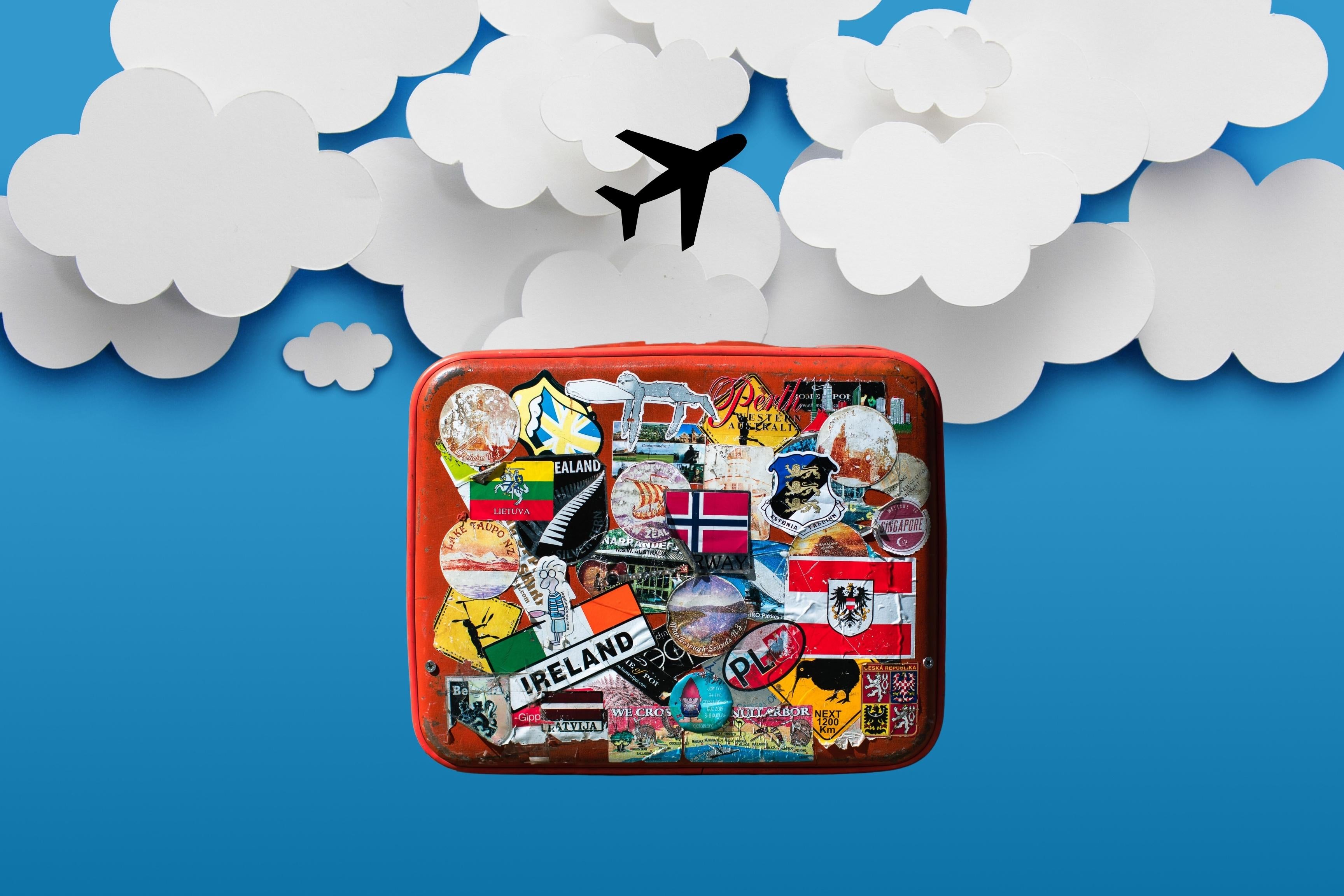
What Is a Personal Item and How Is it Different From a Carry-on Bag?
Leave a comment
All comments are moderated before being published.
This site is protected by reCAPTCHA and the Google Privacy Policy and Terms of Service apply.
Privacy Policy |
- Cambridge Dictionary +Plus
Meaning of immersive in English
Your browser doesn't support HTML5 audio
- audio described
- audio description
- break a leg idiom
- community theatre
- double bill
- nondramatic
- scenography
- theatricality
You can also find related words, phrases, and synonyms in the topics:
Examples of immersive
Translations of immersive.
Get a quick, free translation!

Word of the Day
a criminal act that results in serious damage or injury, especially murder

Treasure troves and endless supplies (Words and phrases meaning ‘source’)

Learn more with +Plus
- Recent and Recommended {{#preferredDictionaries}} {{name}} {{/preferredDictionaries}}
- Definitions Clear explanations of natural written and spoken English English Learner’s Dictionary Essential British English Essential American English
- Grammar and thesaurus Usage explanations of natural written and spoken English Grammar Thesaurus
- Pronunciation British and American pronunciations with audio English Pronunciation
- English–Chinese (Simplified) Chinese (Simplified)–English
- English–Chinese (Traditional) Chinese (Traditional)–English
- English–Dutch Dutch–English
- English–French French–English
- English–German German–English
- English–Indonesian Indonesian–English
- English–Italian Italian–English
- English–Japanese Japanese–English
- English–Norwegian Norwegian–English
- English–Polish Polish–English
- English–Portuguese Portuguese–English
- English–Spanish Spanish–English
- English–Swedish Swedish–English
- Dictionary +Plus Word Lists
- English Adjective
- Translations
- All translations
To add immersive to a word list please sign up or log in.
Add immersive to one of your lists below, or create a new one.
{{message}}
Something went wrong.
There was a problem sending your report.
Notifications Center
Download the official FC Barcelona App
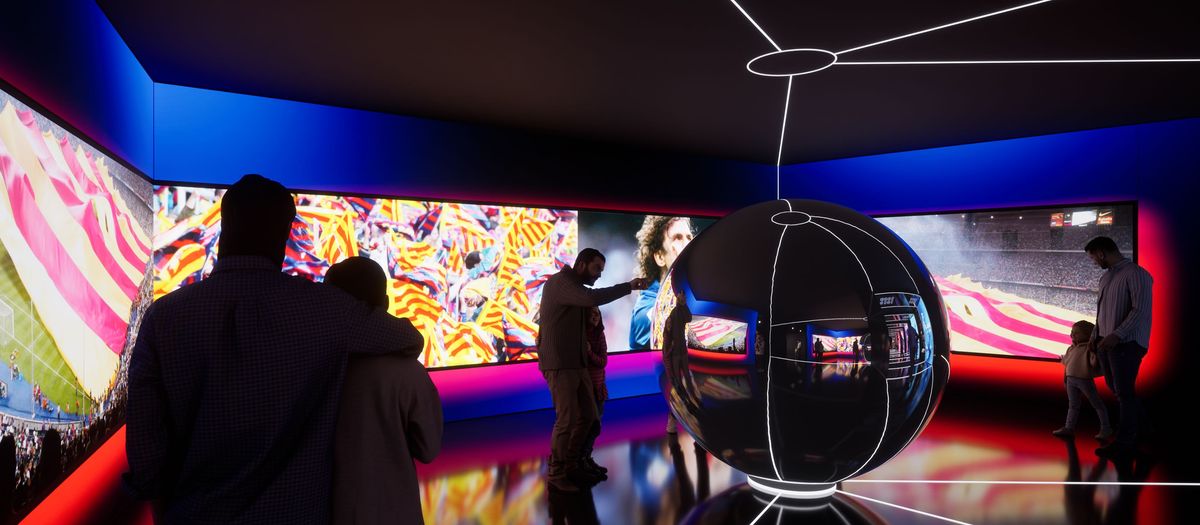
TOTAL XPERIENCE
New Museum! BARÇA IMMERSIVE TOUR now available
What does it include?
- Museum + Digital Audio Guide
- Construction Viewpoint
- Robokeeper 3 shot
- Shirt customization at Barça Store
- Digital memory of the visit
- Barça Virtual Dream

- 50% off with the code: MERCE50 for visits from September 20 to 24
FLEXIBLE BASIC TICKET
- Ideal as a gift
- Choose other extras during the checkout process
- Valid until 12/31/2024
VIRTUAL XPERIENCE
BASIC TICKET
COME AND VISIT THE BARÇA IMMERSIVE TOUR
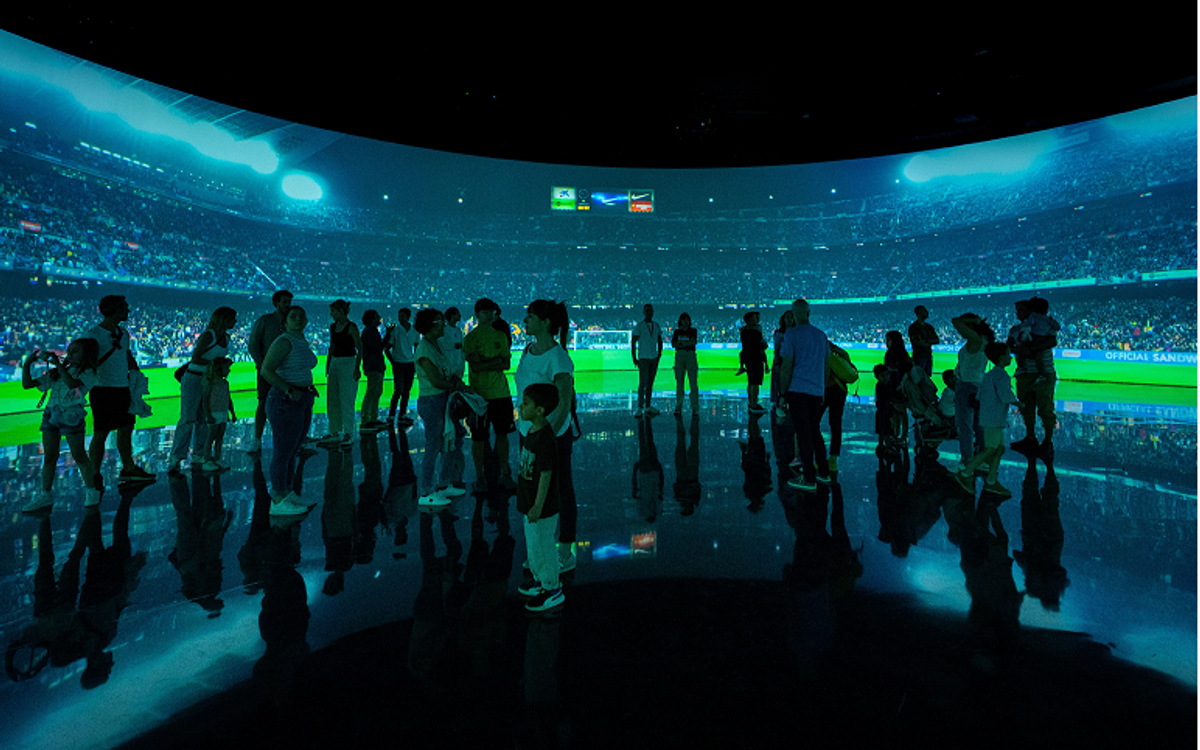
BARÇA IMMERSIVE TOUR ACCESS
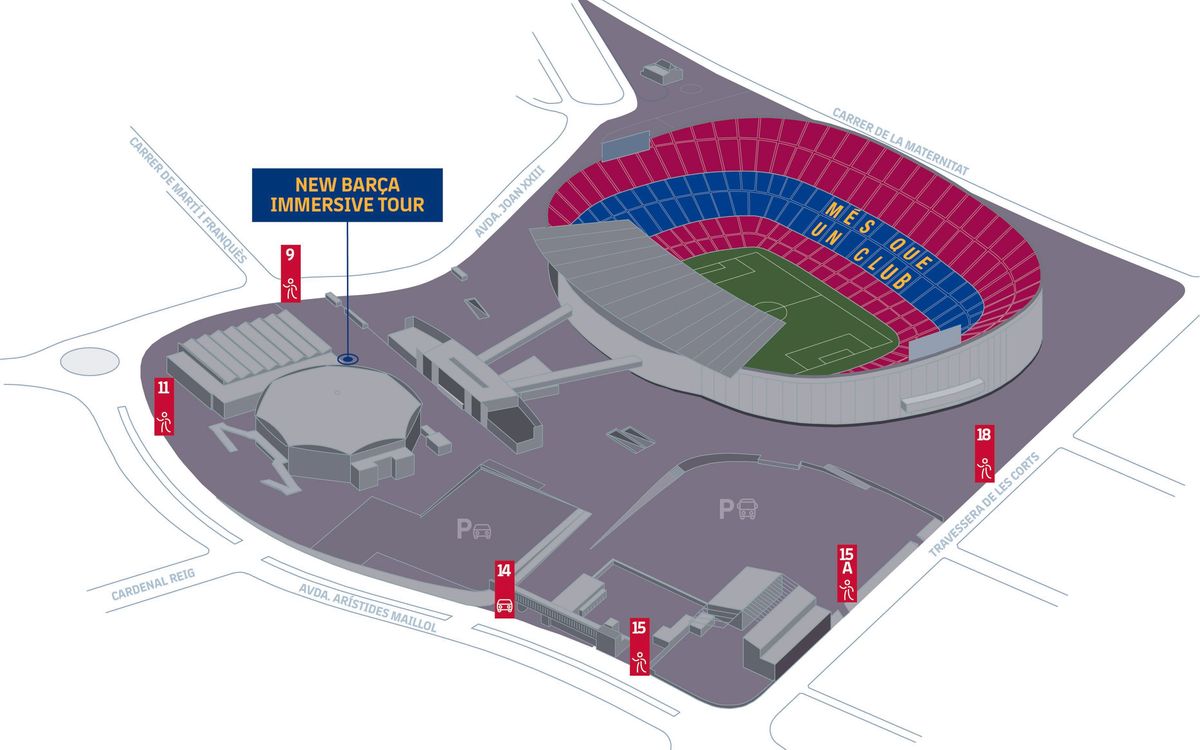
Barça Immersive Tour Image Gallery
- facebook FC Barcelona @fcbarcelona
- twitter FC Barcelona @fcbarcelona
- youtube FC Barcelona Youtube
- instagram FC Barcelona @fcbarcelona
- tiktok FC Barcelona Tik Tok
- spotify FC Barcelona Spotify
- discord FC Barcelona Discord
- Legal Terms
- Privacy Policy
- Accessibility
- Support/FAQs
Related to this article
Share video, related fc barcelona.

IMAGES
VIDEO
COMMENTS
Defining Immersion Travel. Immersion travel can be described as having intimate, local interactions and authentic cultural experiences. A traveler wishing to be immersed into a particular place or destination is likely to go deeper than the average tourist while also giving back to the local community. "Go deeper & give back".
Why Slow Tourism is Becoming More Relevant in 2023. In recent years immersive travel, also sometimes referred to as slow tourism, has been on an incline, mostly due to travelers having a deeper desire to seek more meaningful and authentic travel experiences that align with their values and interests. Especially after 2020, people began to have ...
Experiential travel usually delves deeper into a given destination, ensuring visitors can experience it as authentically as possible. As such, tours tend to focus on less-touristy spots. Since the ...
What is Cultural Travel? Or immersive travel. It's one and the same. Cultural travel is the right way to travel. & before you argue that there is no right way to travel…let me stop you right there.Because there is. "Do we really want to travel in hermetically sealed popemobiles through the rural provinces of France, Mexico and the Far East, eating only in Hard Rock Cafes and McDonalds ...
Immersive tourism includes sensory types of experiences that amaze, excite, and teach visitors the essence of the destination's brand. This type of tourism has to go beyond show and tell. Anyone can sip samples at a winery, but what if you sipped while you …. Learned about the vineyard's history. Met the owner and the winemakers.
Top Tips for a Successful Culturally Immersive Experience. Learn the Local Language. Respect Local Traditions and Etiquette. Engage with Local Communities. Eat Local Cuisine. Learn through Experiences. Reflect on Your Travel Experience. Cultural Immersion: Final Thoughts. Try These Immersive Travel Experiences.
There are plenty of reasons why immersive travel is the best way to see the world, though: you help boost micro-economies and you get to create the kind of travel encounters that extend far beyond ...
An immersive theater experience breaks apart the usual idea of a play being set on a stage in front of you, with actors playing all the characters. Instead, you might take on the role of the character, or the "stage" might be all around you. You might be able to walk around and explore the production, with events happening in a spontaneous ...
No, I don't necessarily mean solo. I just mean without a big, organized tour. While there are some grassroots tour companies that do provide immersive travel experiences, these are far and few between. For the most part, having a tour guide 24/7 or a driver will undoubtedly put up a wall between you and most locals.
What is Immersive Travel? A friend quizzed me recently on the differences between immersive travel and standard-issue travel. I said that immersive travel allows you to see a place for the values that shape its culture, while simply visiting a place shows you only the well-manicured, postcard version of it. That makes sense though.
Experiential travel, also known as immersion travel, is a form of tourism in which people focus on experiencing a country, city or particular place by actively and meaningfully engaging with its history, people, culture, food and environment. [1] It can often be transformative. [2] Therewith the concept is based on very similar mechanisms as for example experiential education, experiential ...
Immersive programs and experiences should provide the opportunity to get into the heads of locals, observe their day-to-day lives, and try to understand the differences between you and them, which can change between cities or even neighborhoods. Explore the same hangout spots, TV shows, grocery stores, and community events.
Experiential travel is a travel method that has been talked about for decades but has become increasingly popular over the last few years. It's essentially a way of traveling that allows you to really dig deep into the local culture and fully experience every new place you visit. Experiential tourism is mostly focused on experiences as ...
Travelers can tour Green Island with the Wunyami Cultural Tour, seeing the island through different eyes as they learn about the ceremonies of the GuruGulu Gungganji and Gimuy Yidinji tribes. Or go on a variety of different tours with 100-percent Indigenous owned and operated Mandingalbay Ancient Indigenous Tours, which offers a monthly Full ...
Live immersive work can be encountered in a variety of ways; unexpectedly in public locations, privately in transit, in shipping containers, underground bunkers and labyrinthine vaults, walking across moors, or as game-play. It might be experienced in the comfort of your own home, where you're cast as protagonist in, or voyeur of, your own ...
An immersive experience fully engages an individual's senses and attention, often through VR, AR, or 360-degree videos. It makes users feel as if they are part of a different reality, enhancing their interaction with the environment through technology, creating a deep sense of presence and engagement.
Morocco's diverse cultures, labyrinth-like medinas, and mysterious deserts are best explored with a knowledgeable guide. To tell these rich stories, the Morocco Uncovered tour by Club Adventures offers a two-week journey through ancient cities, bustling bazaars, and high mountain villages. Marvel at Roman ruins, awaken the senses in the souks ...
The meaning of IMMERSIVE is providing, involving, or characterized by deep absorption or immersion in something (such as an activity or a real or artificial environment). ... — Ed Masley, The Arizona Republic, 6 Sep. 2024 Thursday At 1pm, head to Mission San Juan for a free immersive agricultural tour and an acequia demonstration.
Curated travel is a more refined and personalized way of planning not just any ole trip, but an experience that you won't soon forget. Travel curators are the brains behind the operation. They partner with a select group of hotels, restaurants, and special attractions that offer something unique, like hitching a hot air balloon ride over the ...
A virtual tour is a digital way to explore real places using videos, images, and other multimedia elements. The main types are video tours, 360° panoramic tours, still photo tours, and floor plan tours. Virtual tours involve combining visuals like photos and videos with interactive features to let users explore different views of a place.
IMMERSIVE definition: 1. seeming to surround the audience, player, etc. so that they feel completely involved in…. Learn more.
Virtual tour. A virtual tour is a simulation of an existing location, usually composed of a sequence of videos, still images or 360-degree images. It may also use other multimedia elements such as sound effects, music, narration, text and floor map. It is distinguished from the use of live television to affect tele-tourism.
COME AND VISIT THE BARÇA IMMERSIVE TOUR. For the upcoming years, the new BARÇA IMMERSIVE TOUR will open alongside the building of the future Spotify Camp Nou and will be the main space from ...